Peter Friedl
10 July - 29 August 2020
Peter Friedl was born in Oberneukirchen, Austria, in 1960, and currently lives and works in Berlin. Since the early nineties, he has been building up a heterogeneous body of work (photography, painting, video, drawing, text) with a strong component of social and political critique. Friedl draws attention to the conflicts between contemporary politics and aesthetic narrative. He often turns to genres (tableaux vivant, documents) and subject matter (childhood, social exclusion) that are undervalued in the modern artistic tradition, and uses displacement and overexposure to challenge accepted systems of representation. Friedl pushes the boundaries of genres and codes for purposes that are clearly critical. He is best known for the photographic works he produced in South Africa, Haiti, Brazil and other places that were the scenes of Europe’s colonial past, and for his work based on American philosopher John Rawls’ theory of justice. He has published numerous essays and critical texts on theatre and aesthetics.
MDF, Plexiglas, polystyrene, polyurethane resin, PVC, steel, acrylic paint
11,3 x 33,3 x 10,5 cm
table: 100 x 60 x 60 cm
Formica, MDF, wood, brass, Plexiglas, polyurethane resin, PVC, acrylic paint
11,5 x 34,4 x 26 cm
table: 100 x 60 x 60 cm
ABS, polyurethane resin, PVC, stainless steel, wood, acrylic paint; table: steel, painted plywood
21 × 30 × 24 cm; table: 100 × 60 × 60 cm
MDF, Plexiglas, polystyrene, polyurethane resin, PVC, wood, acrylic paint; tables: steel, painted plywood
16 × 31 × 22 cm
table: 100 × 60 × 60 cm
MDF, Plexiglas, polyurethane resin, PVC, wood, acrylic paint; tables: steel, painted plywood
18 × 45,5 × 45,5 cm
table: 100 × 60 × 60 cm
MDF, Plexiglas, polystyrene, polyurethane resin, PVC, watercolor, acrylic paint; tables: steel, painted plywood
27,5 × 13 × 30 cm
table: 100 × 60 × 60 cm
Single-channel HD video installation, color, sound, 32:03 min., loop
Edition of 4
Single-channel video installation, color, sound, 5:53 min., loop
Edition of 4
Video, color, sound
2:12 min., loop
Edition of 4
Video, color, sound, 1:11 min., loop
Edition of 3 + 1 AP
Video, color, sound
3:57 min., loop
Edition of 3
Video, color, sound
1:05 min., loop
Edition: 3
(12 Juli 2014)
Watercolor, ink, pencil
29,7 × 21,1 cm
Ink, pencil
30,1 × 21,2 cm
Ink, marker
21 × 15 cm
Ballpoint pen, ink
21 × 29,8 cm
Ink on paper
21 × 27,9 cm
Ballpoint pen, colored pencil, watercolor
20,1 × 29 cm
Marker, vegetable color prints
25 × 19,8 cm
Pencil
8,9 × 14 cm
Pencil, ink
13,9 × 8,8 cm
Watercolor, ballpoint pen, pencil
29,1 × 20,9 cm
Pencil, watercolor
27,9 x 20,3 cm
Watercolor, felt tip pen
20,8 × 12,2 cm
Color photograph
30 x 45 cm
Edition of 3
Color photograph
80 x 120 cm
Edition of 3
Color photograph
80 × 80 cm
Edition of 6
Color photograph
80 x 120 cm
Edition of 3
Offset print on paper
8 parts, 237 × 336 cm
Edition of 12
Computer animation, 4:15 min., loop
Edition of 3
Silkscreen on paper, 8 parts
233 x 334 cm
Black & white photograph
40 × 40 cm
Frame: 50 × 50 cm
MDF, Plexiglas, polystyrene, polyurethane resin, PVC, steel, acrylic paint
11,3 x 33,3 x 10,5 cm
table: 100 x 60 x 60 cm
Formica, MDF, wood, brass, Plexiglas, polyurethane resin, PVC, acrylic paint
11,5 x 34,4 x 26 cm
table: 100 x 60 x 60 cm
ABS, polyurethane resin, PVC, stainless steel, wood, acrylic paint; table: steel, painted plywood
21 × 30 × 24 cm; table: 100 × 60 × 60 cm
MDF, Plexiglas, polystyrene, polyurethane resin, PVC, wood, acrylic paint; tables: steel, painted plywood
16 × 31 × 22 cm
table: 100 × 60 × 60 cm
MDF, Plexiglas, polyurethane resin, PVC, wood, acrylic paint; tables: steel, painted plywood
18 × 45,5 × 45,5 cm
table: 100 × 60 × 60 cm
MDF, Plexiglas, polystyrene, polyurethane resin, PVC, watercolor, acrylic paint; tables: steel, painted plywood
27,5 × 13 × 30 cm
table: 100 × 60 × 60 cm
Single-channel HD video installation, color, sound, 32:03 min., loop
Edition of 4
Single-channel video installation, color, sound, 5:53 min., loop
Edition of 4
Video, color, sound
2:12 min., loop
Edition of 4
Video, color, sound, 1:11 min., loop
Edition of 3 + 1 AP
Video, color, sound
3:57 min., loop
Edition of 3
Video, color, sound
1:05 min., loop
Edition: 3
(12 Juli 2014)
Watercolor, ink, pencil
29,7 × 21,1 cm
Ink, pencil
30,1 × 21,2 cm
Ink, marker
21 × 15 cm
Ballpoint pen, ink
21 × 29,8 cm
Ink on paper
21 × 27,9 cm
Ballpoint pen, colored pencil, watercolor
20,1 × 29 cm
Marker, vegetable color prints
25 × 19,8 cm
Pencil
8,9 × 14 cm
Pencil, ink
13,9 × 8,8 cm
Watercolor, ballpoint pen, pencil
29,1 × 20,9 cm
Watercolor, felt tip pen
20,8 × 12,2 cm
Pencil, watercolor
27,9 x 20,3 cm
Color photograph
30 x 45 cm
Edition of 3
Color photograph
80 x 120 cm
Edition of 3
Color photograph
80 × 80 cm
Edition of 6
Color photograph
80 x 120 cm
Edition of 3
Offset print on paper
8 parts, 237 × 336 cm
Edition of 12
Computer animation, 4:15 min., loop
Edition of 3
10 July - 29 August 2020
Read more9 January - 21 February 2015
Read more7 November - 27 December 2014
Read more12 January - 26 February 2011
Read more6 January - 18 February 2006
Read more6 February - 29 March 2003
Read more25 January - 3 March 2001
Read more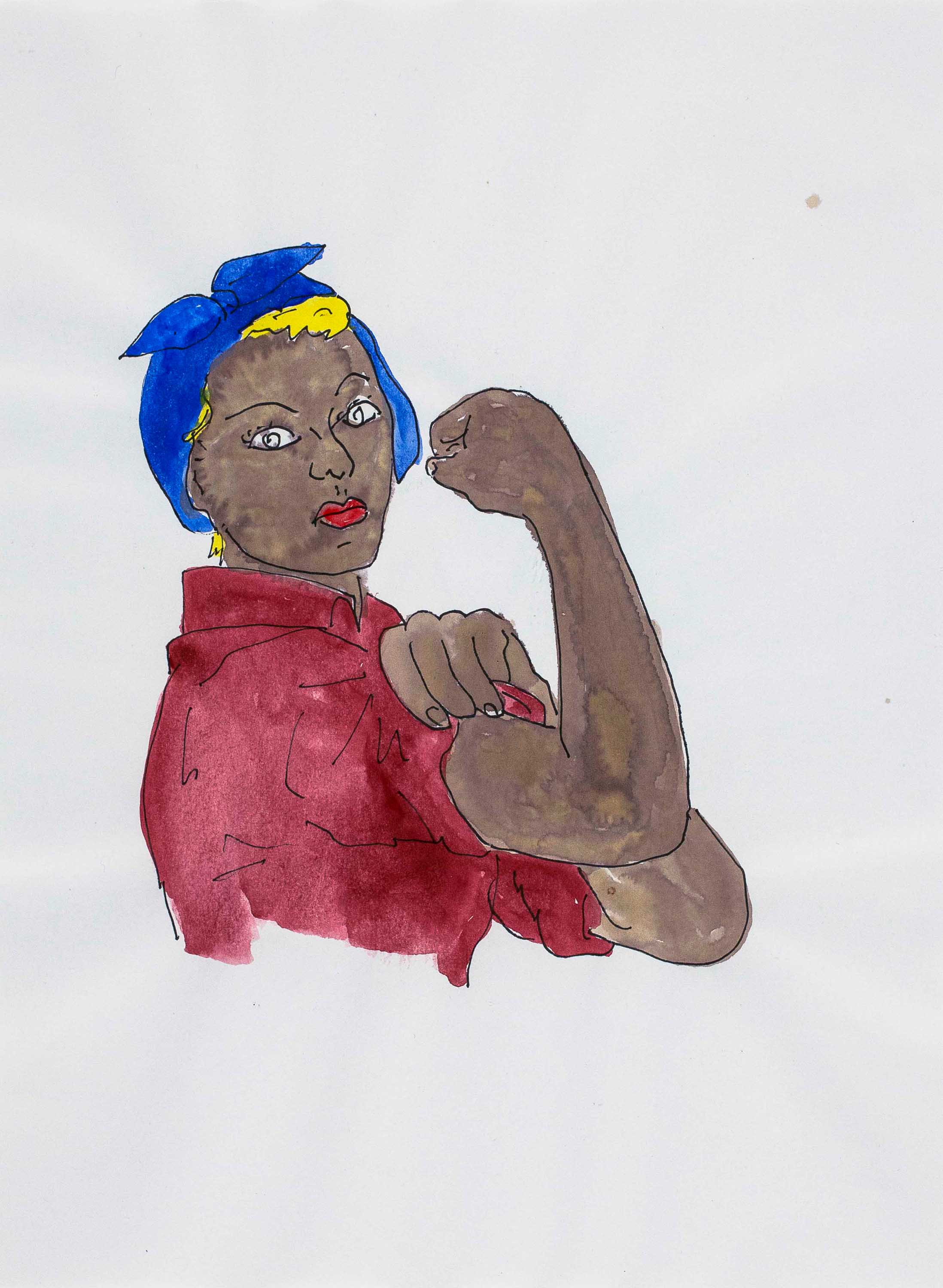
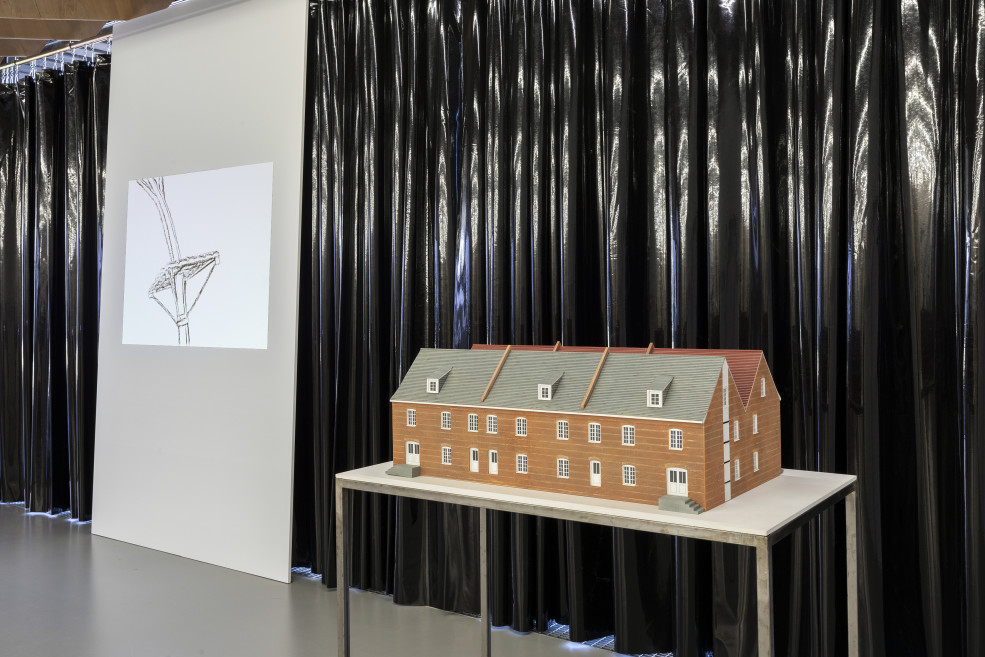
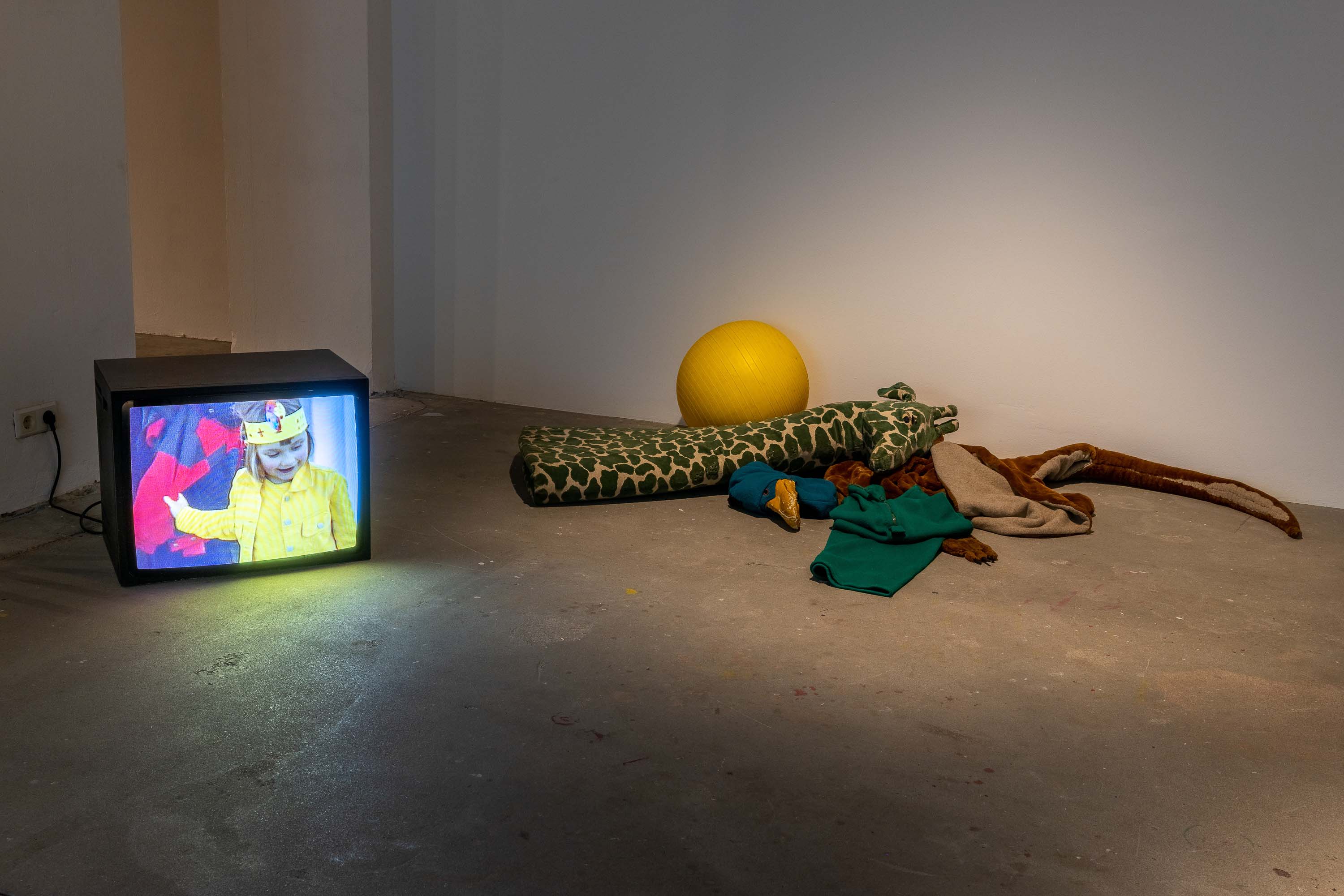
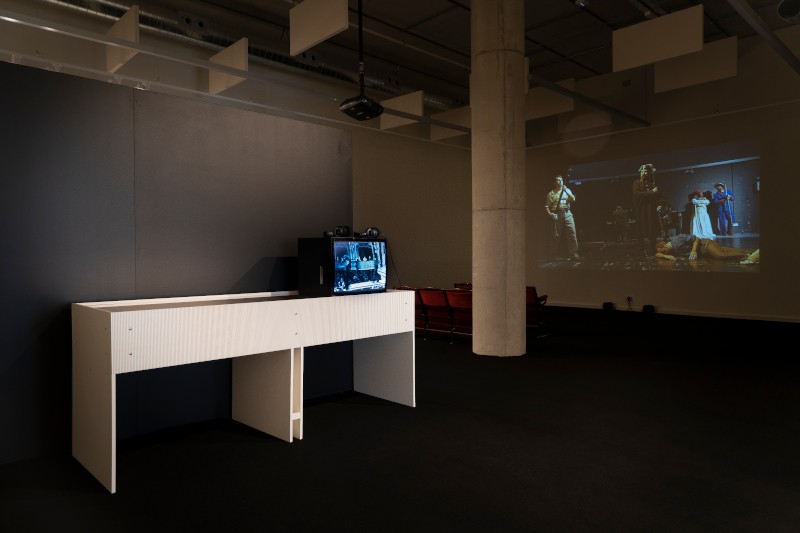
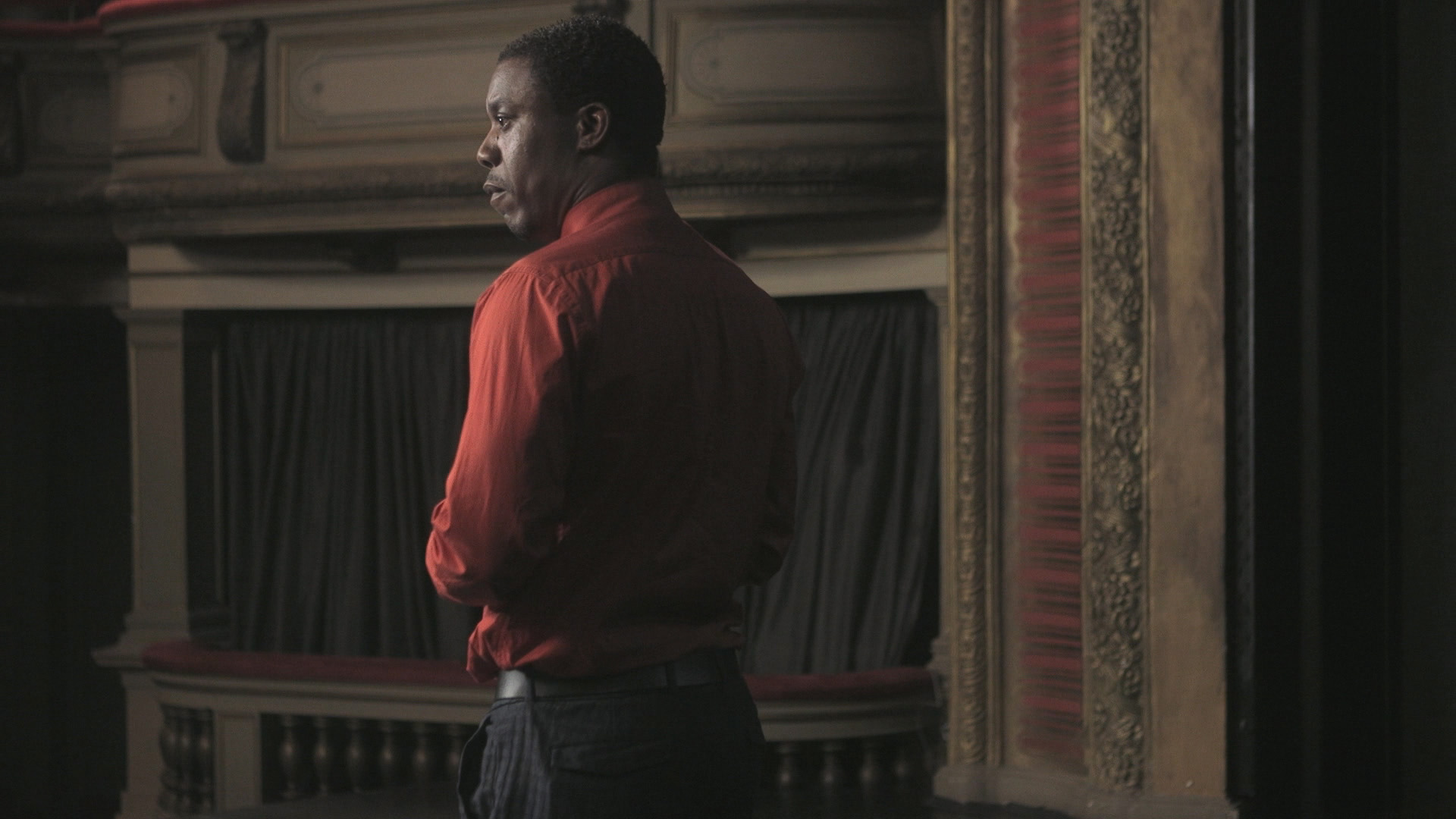
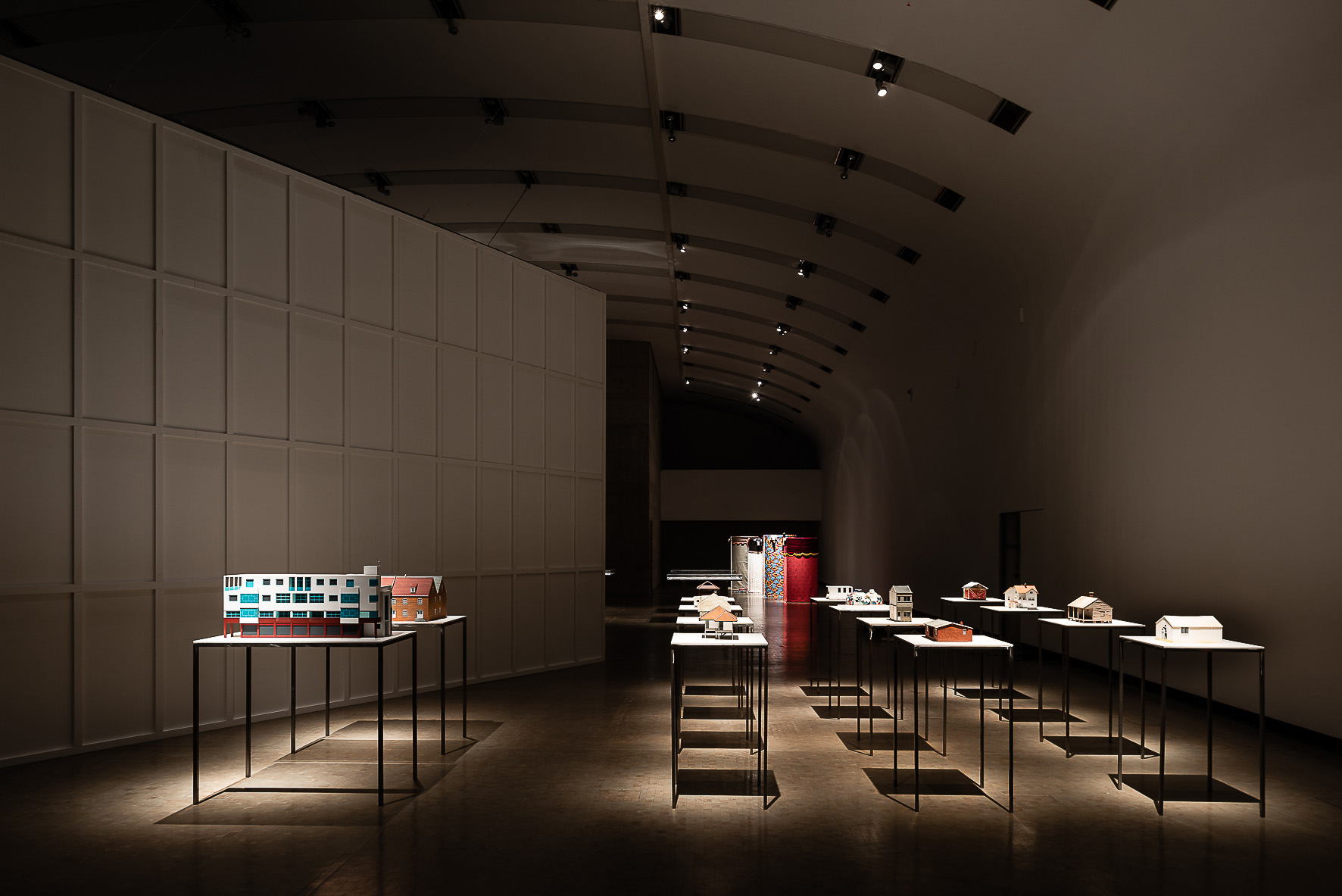

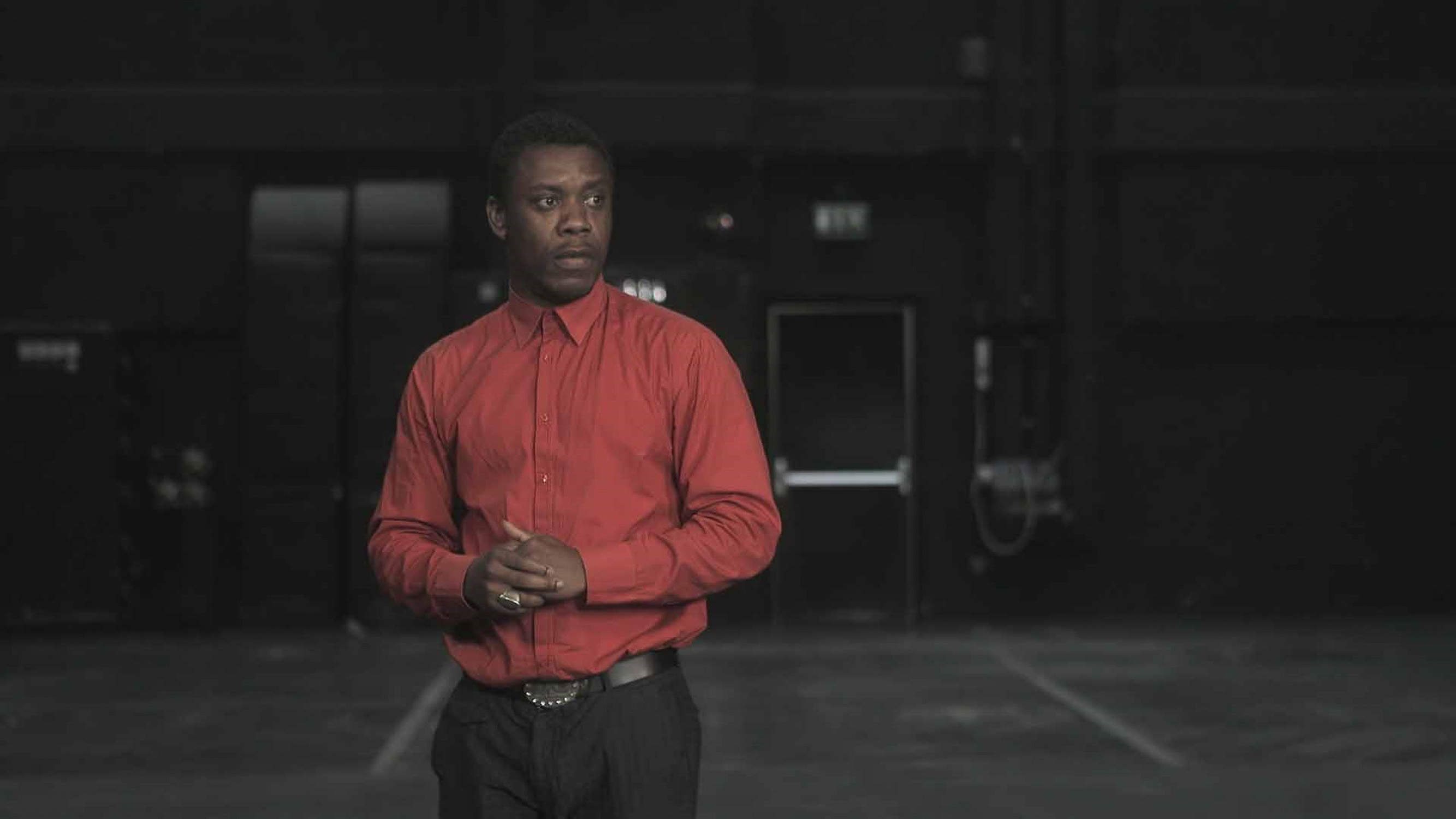
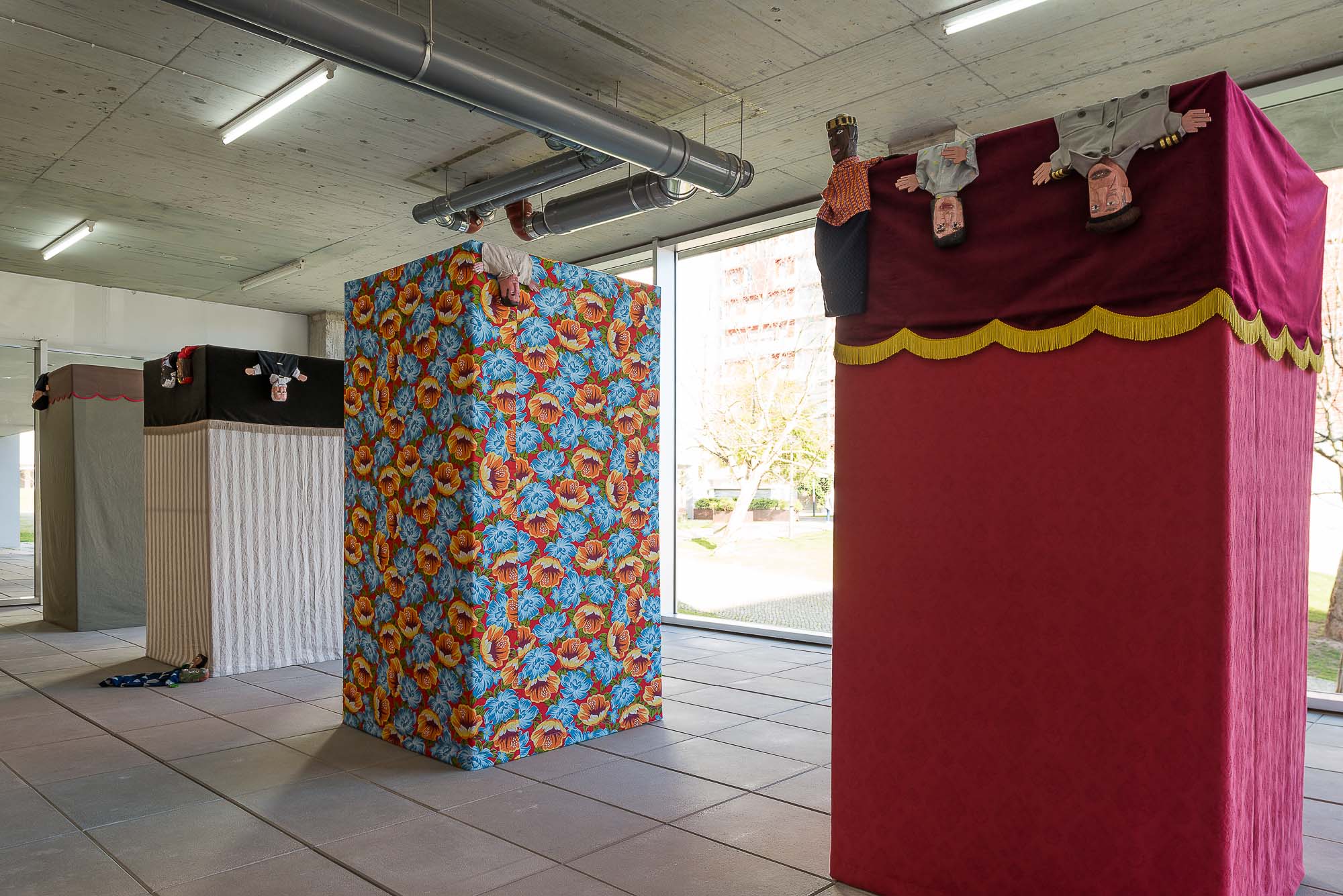
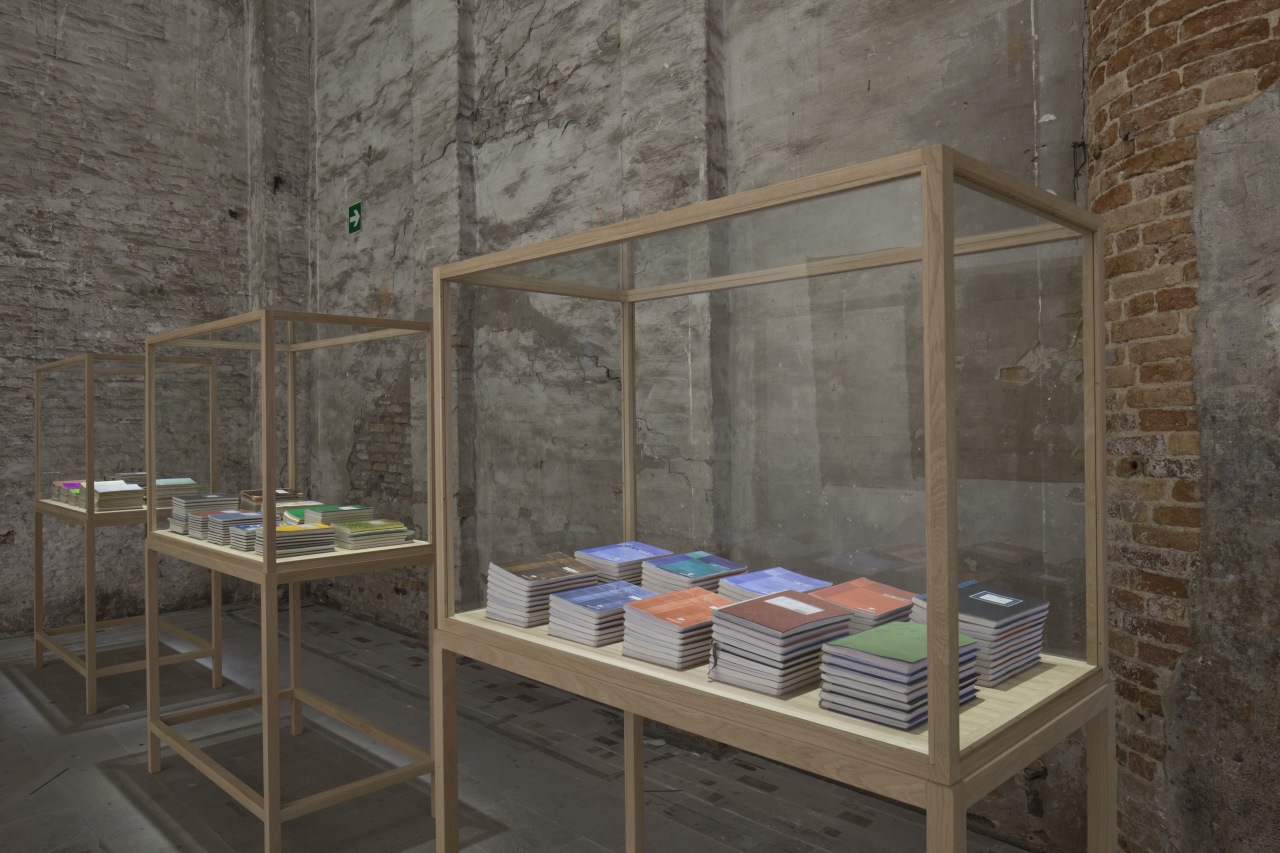
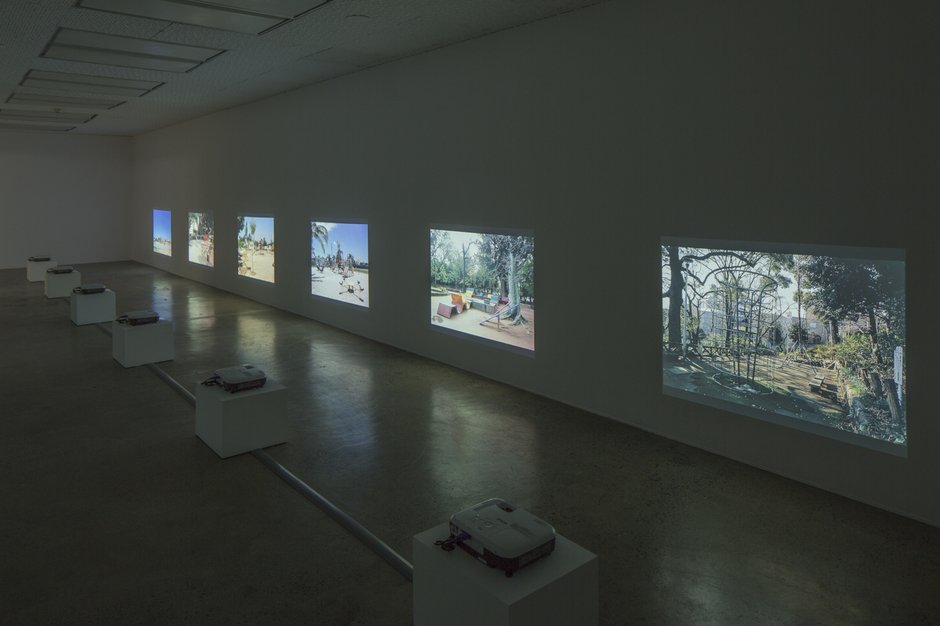
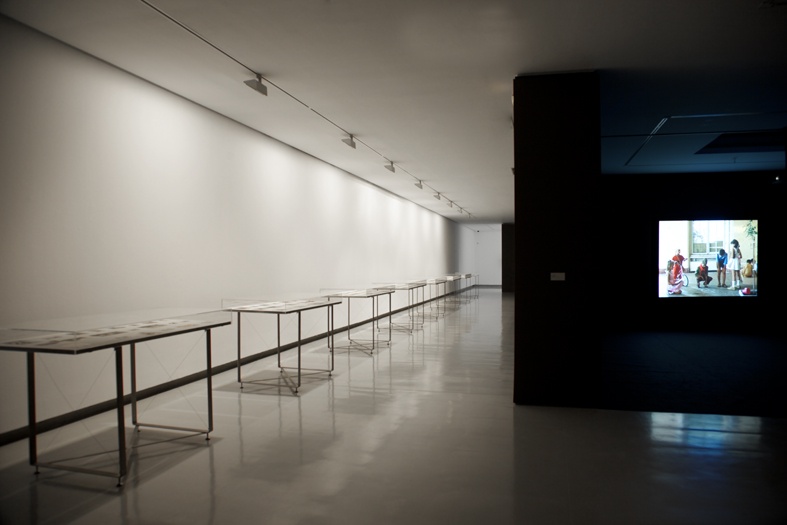
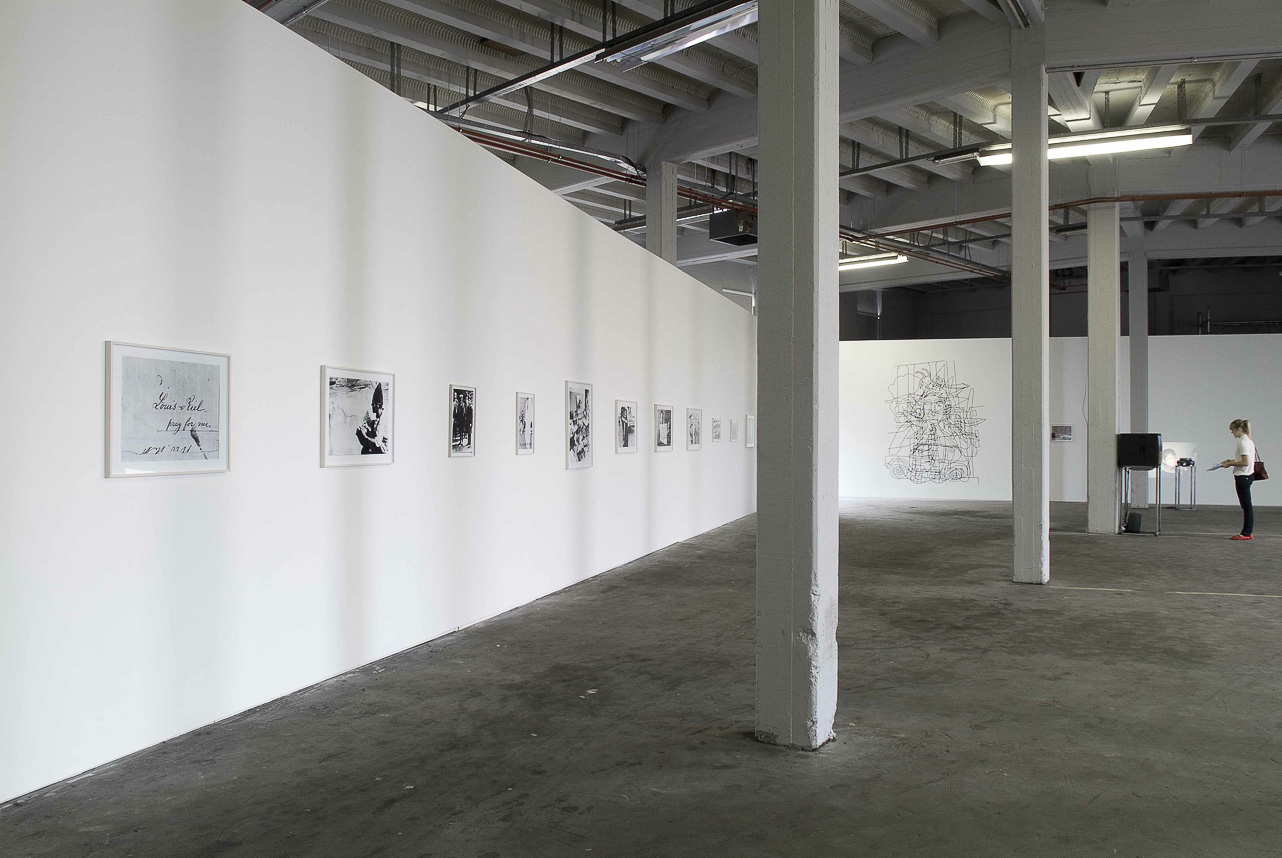
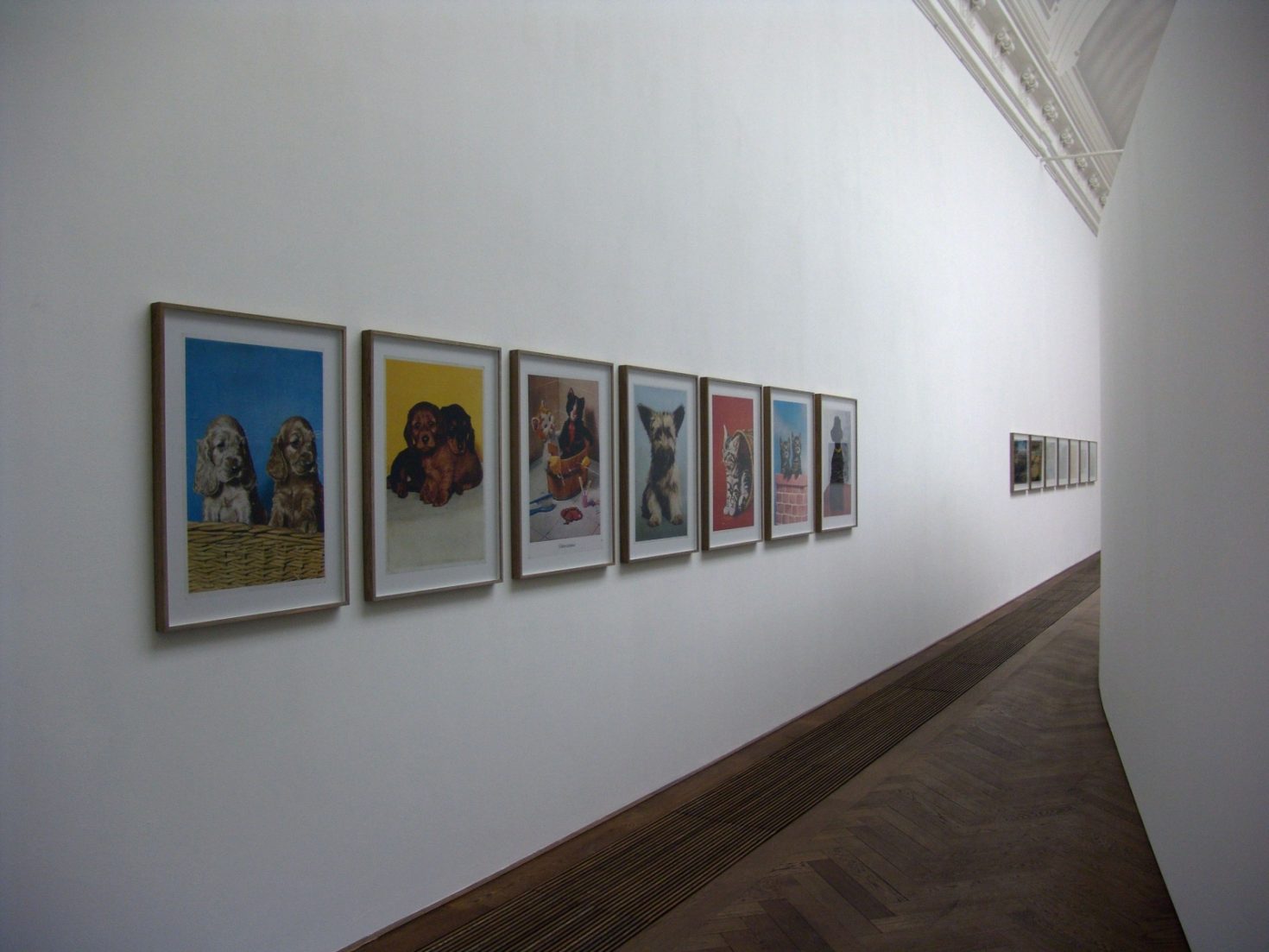
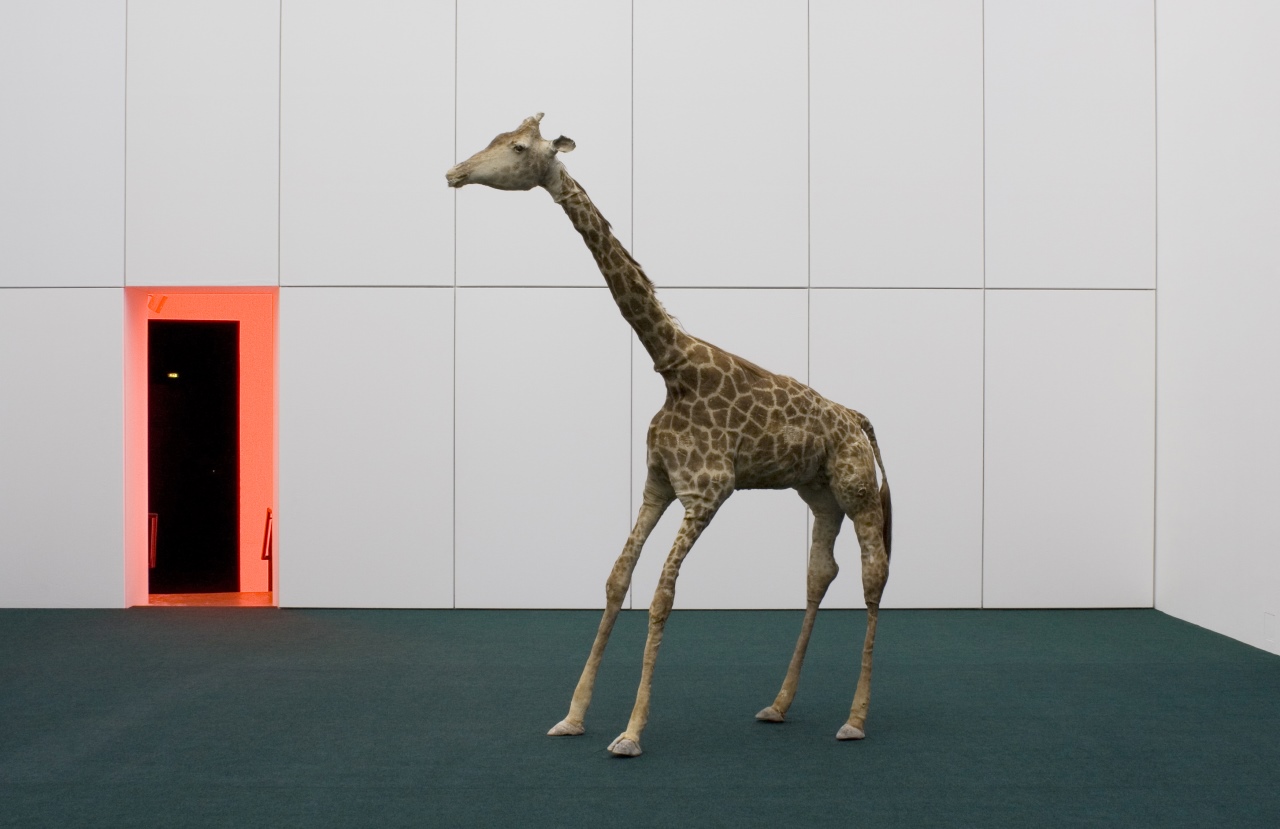
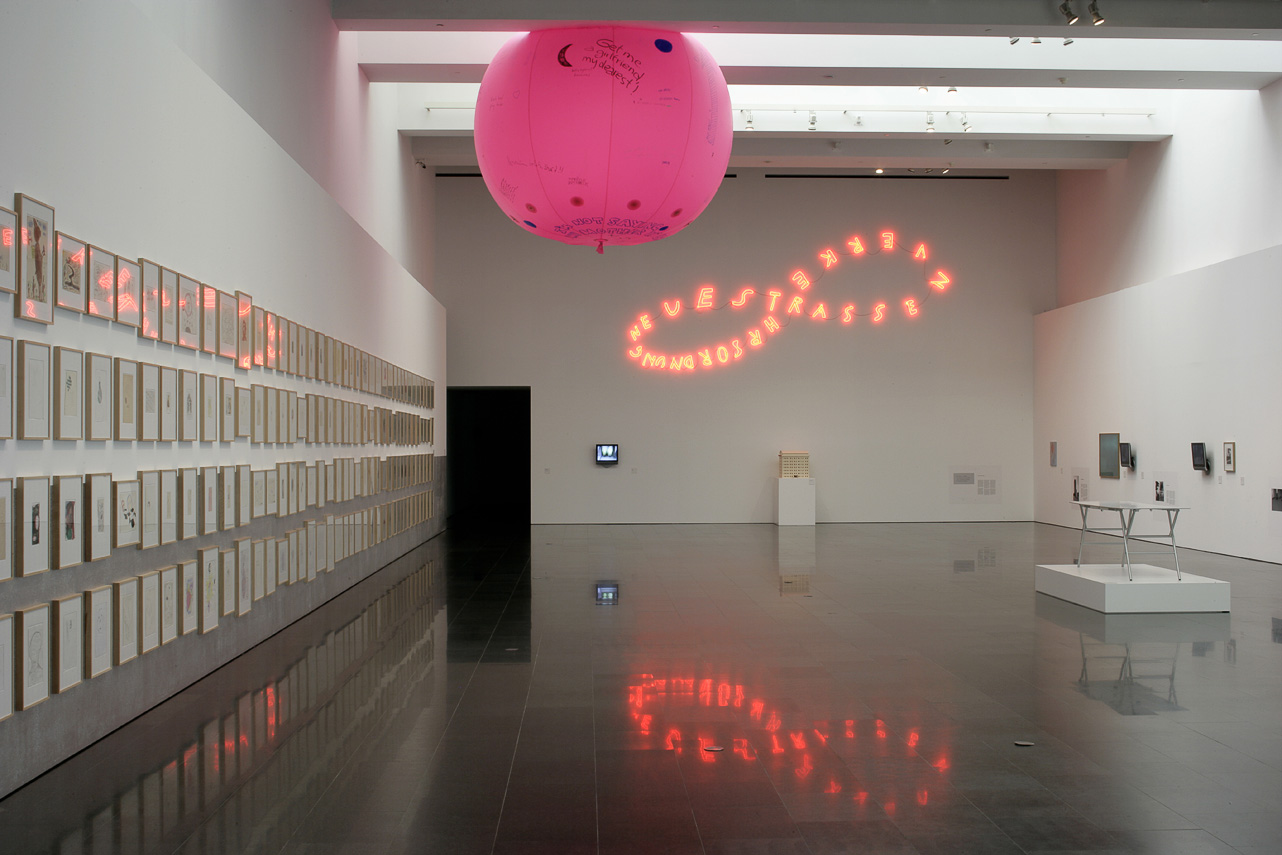
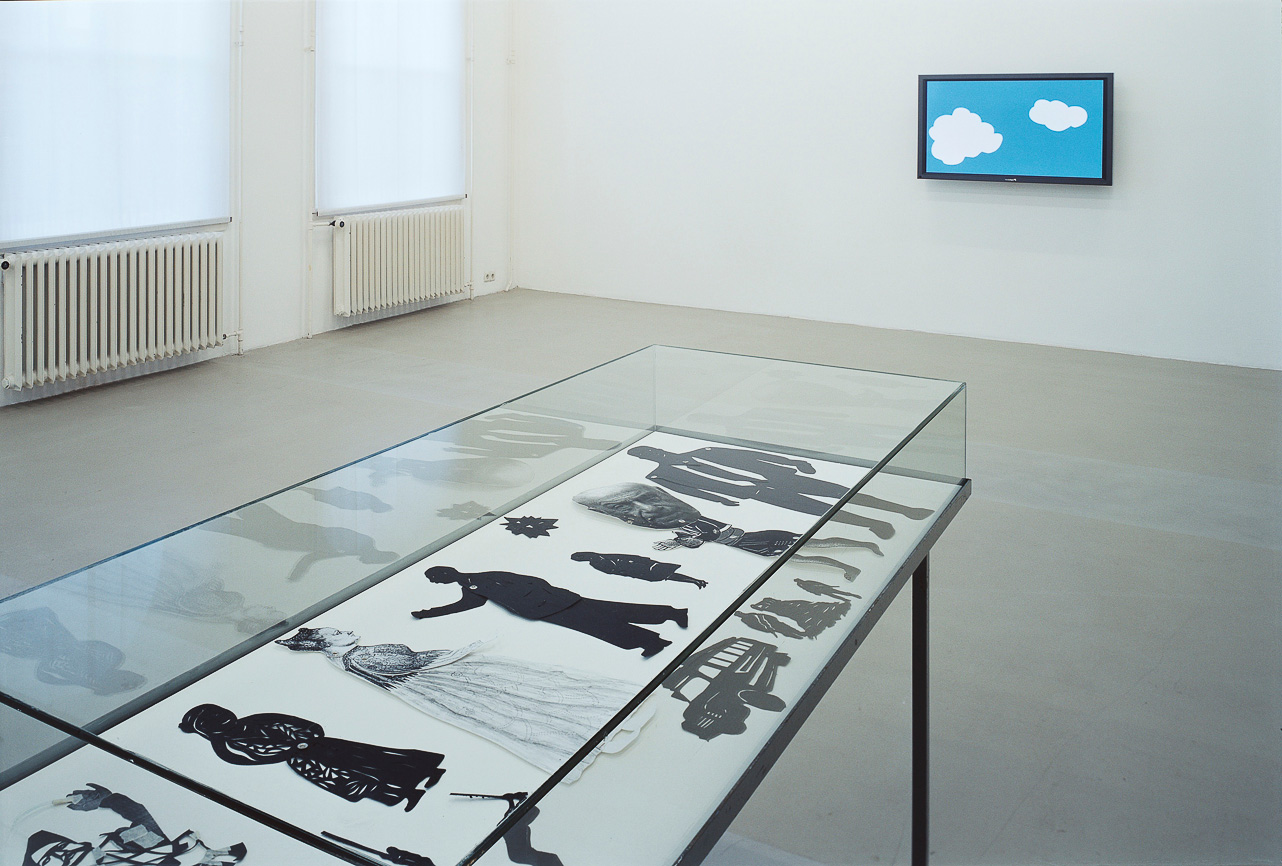
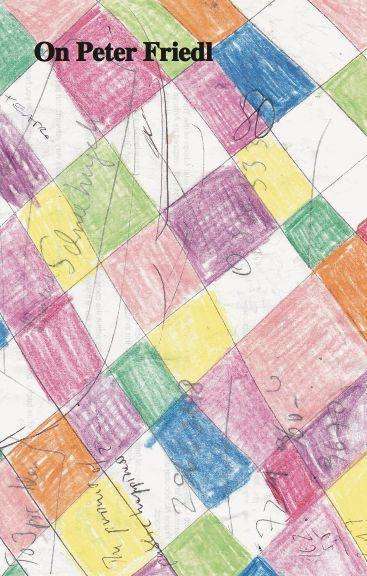
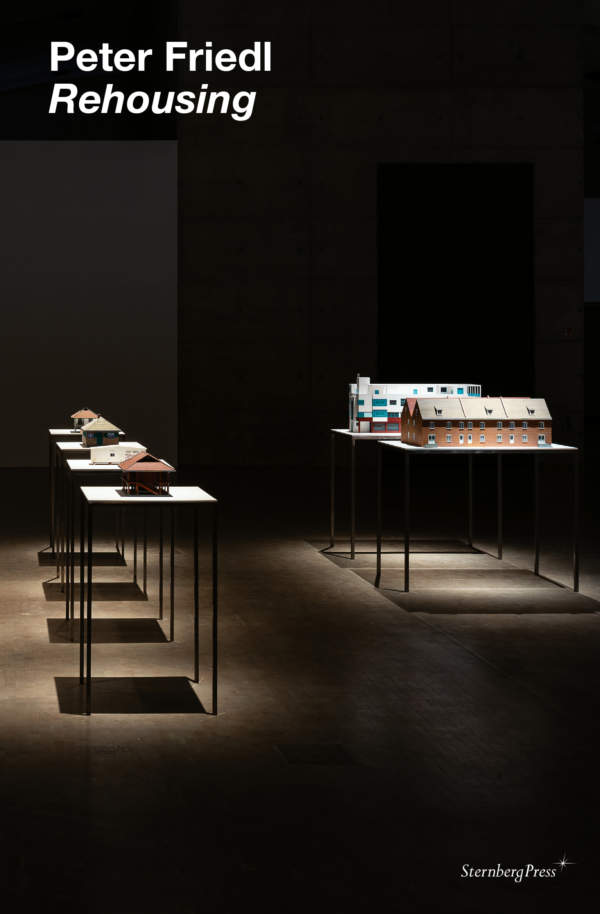
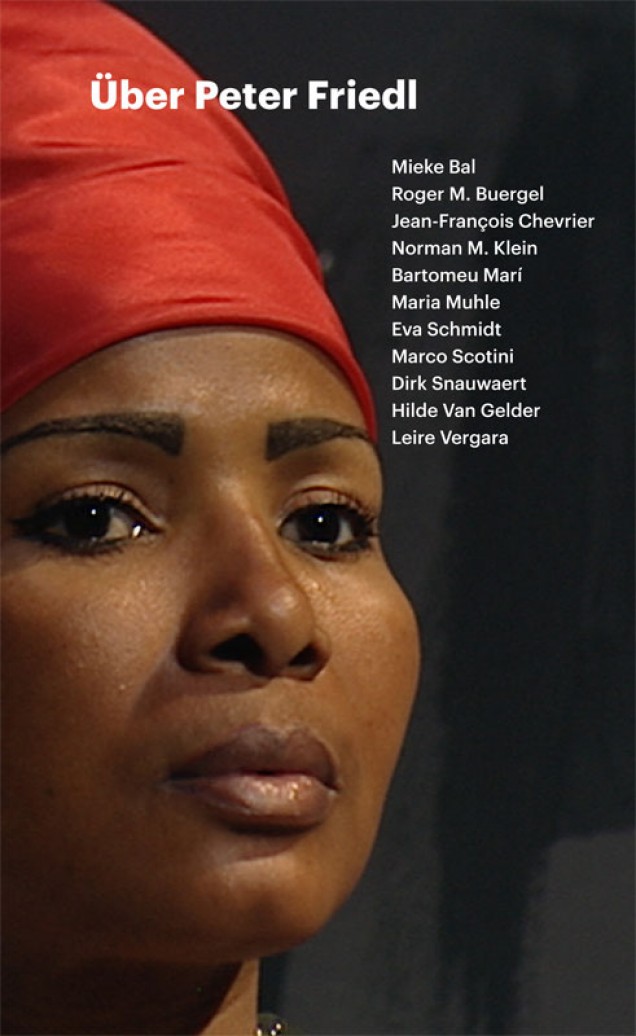
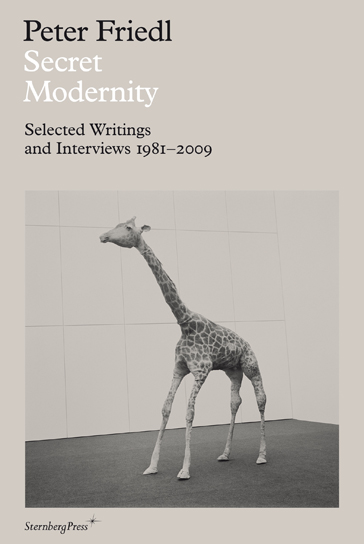
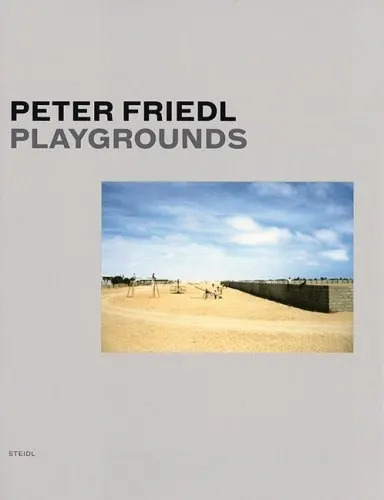

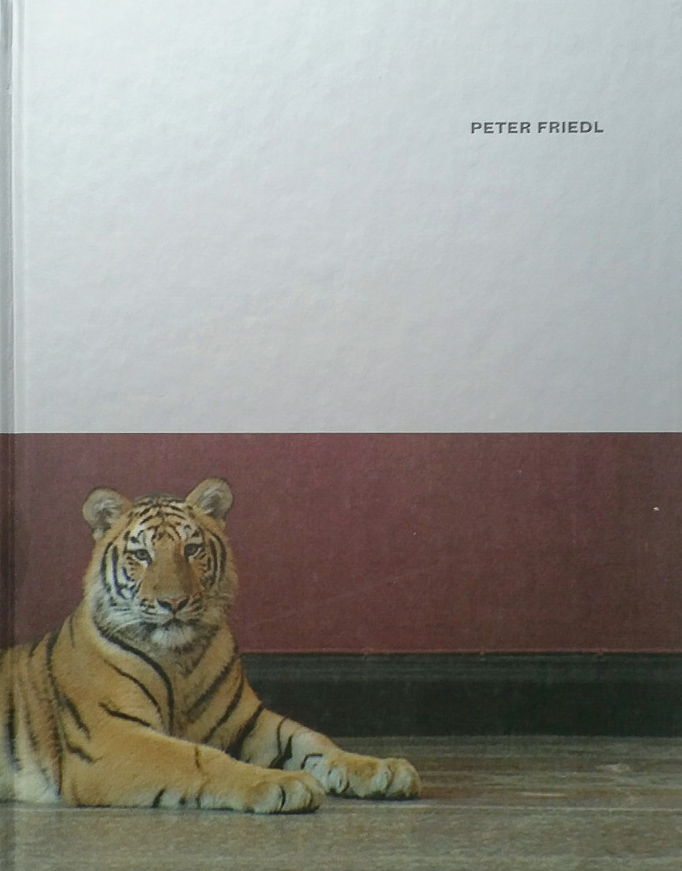
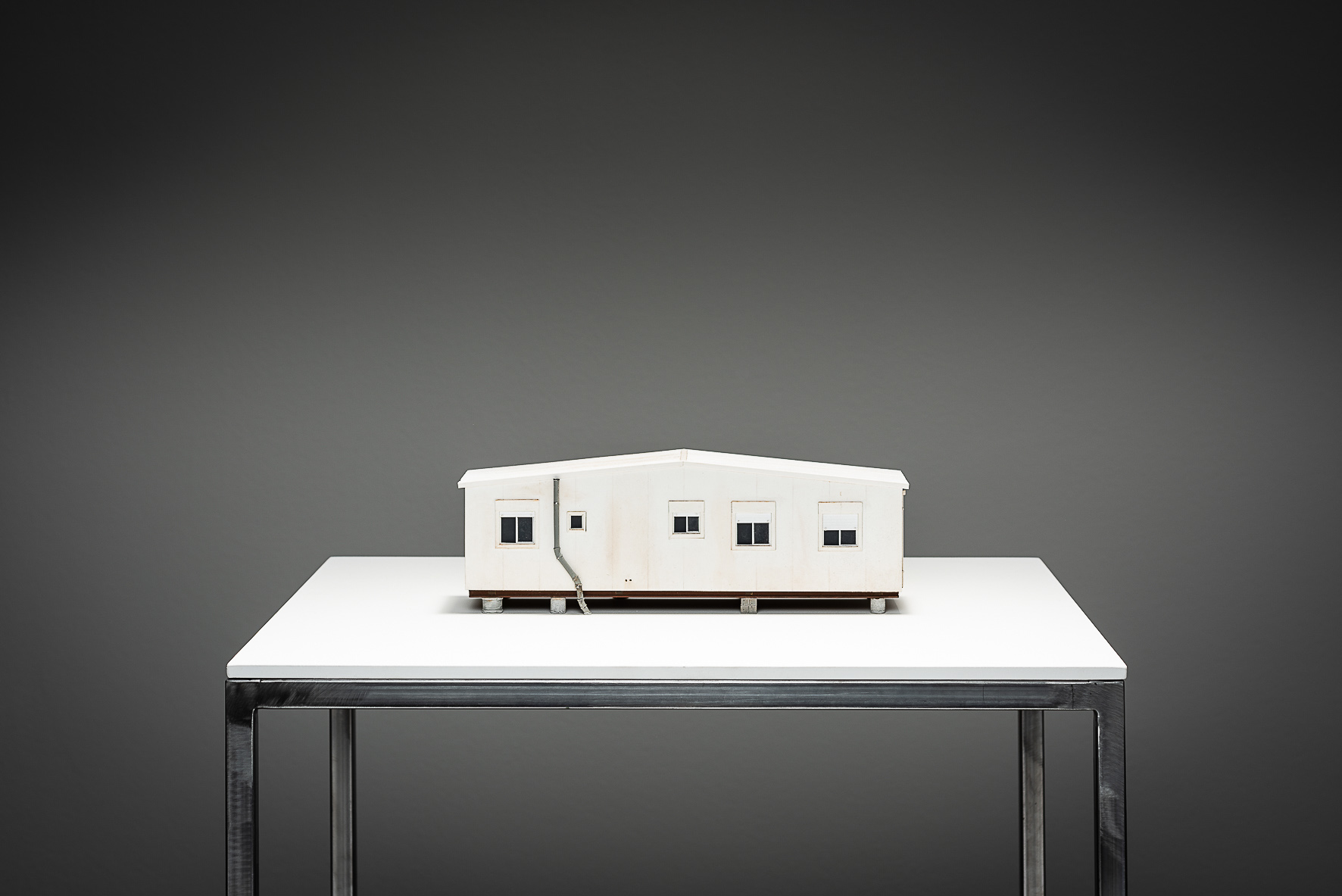 Peter Friedl
Amona, 2018
Peter Friedl
Amona, 2018
MDF, Plexiglas, polystyrene, polyurethane resin, PVC, steel, acrylic paint
11,3 x 33,3 x 10,5 cm
table: 100 x 60 x 60 cm
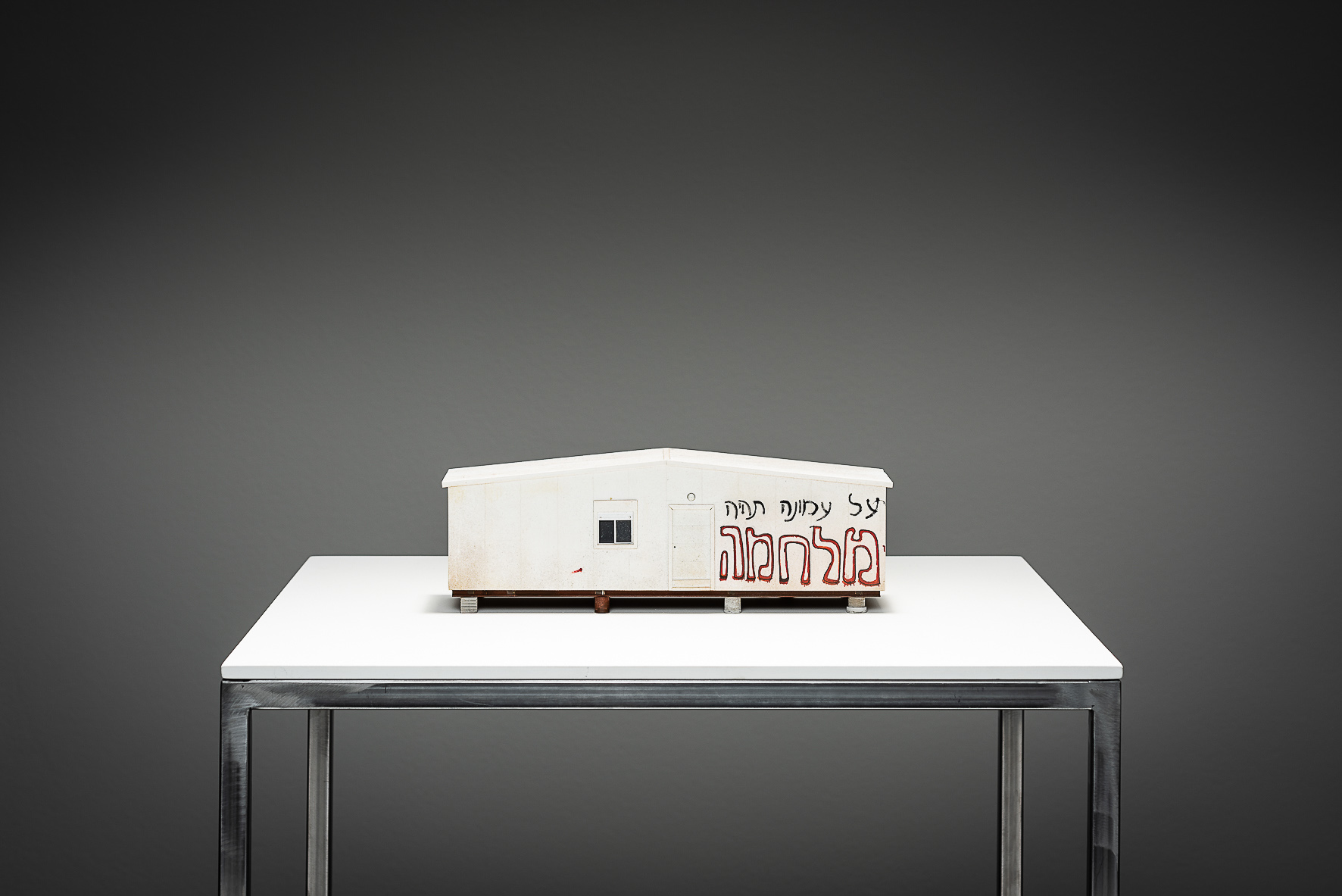 Peter Friedl
Amona, 2018
Peter Friedl
Amona, 2018
MDF, Plexiglas, polystyrene, polyurethane resin, PVC, steel, acrylic paint
11,3 x 33,3 x 10,5 cm
table: 100 x 60 x 60 cm
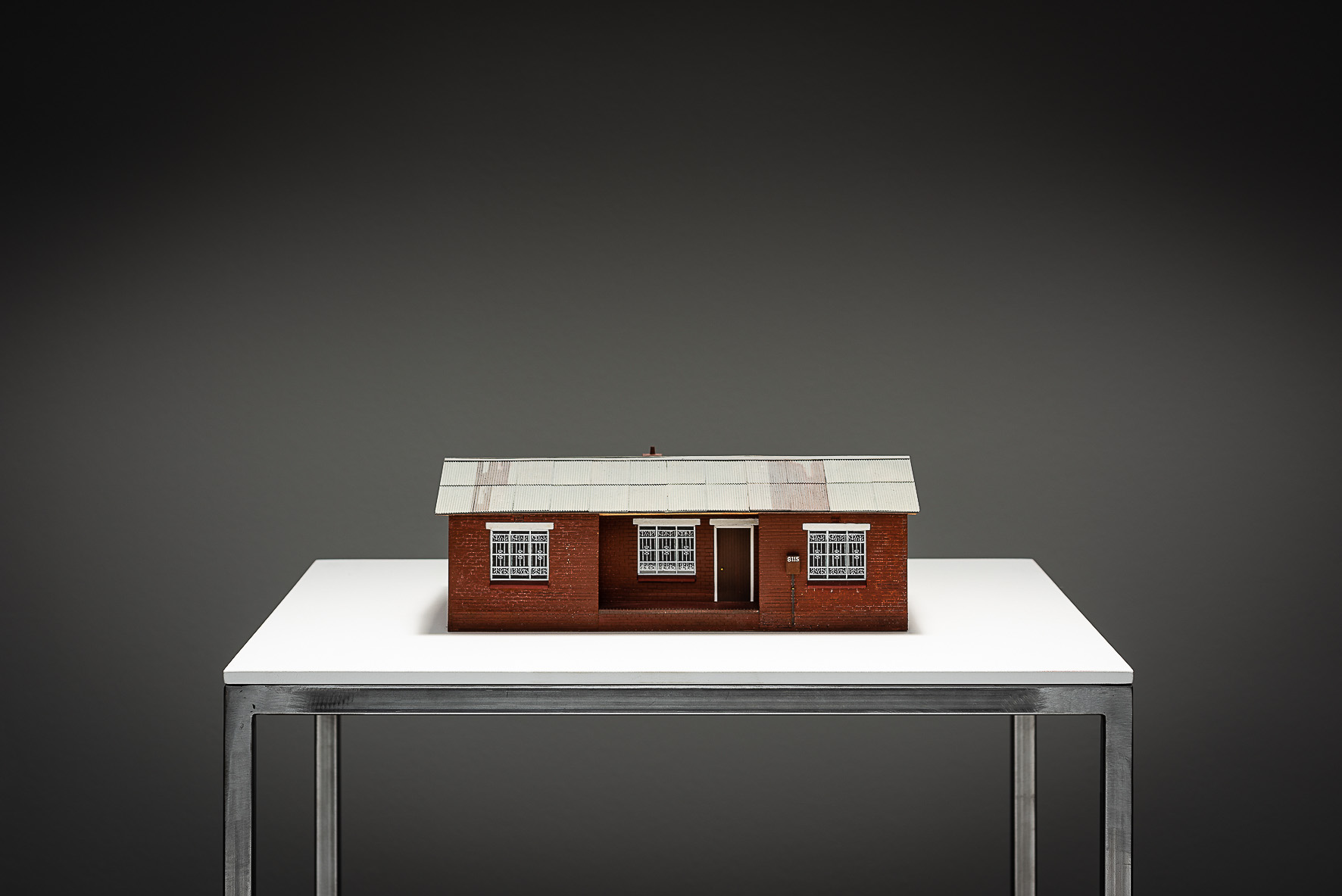 Peter Friedl
8115 Vilakazi Street, 2018
Peter Friedl
8115 Vilakazi Street, 2018
Formica, MDF, wood, brass, Plexiglas, polyurethane resin, PVC, acrylic paint
11,5 x 34,4 x 26 cm
table: 100 x 60 x 60 cm
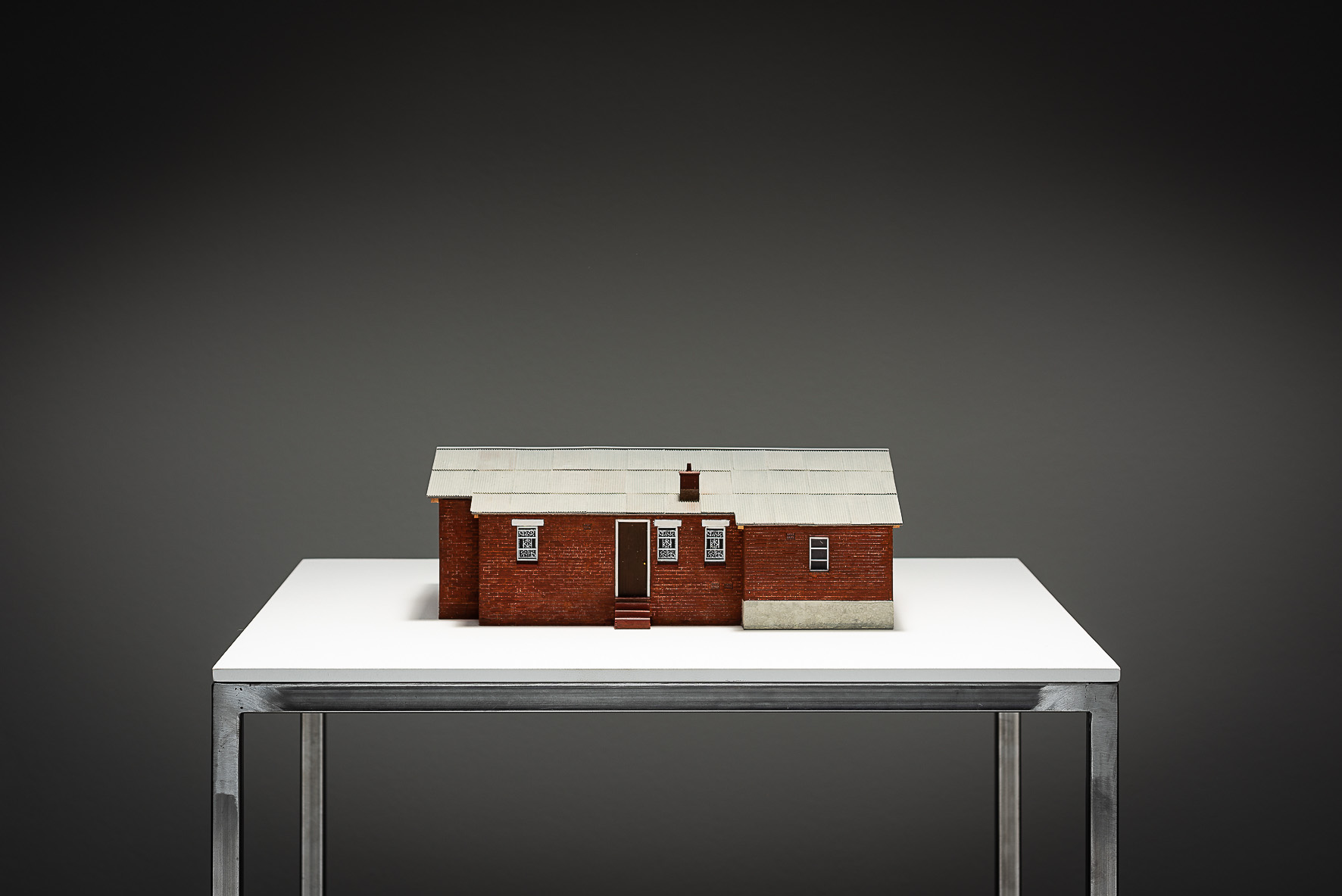 Peter Friedl
8115 Vilakazi Street, 2018
Peter Friedl
8115 Vilakazi Street, 2018
Formica, MDF, wood, brass, Plexiglas, polyurethane resin, PVC, acrylic paint
11,5 x 34,4 x 26 cm
table: 100 x 60 x 60 cm
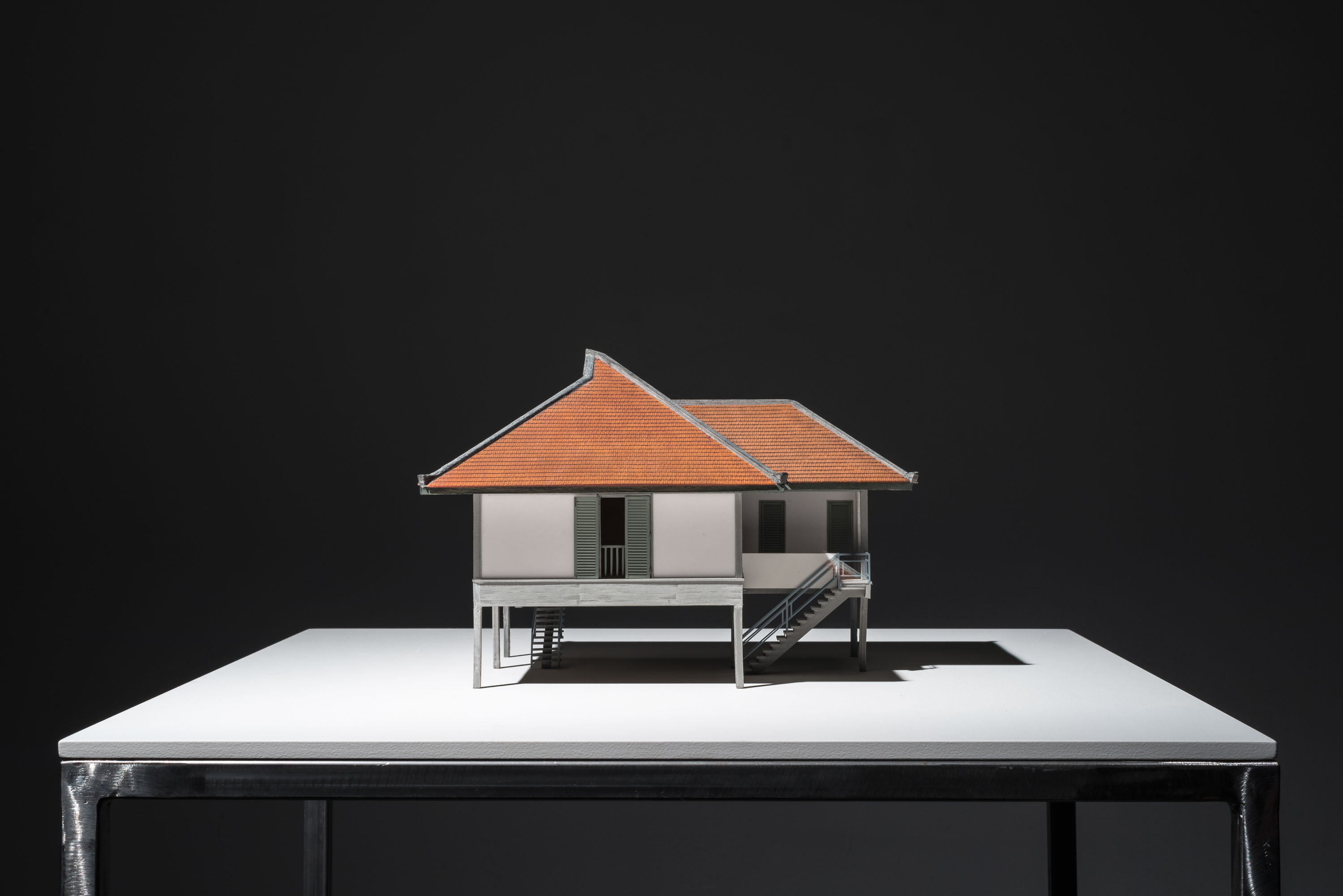 Peter Friedl
101, 2016
Peter Friedl
101, 2016
ABS, polyurethane resin, PVC, stainless steel, wood, acrylic paint; table: steel, painted plywood
21 × 30 × 24 cm; table: 100 × 60 × 60 cm
Peter Friedl’s Rehousing project is the result of the artist’s interest in finding artistic solutions to problems of modernism that have never been fully resolved in the course of the movement’s history. It consists of minutely detailed, scale models of housing projects which are case studies for a mental geography of different forms and modes of modernity. Among the ten models showcased in Taipei Biennial 2016 four of them are new works: one of the few derelict buildings left from Vann Molyvann’s “100 Houses” project completed in 1967 for workers of the National Bank of Cambodia in Tuk Thia, Phnom Penh (101); a dingzihu or Chinese “nail house,” an architectural landmark in times of rampant redevelopment and social change (Holdout); a dome from Drop City, the short lived counterculture community founded in Southern Colorado in 1965, which transformed Buckminster Fuller’s geodesic design principles into a DIY version (Dome); and a recently installed container home from a refugee camp in Jordan, a case study of contemporary political architecture (Azraq).
Six other models were produced between 2012 and 2014: the artist’s parental home in Austria (Gründbergstraße 22); the private residence of Ho Chi Minh in Hanoi (Uncle Ho); the modernist utopia of Luigi Piccinato’s Villa tropicale, a prototype colonial house designed during the Fascist era but never constructed (Villa Tropicale); a naturalistic model of an anonymous slave cabin on the Evergreen Plantation in Louisiana (Evergreen); philosopher Martin Heidegger’s hut in the Black Forest Mountains of Southern Germany (Heidegger); and a model of one of the shacks built by African refugees in Berlin and demolished by the police in April 2014 (Oranienplatz).
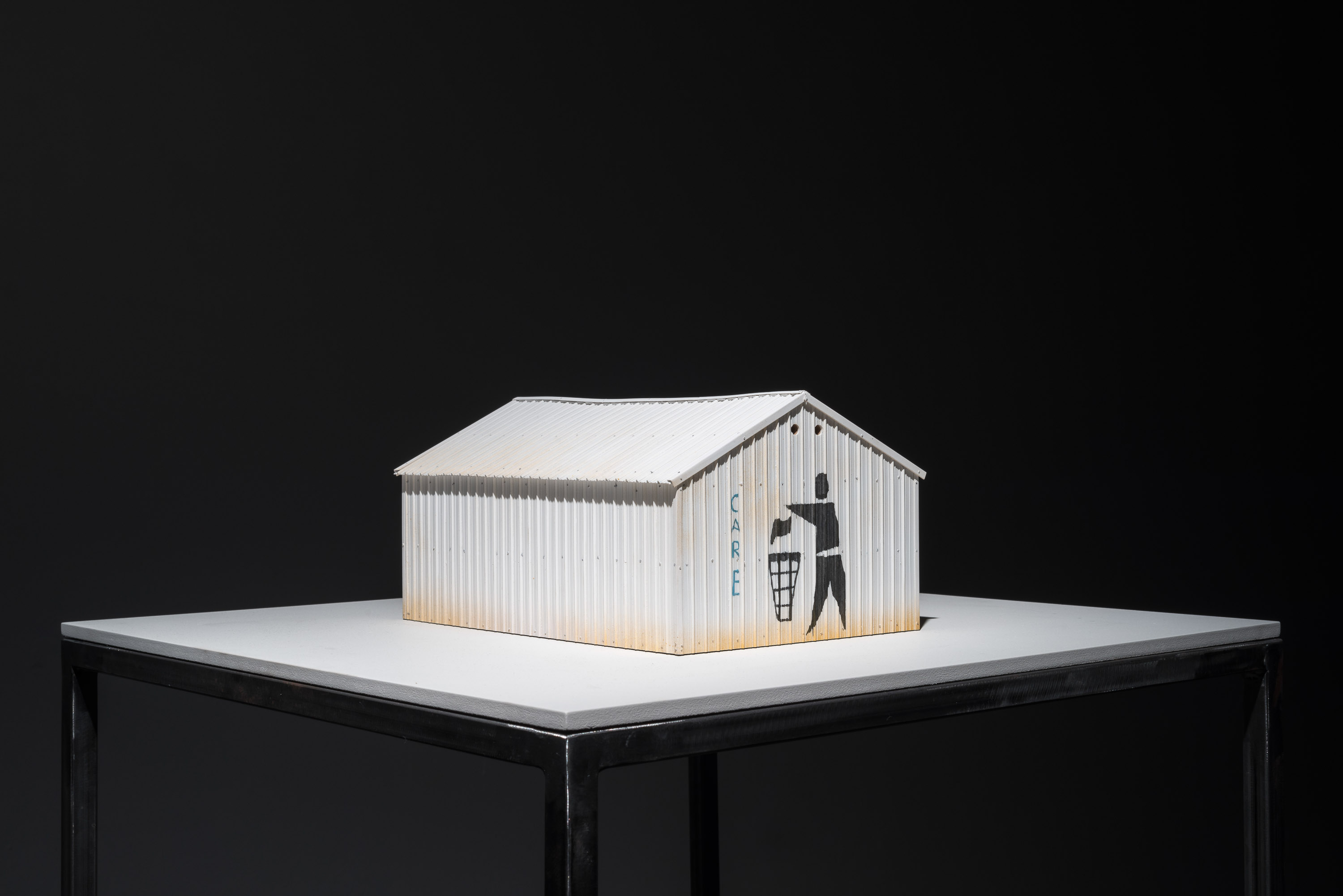 Peter Friedl
Azraq, 2016
Peter Friedl
Azraq, 2016
MDF, Plexiglas, polystyrene, polyurethane resin, PVC, wood, acrylic paint; tables: steel, painted plywood
16 × 31 × 22 cm
table: 100 × 60 × 60 cm
Peter Friedl’s Rehousing project is the result of the artist’s interest in finding artistic solutions to problems of modernism that have never been fully resolved in the course of the movement’s history. It consists of minutely detailed, scale models of housing projects which are case studies for a mental geography of different forms and modes of modernity. Among the ten models showcased in Taipei Biennial 2016 four of them are new works: one of the few derelict buildings left from Vann Molyvann’s “100 Houses” project completed in 1967 for workers of the National Bank of Cambodia in Tuk Thia, Phnom Penh (101); a dingzihu or Chinese “nail house,” an architectural landmark in times of rampant redevelopment and social change (Holdout); a dome from Drop City, the short lived counterculture community founded in Southern Colorado in 1965, which transformed Buckminster Fuller’s geodesic design principles into a DIY version (Dome); and a recently installed container home from a refugee camp in Jordan, a case study of contemporary political architecture (Azraq).
Six other models were produced between 2012 and 2014: the artist’s parental home in Austria (Gründbergstraße 22); the private residence of Ho Chi Minh in Hanoi (Uncle Ho); the modernist utopia of Luigi Piccinato’s Villa tropicale, a prototype colonial house designed during the Fascist era but never constructed (Villa Tropicale); a naturalistic model of an anonymous slave cabin on the Evergreen Plantation in Louisiana (Evergreen); philosopher Martin Heidegger’s hut in the Black Forest Mountains of Southern Germany (Heidegger); and a model of one of the shacks built by African refugees in Berlin and demolished by the police in April 2014 (Oranienplatz).
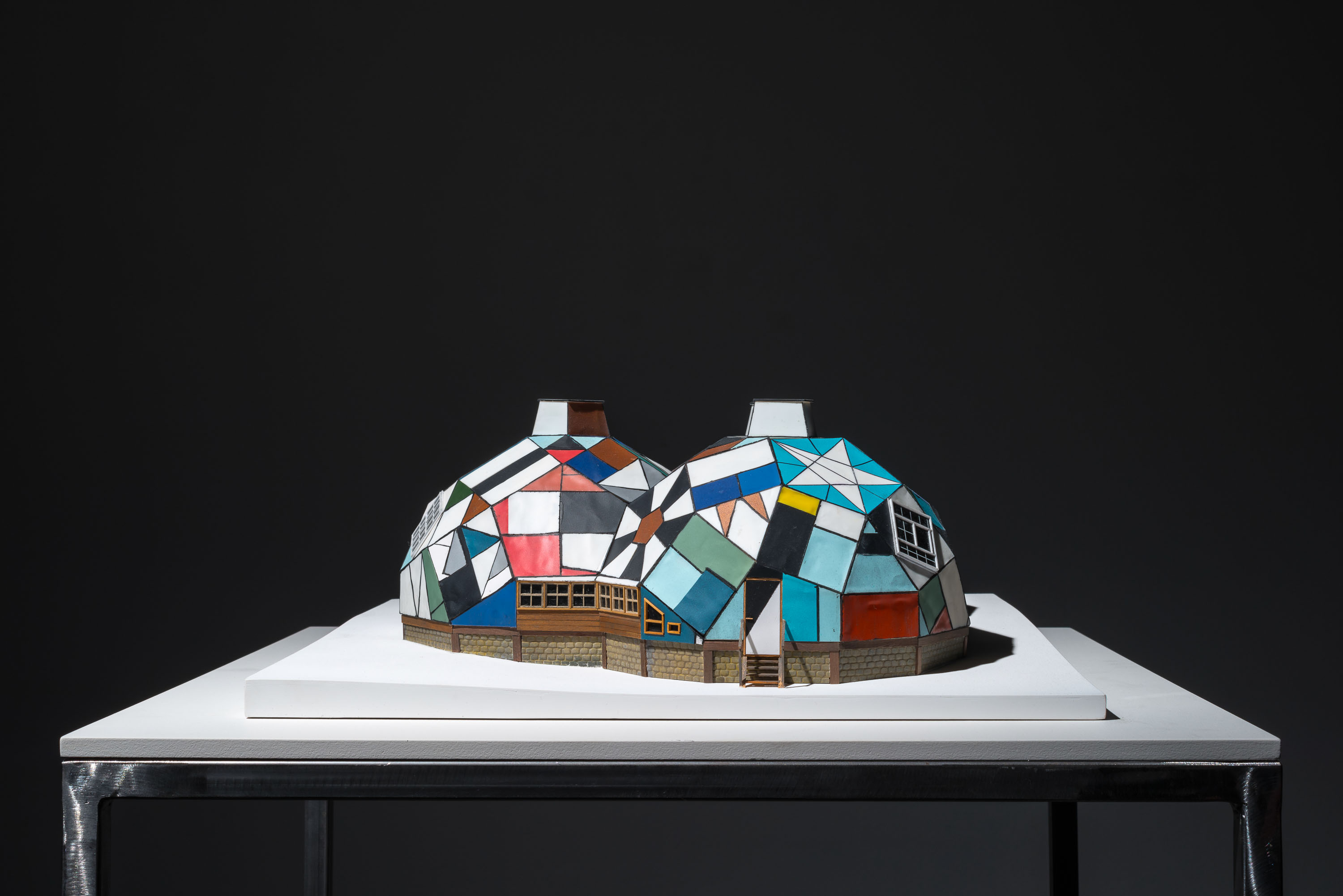 Peter Friedl
Dome, 2016
Peter Friedl
Dome, 2016
MDF, Plexiglas, polyurethane resin, PVC, wood, acrylic paint; tables: steel, painted plywood
18 × 45,5 × 45,5 cm
table: 100 × 60 × 60 cm
Peter Friedl’s Rehousing project is the result of the artist’s interest in finding artistic solutions to problems of modernism that have never been fully resolved in the course of the movement’s history. It consists of minutely detailed, scale models of housing projects which are case studies for a mental geography of different forms and modes of modernity. Among the ten models showcased in Taipei Biennial 2016 four of them are new works: one of the few derelict buildings left from Vann Molyvann’s “100 Houses” project completed in 1967 for workers of the National Bank of Cambodia in Tuk Thia, Phnom Penh (101); a dingzihu or Chinese “nail house,” an architectural landmark in times of rampant redevelopment and social change (Holdout); a dome from Drop City, the short lived counterculture community founded in Southern Colorado in 1965, which transformed Buckminster Fuller’s geodesic design principles into a DIY version (Dome); and a recently installed container home from a refugee camp in Jordan, a case study of contemporary political architecture (Azraq).
Six other models were produced between 2012 and 2014: the artist’s parental home in Austria (Gründbergstraße 22); the private residence of Ho Chi Minh in Hanoi (Uncle Ho); the modernist utopia of Luigi Piccinato’s Villa tropicale, a prototype colonial house designed during the Fascist era but never constructed (Villa Tropicale); a naturalistic model of an anonymous slave cabin on the Evergreen Plantation in Louisiana (Evergreen); philosopher Martin Heidegger’s hut in the Black Forest Mountains of Southern Germany (Heidegger); and a model of one of the shacks built by African refugees in Berlin and demolished by the police in April 2014 (Oranienplatz).
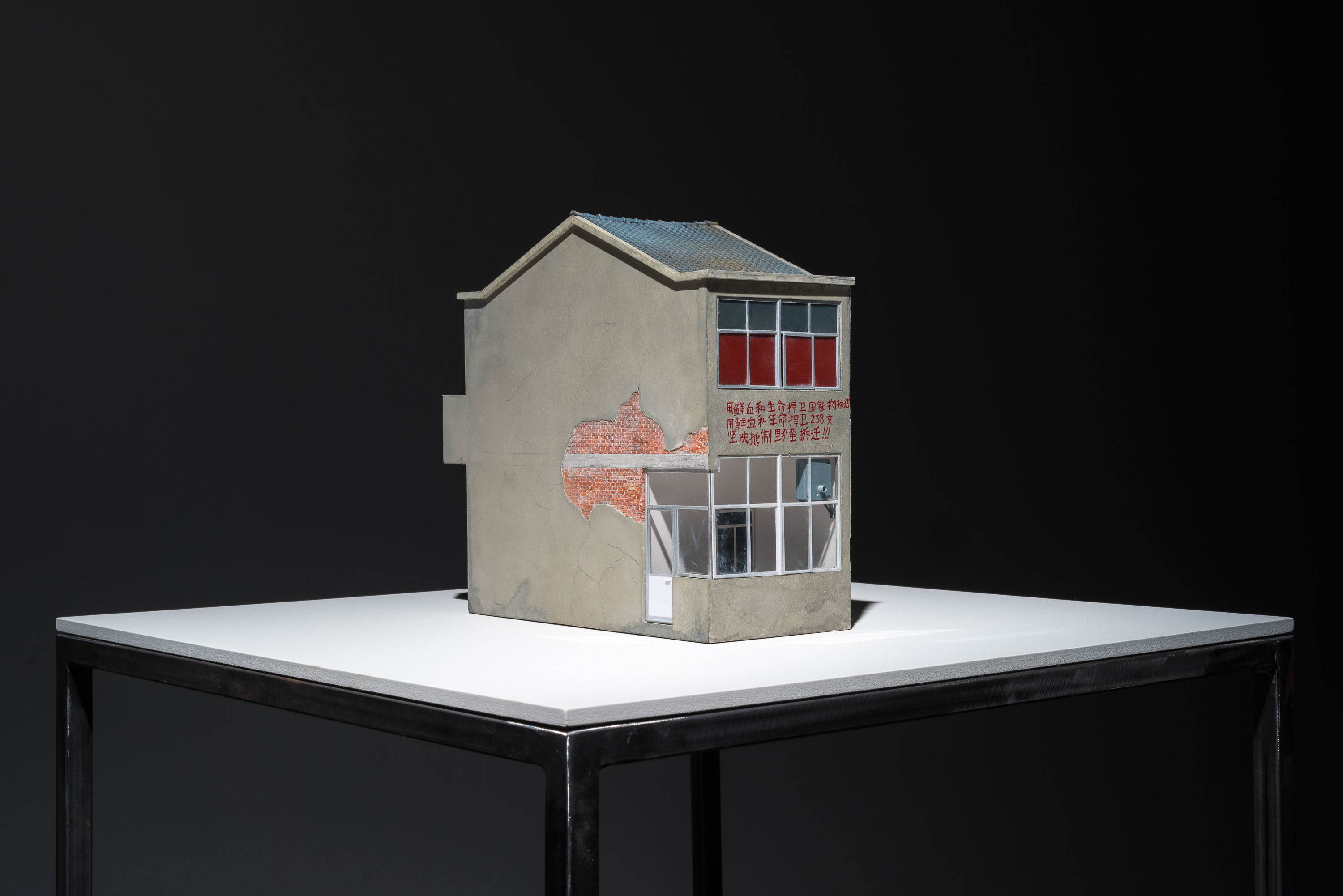 Peter Friedl
Holdout, 2016
Peter Friedl
Holdout, 2016
MDF, Plexiglas, polystyrene, polyurethane resin, PVC, watercolor, acrylic paint; tables: steel, painted plywood
27,5 × 13 × 30 cm
table: 100 × 60 × 60 cm
Peter Friedl’s Rehousing project is the result of the artist’s interest in finding artistic solutions to problems of modernism that have never been fully resolved in the course of the movement’s history. It consists of minutely detailed, scale models of housing projects which are case studies for a mental geography of different forms and modes of modernity. Among the ten models showcased in Taipei Biennial 2016 four of them are new works: one of the few derelict buildings left from Vann Molyvann’s “100 Houses” project completed in 1967 for workers of the National Bank of Cambodia in Tuk Thia, Phnom Penh (101); a dingzihu or Chinese “nail house,” an architectural landmark in times of rampant redevelopment and social change (Holdout); a dome from Drop City, the short lived counterculture community founded in Southern Colorado in 1965, which transformed Buckminster Fuller’s geodesic design principles into a DIY version (Dome); and a recently installed container home from a refugee camp in Jordan, a case study of contemporary political architecture (Azraq).
Six other models were produced between 2012 and 2014: the artist’s parental home in Austria (Gründbergstraße 22); the private residence of Ho Chi Minh in Hanoi (Uncle Ho); the modernist utopia of Luigi Piccinato’s Villa tropicale, a prototype colonial house designed during the Fascist era but never constructed (Villa Tropicale); a naturalistic model of an anonymous slave cabin on the Evergreen Plantation in Louisiana (Evergreen); philosopher Martin Heidegger’s hut in the Black Forest Mountains of Southern Germany (Heidegger); and a model of one of the shacks built by African refugees in Berlin and demolished by the police in April 2014 (Oranienplatz).
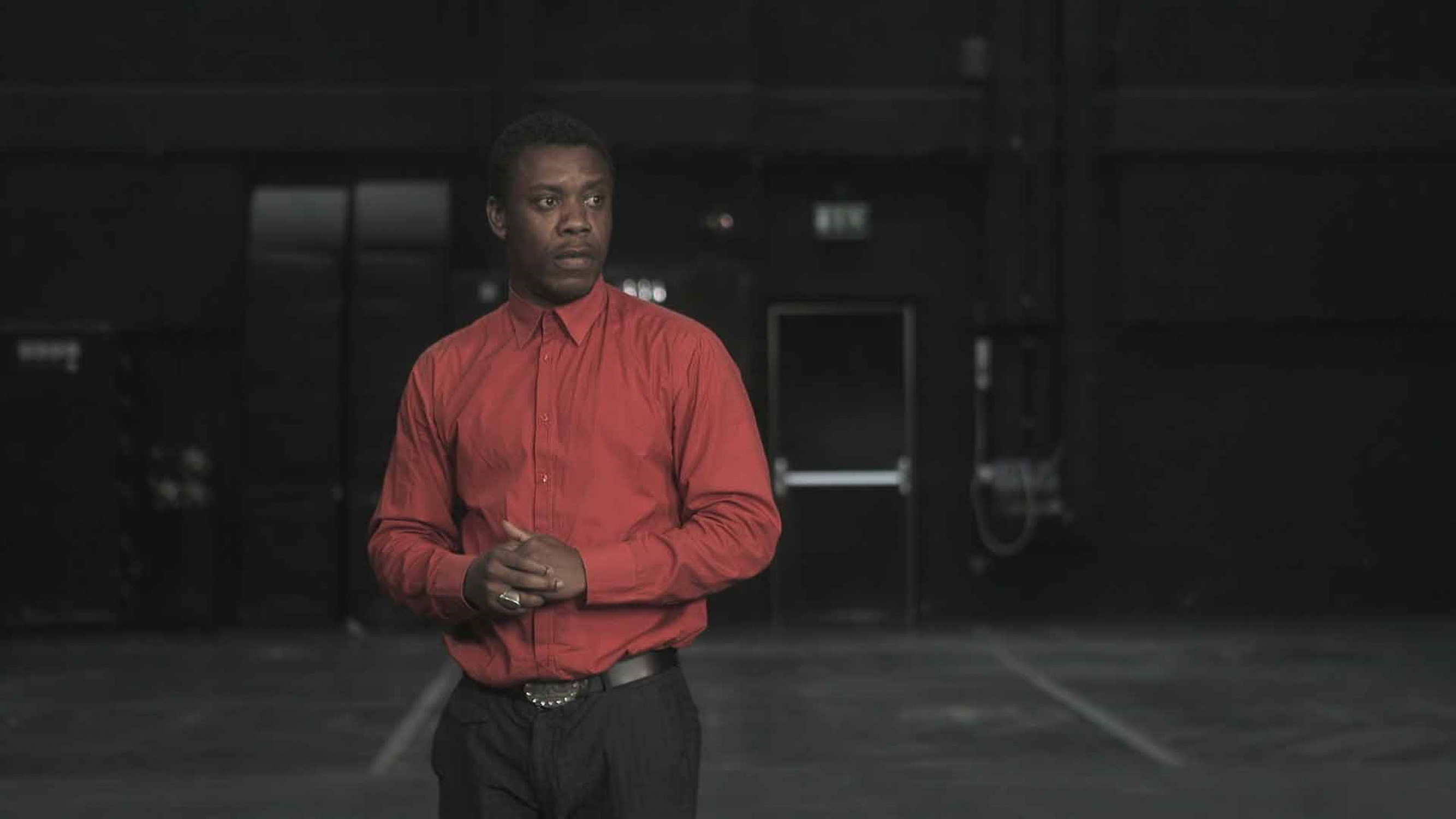 Peter Friedl
Report, 2016
Peter Friedl
Report, 2016
Single-channel HD video installation, color, sound, 32:03 min., loop
Edition of 4
In his film installation Report (2016), Peter Friedl explores the permeability of language and identity boundaries. The source text is “A Report to an Academy,” Franz Kafka’s 1917 short story about the ape Red Peter’s becoming human—a parable about assimilation, which has been nearly buried under the burden of interpretation and constant homage. The only setting in Friedl’s complex film project, seemingly conform with classical dramatic theory, is the completely emptied stage of the National Theater in Athens, designed by German architect Ernst Ziller in the late nineteenth century. A total of two dozen actors of various origins and backgrounds appear one by one: women, men, children, almost always alone, but occasionally in pairs. A few of them make recurring appearances through the course of the film. In front of a camera sharply focused on them, they all recite by heart extracts from Kafka’s monologue-esque text in their mother tongue or a language of their choice: Arabic, English, Farsi, French, Greek, Swahili, Kurdish, Russian. German, the original language of the canonical Kafka piece, is deliberately absent. Friedl’s film, doing away with subtitles, comes to life through the presence and charisma of the actors and through the precise and thoughtful editing. With some omissions and variations, the work remains faithful to the original narrative throughout the fragmented polyphony of languages and gestures. It features predominantly non-actors, mostly protagonists of the current global refugee and migration movements, but the Greek actress Maria Kallimani is also part of the cast. The long process of casting took place in Athens.
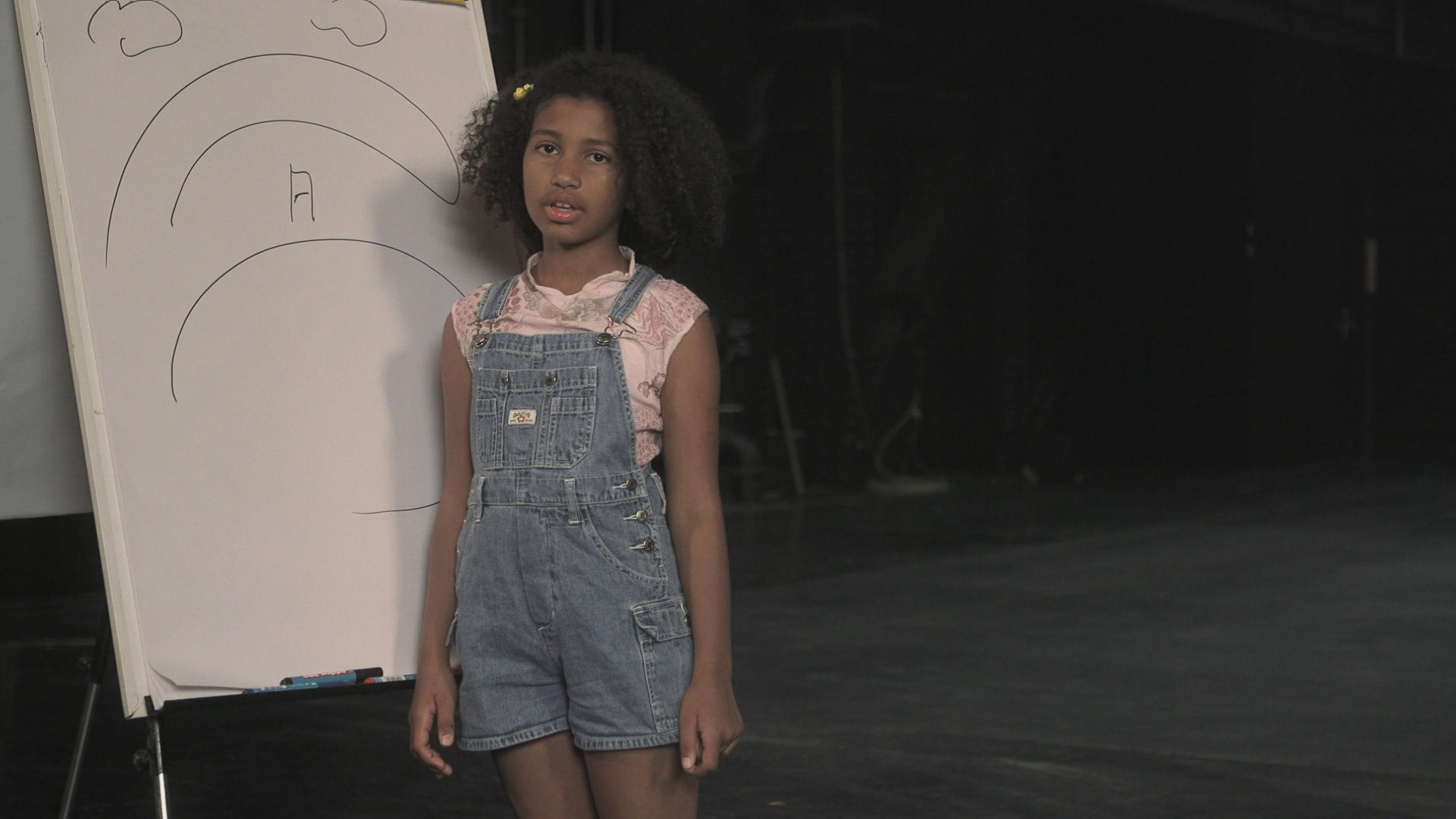 Peter Friedl
Report, 2016
Peter Friedl
Report, 2016
Single-channel HD video installation, color, sound, 32:03 min., loop
Edition of 4
In his film installation Report (2016), Peter Friedl explores the permeability of language and identity boundaries. The source text is “A Report to an Academy,” Franz Kafka’s 1917 short story about the ape Red Peter’s becoming human—a parable about assimilation, which has been nearly buried under the burden of interpretation and constant homage. The only setting in Friedl’s complex film project, seemingly conform with classical dramatic theory, is the completely emptied stage of the National Theater in Athens, designed by German architect Ernst Ziller in the late nineteenth century. A total of two dozen actors of various origins and backgrounds appear one by one: women, men, children, almost always alone, but occasionally in pairs. A few of them make recurring appearances through the course of the film. In front of a camera sharply focused on them, they all recite by heart extracts from Kafka’s monologue-esque text in their mother tongue or a language of their choice: Arabic, English, Farsi, French, Greek, Swahili, Kurdish, Russian. German, the original language of the canonical Kafka piece, is deliberately absent. Friedl’s film, doing away with subtitles, comes to life through the presence and charisma of the actors and through the precise and thoughtful editing. With some omissions and variations, the work remains faithful to the original narrative throughout the fragmented polyphony of languages and gestures. It features predominantly non-actors, mostly protagonists of the current global refugee and migration movements, but the Greek actress Maria Kallimani is also part of the cast. The long process of casting took place in Athens.
 Peter Friedl
Report, 2016
Peter Friedl
Report, 2016
Single-channel HD video installation, color, sound, 32:03 min., loop
Edition of 4
In his film installation Report (2016), Peter Friedl explores the permeability of language and identity boundaries. The source text is “A Report to an Academy,” Franz Kafka’s 1917 short story about the ape Red Peter’s becoming human—a parable about assimilation, which has been nearly buried under the burden of interpretation and constant homage. The only setting in Friedl’s complex film project, seemingly conform with classical dramatic theory, is the completely emptied stage of the National Theater in Athens, designed by German architect Ernst Ziller in the late nineteenth century. A total of two dozen actors of various origins and backgrounds appear one by one: women, men, children, almost always alone, but occasionally in pairs. A few of them make recurring appearances through the course of the film. In front of a camera sharply focused on them, they all recite by heart extracts from Kafka’s monologue-esque text in their mother tongue or a language of their choice: Arabic, English, Farsi, French, Greek, Swahili, Kurdish, Russian. German, the original language of the canonical Kafka piece, is deliberately absent. Friedl’s film, doing away with subtitles, comes to life through the presence and charisma of the actors and through the precise and thoughtful editing. With some omissions and variations, the work remains faithful to the original narrative throughout the fragmented polyphony of languages and gestures. It features predominantly non-actors, mostly protagonists of the current global refugee and migration movements, but the Greek actress Maria Kallimani is also part of the cast. The long process of casting took place in Athens.
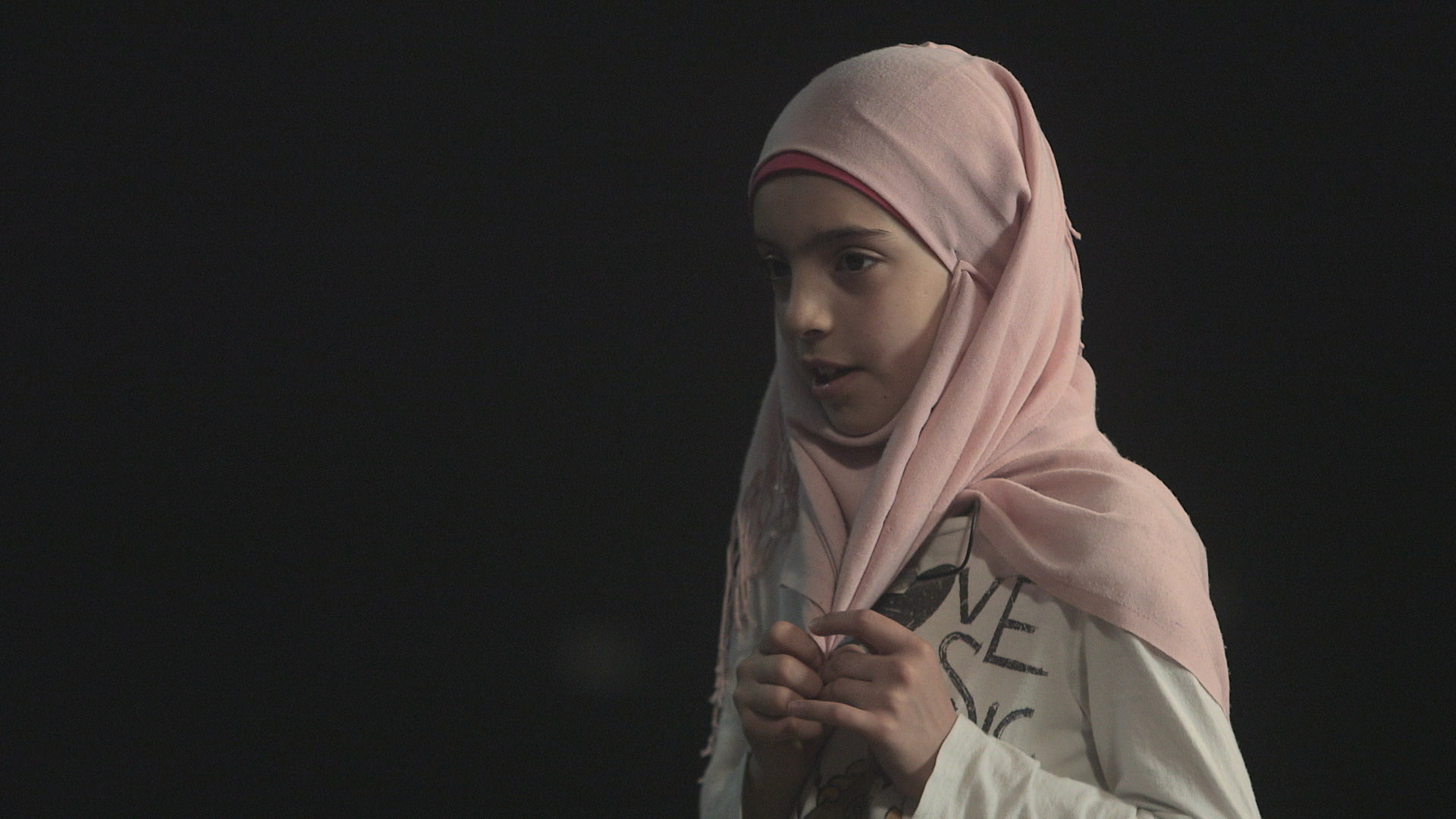 Peter Friedl
Report, 2016
Peter Friedl
Report, 2016
Single-channel HD video installation, color, sound, 32:03 min., loop
Edition of 4
In his film installation Report (2016), Peter Friedl explores the permeability of language and identity boundaries. The source text is “A Report to an Academy,” Franz Kafka’s 1917 short story about the ape Red Peter’s becoming human—a parable about assimilation, which has been nearly buried under the burden of interpretation and constant homage. The only setting in Friedl’s complex film project, seemingly conform with classical dramatic theory, is the completely emptied stage of the National Theater in Athens, designed by German architect Ernst Ziller in the late nineteenth century. A total of two dozen actors of various origins and backgrounds appear one by one: women, men, children, almost always alone, but occasionally in pairs. A few of them make recurring appearances through the course of the film. In front of a camera sharply focused on them, they all recite by heart extracts from Kafka’s monologue-esque text in their mother tongue or a language of their choice: Arabic, English, Farsi, French, Greek, Swahili, Kurdish, Russian. German, the original language of the canonical Kafka piece, is deliberately absent. Friedl’s film, doing away with subtitles, comes to life through the presence and charisma of the actors and through the precise and thoughtful editing. With some omissions and variations, the work remains faithful to the original narrative throughout the fragmented polyphony of languages and gestures. It features predominantly non-actors, mostly protagonists of the current global refugee and migration movements, but the Greek actress Maria Kallimani is also part of the cast. The long process of casting took place in Athens.
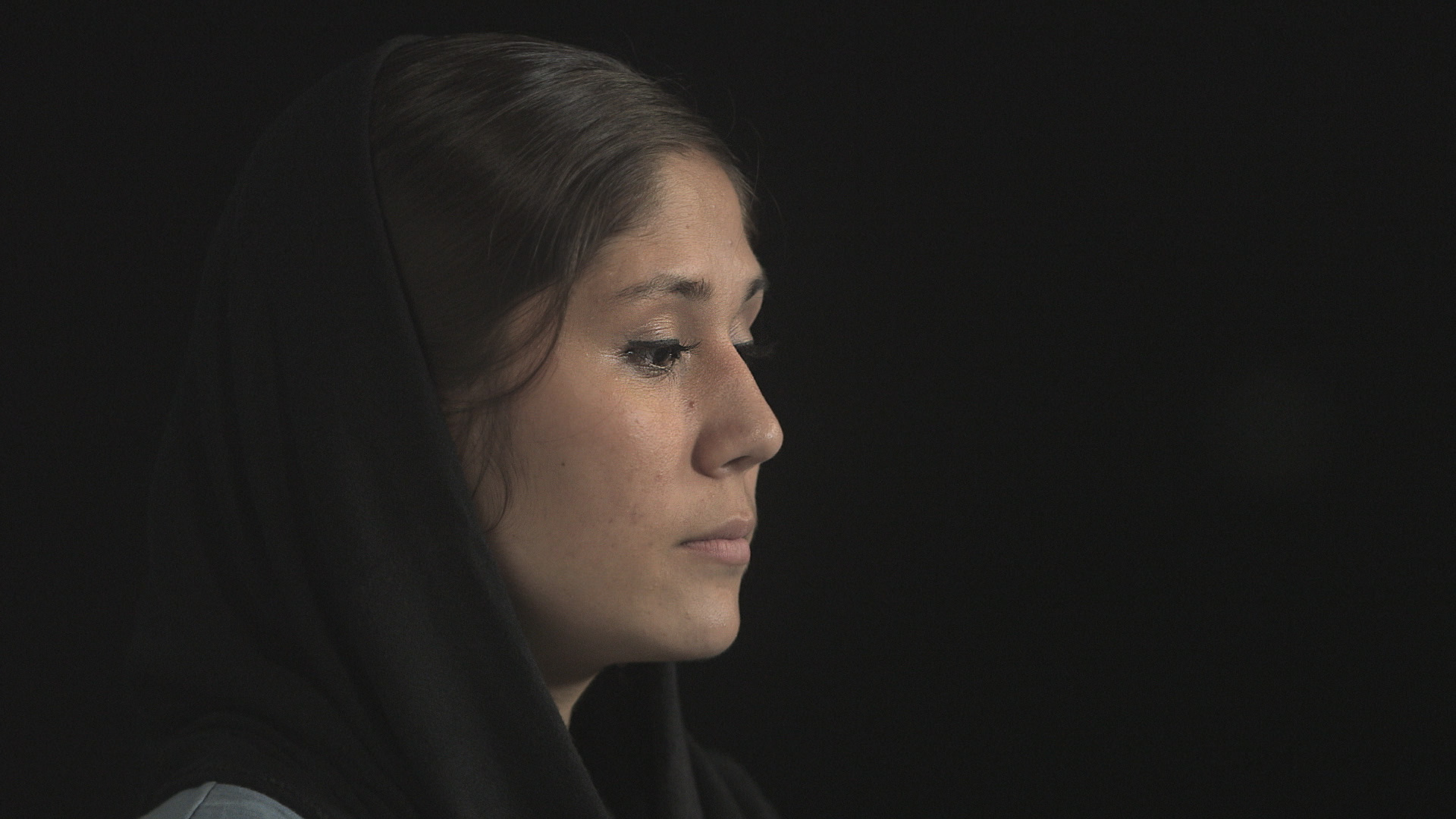 Peter Friedl
Report, 2016
Peter Friedl
Report, 2016
Single-channel HD video installation, color, sound, 32:03 min., loop
Edition of 4
In his film installation Report (2016), Peter Friedl explores the permeability of language and identity boundaries. The source text is “A Report to an Academy,” Franz Kafka’s 1917 short story about the ape Red Peter’s becoming human—a parable about assimilation, which has been nearly buried under the burden of interpretation and constant homage. The only setting in Friedl’s complex film project, seemingly conform with classical dramatic theory, is the completely emptied stage of the National Theater in Athens, designed by German architect Ernst Ziller in the late nineteenth century. A total of two dozen actors of various origins and backgrounds appear one by one: women, men, children, almost always alone, but occasionally in pairs. A few of them make recurring appearances through the course of the film. In front of a camera sharply focused on them, they all recite by heart extracts from Kafka’s monologue-esque text in their mother tongue or a language of their choice: Arabic, English, Farsi, French, Greek, Swahili, Kurdish, Russian. German, the original language of the canonical Kafka piece, is deliberately absent. Friedl’s film, doing away with subtitles, comes to life through the presence and charisma of the actors and through the precise and thoughtful editing. With some omissions and variations, the work remains faithful to the original narrative throughout the fragmented polyphony of languages and gestures. It features predominantly non-actors, mostly protagonists of the current global refugee and migration movements, but the Greek actress Maria Kallimani is also part of the cast. The long process of casting took place in Athens.
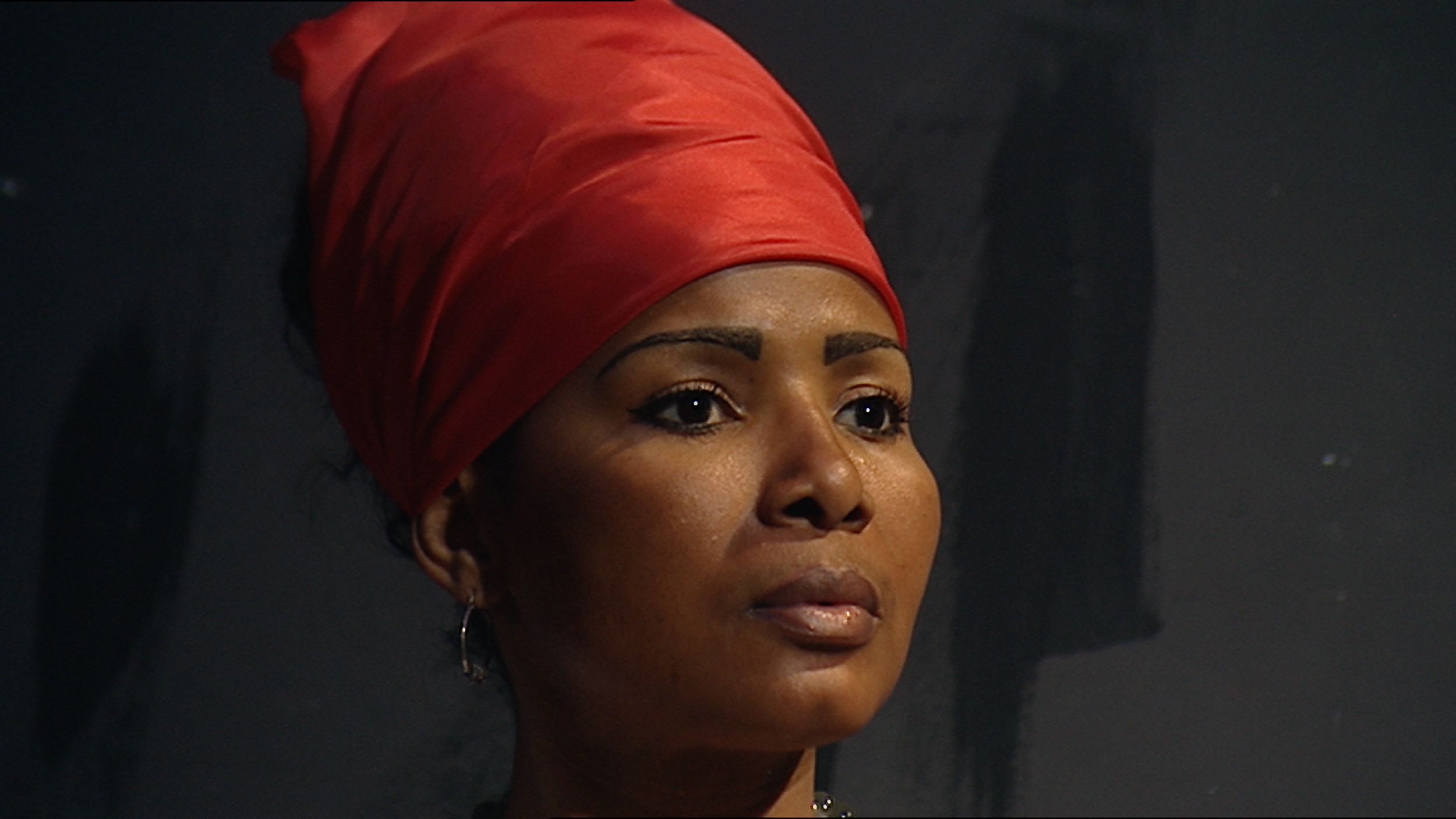 Peter Friedl
Bilbao Song, 2010
Peter Friedl
Bilbao Song, 2010
Single-channel video installation, color, sound, 5:53 min., loop
Edition of 4
Bilbao Song was filmed on the empty stage of the Serantes Theatre in Santurtzi, near Bilbao. In static tableaux vivants staged specially for the camera, Friedl’s film captures the process of a phantasmagorical picture production, in this case inspired by Basque history. Those involved in these tableaux included professional actors and special guests, like Julen Madariaga (lawyer, politician, former co-founder of ETA) or the popular clown duo Pirritx and Porrotx.
The starting point was the painting Henry IV and the Spanish Ambassador (1817) by Jean Auguste Dominique Ingres. Other references to Basque history are El Paria Castellano by Juan de Echevarria (1917), El Orden by Gustavo de Maeztu (1918–19), the Tríptico de la Guerra by Aurelio Arteta (1937), and Soldado y Mulata by Víctor Patricio Landaluze, who was born in Bilbao and migrated to Cuba in 1850. The only action that takes place on the stage is the live interpretation of the “Bilbao Song” from Happy End, an unsuccessful musical comedy by Bertolt Brecht and Kurt Weill—a performance with no text, just a local pianist and a woman accordion player.
Exploring the fringes of Modernism, Peter Friedl examines the frequent opposition of aesthetics and politics in an attempt to bring them together. His work focuses on interconnected representations of power, genre, narration, identity, language, and history. For Friedl, images always contain blind spots. His “archive works” are composed of tensions between personal and collective histories, or popular and unknown figures. A world recorded in this manner becomes as close as it is distant: all this is done to give the necessary space for criticism.
Bilbao Song (2010) is an installation composed of a film projected in a dark room. The work shows a series of tableaux vivants performed by professional and amateur actors, as well as special invited guests such as Julen Madariaga (lawyer, politician, historic co-founder of the ETA and later member oft he Elkarri social movement) and the famous Basque clown duo Pirritx and Porrotx; accompanied by Kurt Weill and Bertolt Brecht’s Happy End played live on piano and accordion, this theatrical staging is a meditation on the imaginary and its connection to the production of images. What is the hidden story behind Jean-Auguste-Dominique-Ingres’s painting Henry IV Receiving the Ambassador of Spain (1817)?
[Short guide of Intense Proximité, La Triennale, curated by Okwui Enwezor, Paris 2012, p. 106]
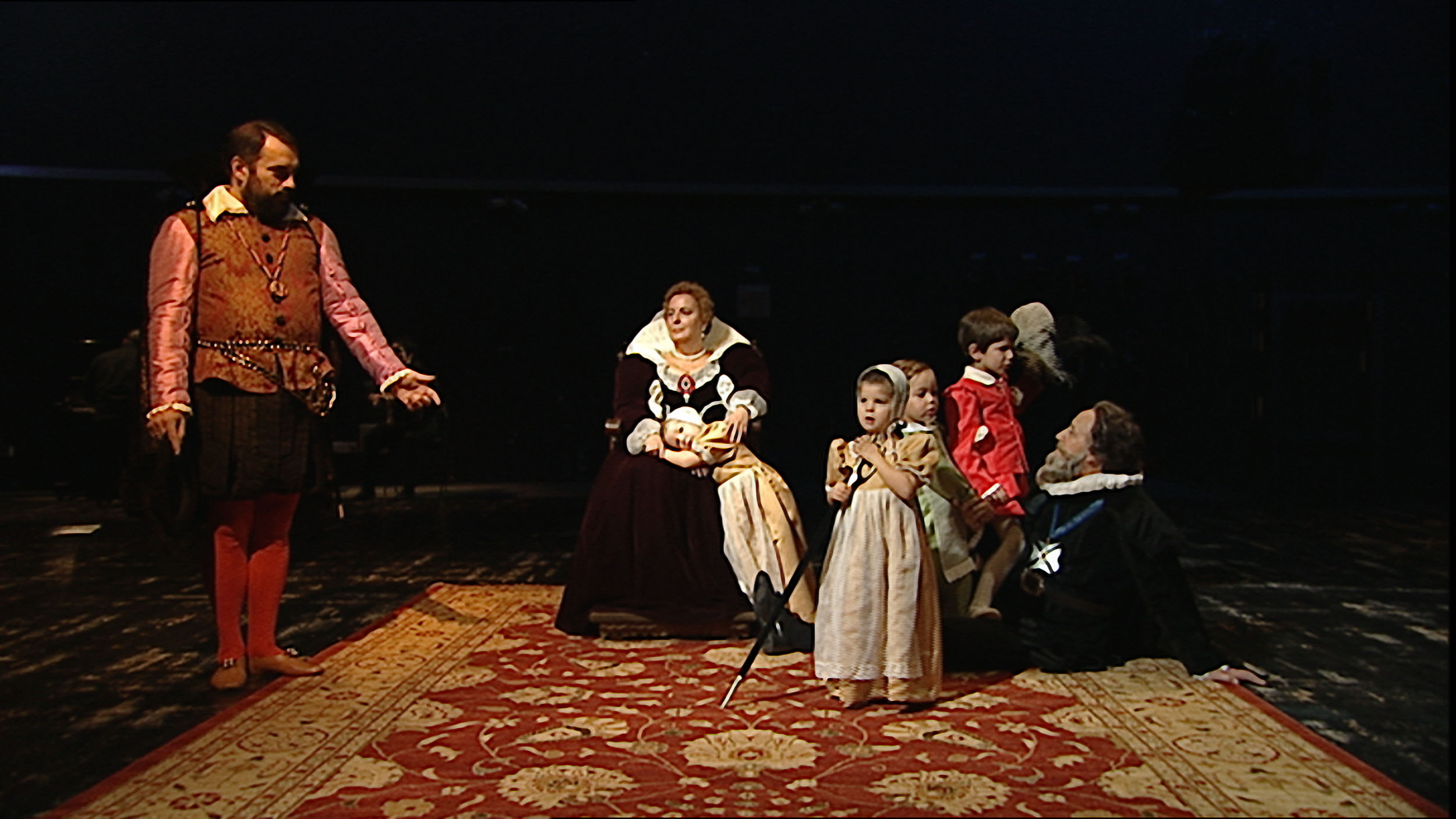 Peter Friedl
Bilbao Song, 2010
Peter Friedl
Bilbao Song, 2010
Single-channel video installation, color, sound, 5:53 min., loop
Edition of 4
Bilbao Song was filmed on the empty stage of the Serantes Theatre in Santurtzi, near Bilbao. In static tableaux vivants staged specially for the camera, Friedl’s film captures the process of a phantasmagorical picture production, in this case inspired by Basque history. Those involved in these tableaux included professional actors and special guests, like Julen Madariaga (lawyer, politician, former co-founder of ETA) or the popular clown duo Pirritx and Porrotx.
The starting point was the painting Henry IV and the Spanish Ambassador (1817) by Jean Auguste Dominique Ingres. Other references to Basque history are El Paria Castellano by Juan de Echevarria (1917), El Orden by Gustavo de Maeztu (1918–19), the Tríptico de la Guerra by Aurelio Arteta (1937), and Soldado y Mulata by Víctor Patricio Landaluze, who was born in Bilbao and migrated to Cuba in 1850. The only action that takes place on the stage is the live interpretation of the “Bilbao Song” from Happy End, an unsuccessful musical comedy by Bertolt Brecht and Kurt Weill—a performance with no text, just a local pianist and a woman accordion player.
Exploring the fringes of Modernism, Peter Friedl examines the frequent opposition of aesthetics and politics in an attempt to bring them together. His work focuses on interconnected representations of power, genre, narration, identity, language, and history. For Friedl, images always contain blind spots. His “archive works” are composed of tensions between personal and collective histories, or popular and unknown figures. A world recorded in this manner becomes as close as it is distant: all this is done to give the necessary space for criticism.
Bilbao Song (2010) is an installation composed of a film projected in a dark room. The work shows a series of tableaux vivants performed by professional and amateur actors, as well as special invited guests such as Julen Madariaga (lawyer, politician, historic co-founder of the ETA and later member oft he Elkarri social movement) and the famous Basque clown duo Pirritx and Porrotx; accompanied by Kurt Weill and Bertolt Brecht’s Happy End played live on piano and accordion, this theatrical staging is a meditation on the imaginary and its connection to the production of images. What is the hidden story behind Jean-Auguste-Dominique-Ingres’s painting Henry IV Receiving the Ambassador of Spain (1817)?
[Short guide of Intense Proximité, La Triennale, curated by Okwui Enwezor, Paris 2012, p. 106]
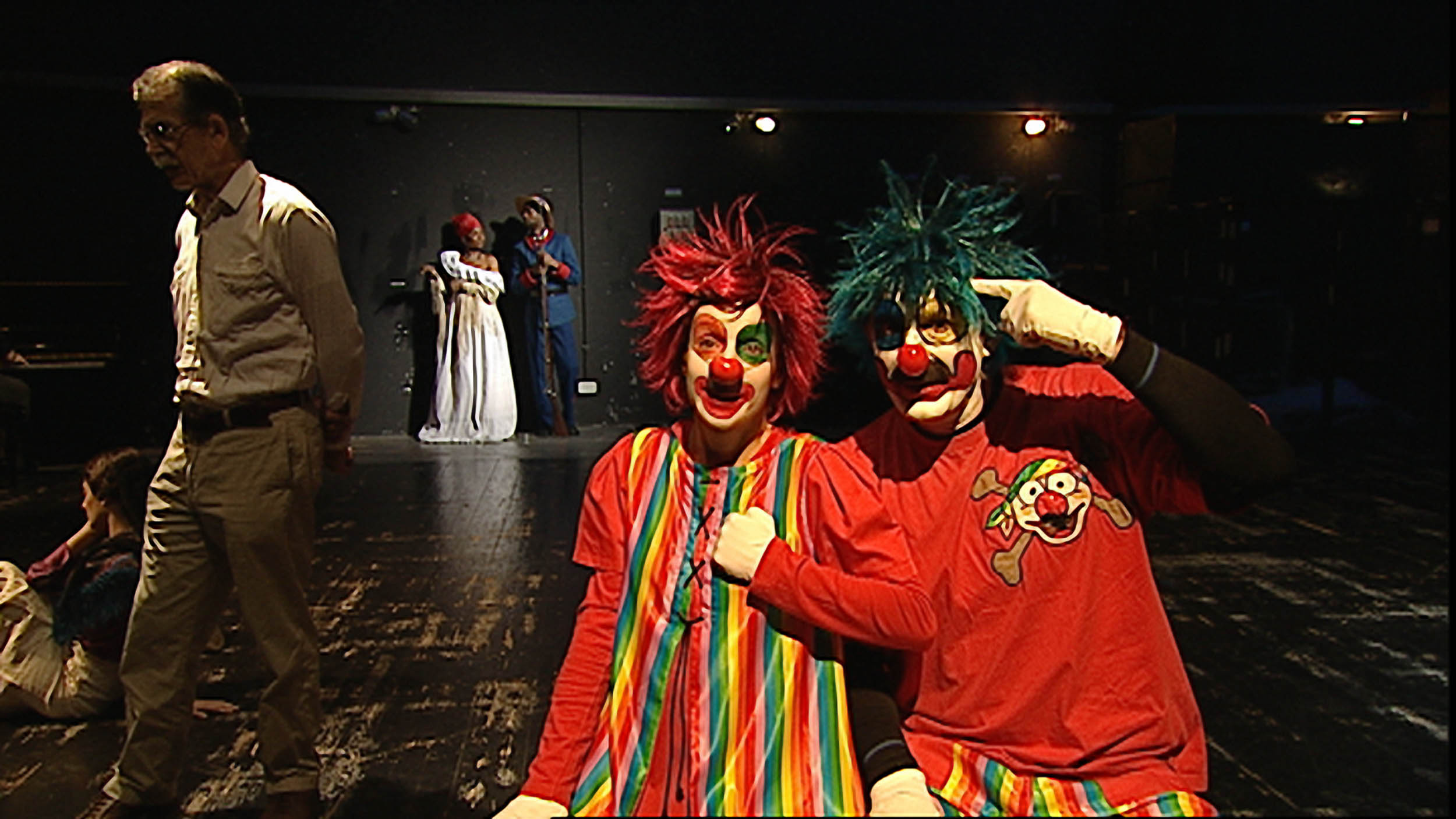 Peter Friedl
Bilbao Song, 2010
Peter Friedl
Bilbao Song, 2010
Single-channel video installation, color, sound, 5:53 min., loop
Edition of 4
Bilbao Song was filmed on the empty stage of the Serantes Theatre in Santurtzi, near Bilbao. In static tableaux vivants staged specially for the camera, Friedl’s film captures the process of a phantasmagorical picture production, in this case inspired by Basque history. Those involved in these tableaux included professional actors and special guests, like Julen Madariaga (lawyer, politician, former co-founder of ETA) or the popular clown duo Pirritx and Porrotx.
The starting point was the painting Henry IV and the Spanish Ambassador (1817) by Jean Auguste Dominique Ingres. Other references to Basque history are El Paria Castellano by Juan de Echevarria (1917), El Orden by Gustavo de Maeztu (1918–19), the Tríptico de la Guerra by Aurelio Arteta (1937), and Soldado y Mulata by Víctor Patricio Landaluze, who was born in Bilbao and migrated to Cuba in 1850. The only action that takes place on the stage is the live interpretation of the “Bilbao Song” from Happy End, an unsuccessful musical comedy by Bertolt Brecht and Kurt Weill—a performance with no text, just a local pianist and a woman accordion player.
Exploring the fringes of Modernism, Peter Friedl examines the frequent opposition of aesthetics and politics in an attempt to bring them together. His work focuses on interconnected representations of power, genre, narration, identity, language, and history. For Friedl, images always contain blind spots. His “archive works” are composed of tensions between personal and collective histories, or popular and unknown figures. A world recorded in this manner becomes as close as it is distant: all this is done to give the necessary space for criticism.
Bilbao Song (2010) is an installation composed of a film projected in a dark room. The work shows a series of tableaux vivants performed by professional and amateur actors, as well as special invited guests such as Julen Madariaga (lawyer, politician, historic co-founder of the ETA and later member oft he Elkarri social movement) and the famous Basque clown duo Pirritx and Porrotx; accompanied by Kurt Weill and Bertolt Brecht’s Happy End played live on piano and accordion, this theatrical staging is a meditation on the imaginary and its connection to the production of images. What is the hidden story behind Jean-Auguste-Dominique-Ingres’s painting Henry IV Receiving the Ambassador of Spain (1817)?
[Short guide of Intense Proximité, La Triennale, curated by Okwui Enwezor, Paris 2012, p. 106]
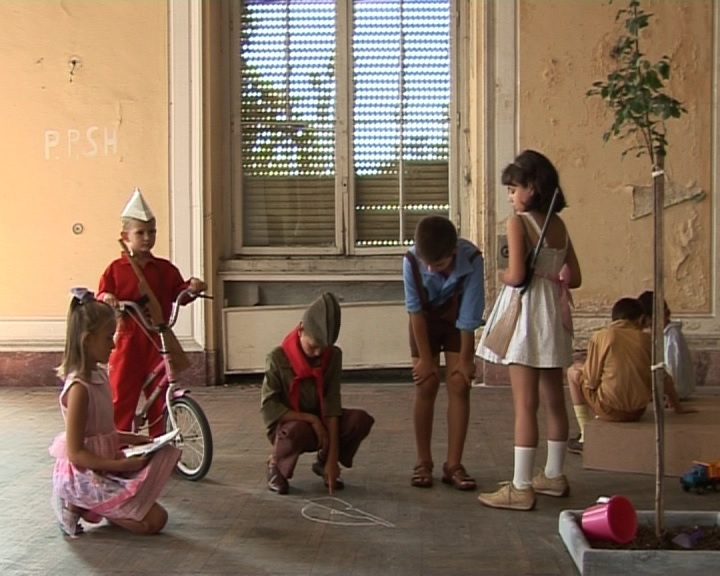 Peter Friedl
The Children, 2009
Peter Friedl
The Children, 2009
Video, color, sound
2:12 min., loop
Edition of 4
The video is based on a mediocre painting, Fëmijët (1966; The Children) by Albanian socialist realist painter Spiro Kristo (b. 1936). For the shooting, the outdoor street scene of the painting was staged as a tableau vivant inside the Hotel Dajti (designed by one of the Italian colonial architects during the fascist occupation), in one of its former groundfloor salons. It's a short and mostly silent pictorial meditation or gesture (looped), a melancholic greeting to Brecht's Street Scene. The only piece of text is heard from the off spoken by one of the girls. It's the Albanian translation of “L’image doit sortir du cadre” (The image should stand out from the frame). That advice was given by the old Francisco Pacheco – official censor of Seville's Inquisition & author of Arte de la pintura: su antiquedad y grandeza – to his pupil (and son-in-law) Diego Velázquez. Foucault quoted it in his famous (and erroneous) “Las Meninas” essay, which was to become the first chapter of Les mots et les choses (in 1966).
 Peter Friedl
Liberty City, 2007
Peter Friedl
Liberty City, 2007
Video, color, sound, 1:11 min., loop
Edition of 3 + 1 AP
In his video Liberty City (2007), Friedl addresses a standard historical scene. On the night of 17 December 1979, the (black) motorcyclist Arthur McDuffie was stopped by (white) cops on the corner of North Miami Avenue and 38th Street and beaten to death. When the accused policemen were acquitted five months later, riots broke out in Liberty City. It was the darkest moment in the history of Miami. Desolate Liberty City haunts voyeuristic reality TV series in emulation of Homicide. Friedl inverts the dramatic structure: In his nocturnal scene staged and filmed on site, the (white) cop is beaten up. The looped and uncut sequence appears like filmed by an eyewitness. In fact, it is a meticulously constructed, dramatic study. The film was shot in the streets of the Liberty Square Housing Project, a residential complex built during the Roosevelt era in the 1930s for African American residents. To keep the black and white communities separated, a wall was erected on the eastern boundary of Liberty Square, the remains of which can still be seen today. Friedl’s short loop is an homage to the community of Liberty City—epic theater in the genre of documentary aesthetics.
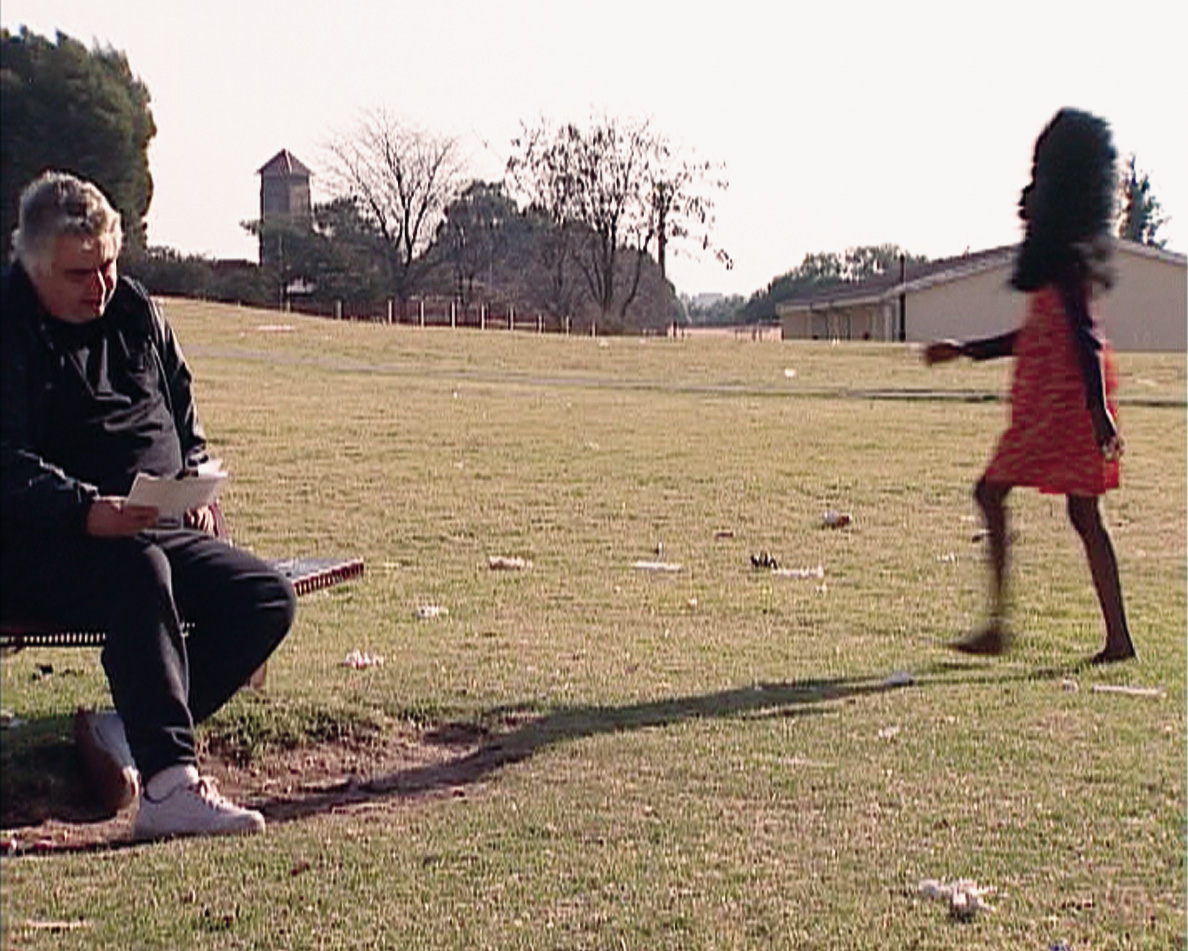 Peter Friedl
King Kong, 2001
Peter Friedl
King Kong, 2001
Video, color, sound
3:57 min., loop
Edition of 3
King Kong is one of the best-known characters ever produced by the Hollywood cinema. Since his first appearance in the 1933 film, directed by Merian C. Cooper and Ernest B. Schoedsack who made their reputations in 1920s colonialist ethnographic cinema, King Kong represents a cross penetration of Western notions of exoticism and monstrosity. Although reductive and stereotyped, the King Kong story „stands as an important popularized account of transcultural contact“ (Cynthia Erb in: Tracking King Kong: A Hollywood Icon in World Culture, Detroit 1998). The film´s call to identify with the tormented outsider has historically been answered by spectators outside the mainstream, including international, gay, black, and feminist artists and audiences. King Kong has also become a hero of contemporary cultural studies.
For his new project, Berlin-based artist Peter Friedl chooses two specific versions of the King Kong theme for investigating the relationship between adequate and inadequate artistic representation. The first reference is a song entitled „King Kong“, written by US musician Daniel Johnston in 1983, recorded the same year on „Yip/Jump Music“. The song (only vocal) is the laconic and fatalistic retelling of the King Kong story.
As a second reference, Peter Friedl remembers an important and controversial moment in South African history and culture. The 1959 jazz opera, „King Kong“ was critically esteemed as an interracial collaboration of black and white artists, which gained international prominence as an early expression of the horrors of apartheid (in 1960, the production travelled to London). In reality, „King Kong“ was for the most part a white liberal production (with a book by Harry Bloom, and lyrics by Pat Williams), with only music (by composer and „Drum“ writer Todd Matshikiza) and performances by black South Africans (among them, Miriam Makeba). „King Kong“ remained primarily a blockbuster for white audiences. Based on the tragic life of the heavyweight boxing champ, Ezekiel „King Kong“ Dhlamini, the story is located in Sophiatown, a Johannesburg suburb.
Sophiatown, once a multiethnic center of music, literature, speakeasies, and gangsters, was the „Little Harlem“ of Johannesburg, „perhaps the most perfect experiment in non-racial community living“ (Bloke Modisane). In the late 50s it was gradually bulldozed by the apartheid government. After 1960, a white suburb was raised up and called Triomf (Afrikaans for „triumph“). The „ethnical cleaning“ and destruction of Sophiatown remains the country´s most symbolically charged memory of forced removal and urban segregation.
Shot entirely in Johannesburg, Peter Friedl´s film uses and reflects upon the genre of a music video featuring Daniel Johnston in order to weave together diverse histories and affinities. Johnston performs (for the first time „in public“) his old King Kong song at a public park in today´s Sophiatown/Triomf. The two cameras document his exposure and fatigues, but, at the same time, include panoramic views of the location as well as of the production set and shooting situation itself. The viewpoints and relationships get reversed. History serves as the starting point not of another narrative but of other strategies of coherence.
Based in Waller/Texas, Daniel Johnston (born 1961) has released numerous albums and tapes since 1980, among them Hi, How Are You (1983), Yip/Jump Music (1983), Retired Boxer (1984), Continued Story (1985), 1990 (1990), Artistic Vice (1991), Fun (1994), Frankenstein´s Love (1998), Rejected Unknown (1999), Why Me? (2000). He has repeatedly collaborated and recorded with Jad Fair. Some of his songs have been played and recorded by Cathy McCarty,Yo La Tengo, Half Japanese, Sonic Youth, fIREHOSE, and Pearl Jam. He´s contributed to the film soundtrack of Richard Linklater´s Slacker (1991), and to Larry Clark´s Kids.
King Kong is produced by Andrée Cooke and is realised with financial support from London Arts.
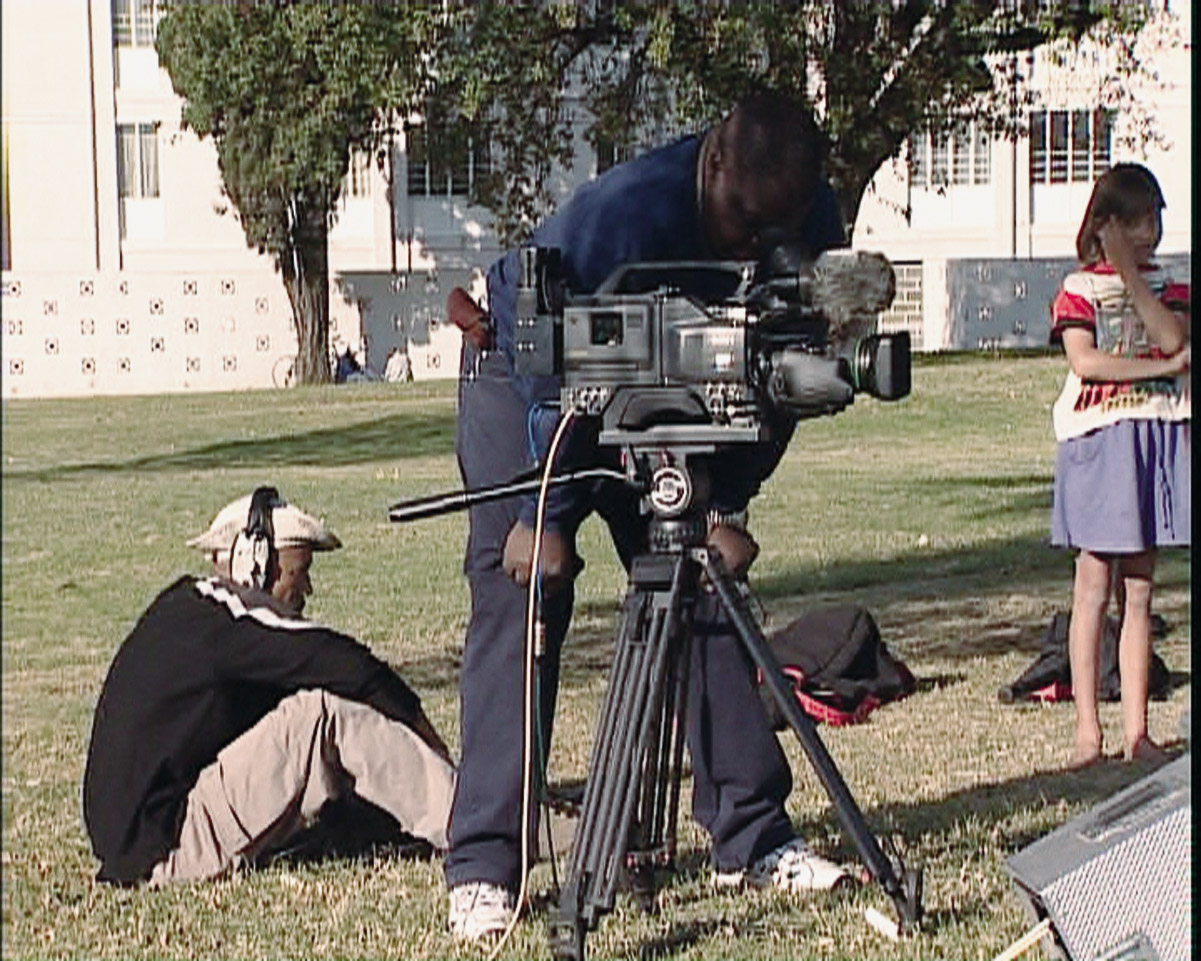 Peter Friedl
King Kong, 2001
Peter Friedl
King Kong, 2001
Video, color, sound
3:57 min., loop
Edition of 3
King Kong is one of the best-known characters ever produced by the Hollywood cinema. Since his first appearance in the 1933 film, directed by Merian C. Cooper and Ernest B. Schoedsack who made their reputations in 1920s colonialist ethnographic cinema, King Kong represents a cross penetration of Western notions of exoticism and monstrosity. Although reductive and stereotyped, the King Kong story „stands as an important popularized account of transcultural contact“ (Cynthia Erb in: Tracking King Kong: A Hollywood Icon in World Culture, Detroit 1998). The film´s call to identify with the tormented outsider has historically been answered by spectators outside the mainstream, including international, gay, black, and feminist artists and audiences. King Kong has also become a hero of contemporary cultural studies.
For his new project, Berlin-based artist Peter Friedl chooses two specific versions of the King Kong theme for investigating the relationship between adequate and inadequate artistic representation. The first reference is a song entitled „King Kong“, written by US musician Daniel Johnston in 1983, recorded the same year on „Yip/Jump Music“. The song (only vocal) is the laconic and fatalistic retelling of the King Kong story.
As a second reference, Peter Friedl remembers an important and controversial moment in South African history and culture. The 1959 jazz opera, „King Kong“ was critically esteemed as an interracial collaboration of black and white artists, which gained international prominence as an early expression of the horrors of apartheid (in 1960, the production travelled to London). In reality, „King Kong“ was for the most part a white liberal production (with a book by Harry Bloom, and lyrics by Pat Williams), with only music (by composer and „Drum“ writer Todd Matshikiza) and performances by black South Africans (among them, Miriam Makeba). „King Kong“ remained primarily a blockbuster for white audiences. Based on the tragic life of the heavyweight boxing champ, Ezekiel „King Kong“ Dhlamini, the story is located in Sophiatown, a Johannesburg suburb.
Sophiatown, once a multiethnic center of music, literature, speakeasies, and gangsters, was the „Little Harlem“ of Johannesburg, „perhaps the most perfect experiment in non-racial community living“ (Bloke Modisane). In the late 50s it was gradually bulldozed by the apartheid government. After 1960, a white suburb was raised up and called Triomf (Afrikaans for „triumph“). The „ethnical cleaning“ and destruction of Sophiatown remains the country´s most symbolically charged memory of forced removal and urban segregation.
Shot entirely in Johannesburg, Peter Friedl´s film uses and reflects upon the genre of a music video featuring Daniel Johnston in order to weave together diverse histories and affinities. Johnston performs (for the first time „in public“) his old King Kong song at a public park in today´s Sophiatown/Triomf. The two cameras document his exposure and fatigues, but, at the same time, include panoramic views of the location as well as of the production set and shooting situation itself. The viewpoints and relationships get reversed. History serves as the starting point not of another narrative but of other strategies of coherence.
Based in Waller/Texas, Daniel Johnston (born 1961) has released numerous albums and tapes since 1980, among them Hi, How Are You (1983), Yip/Jump Music (1983), Retired Boxer (1984), Continued Story (1985), 1990 (1990), Artistic Vice (1991), Fun (1994), Frankenstein´s Love (1998), Rejected Unknown (1999), Why Me? (2000). He has repeatedly collaborated and recorded with Jad Fair. Some of his songs have been played and recorded by Cathy McCarty,Yo La Tengo, Half Japanese, Sonic Youth, fIREHOSE, and Pearl Jam. He´s contributed to the film soundtrack of Richard Linklater´s Slacker (1991), and to Larry Clark´s Kids.
King Kong is produced by Andrée Cooke and is realised with financial support from London Arts.
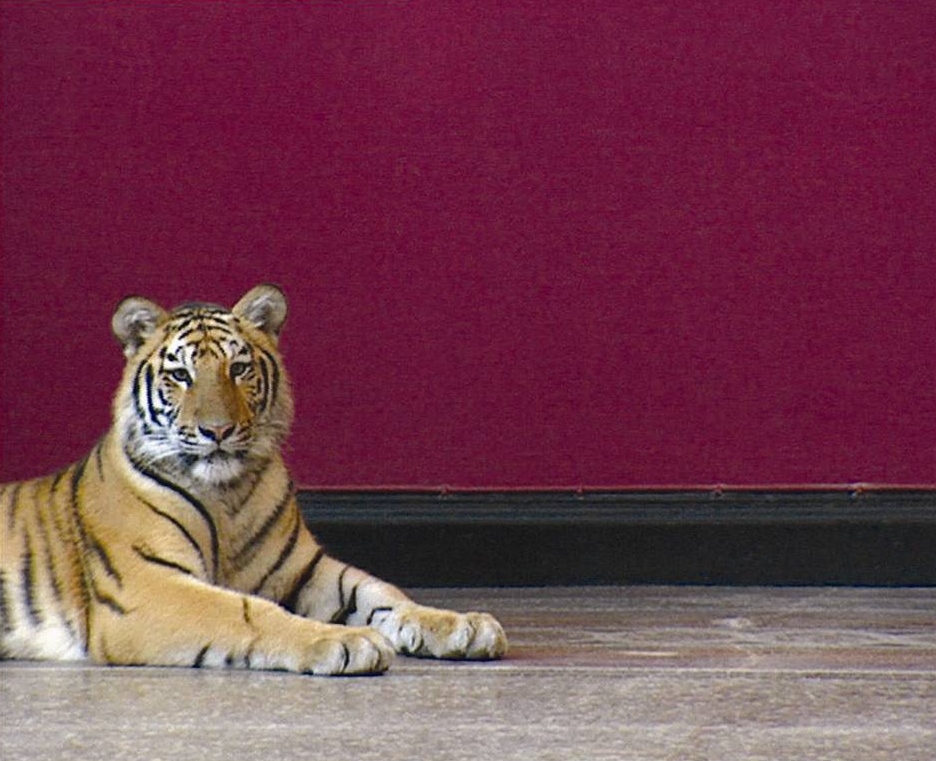 Peter Friedl
Tiger oder Löwe, 2000
Peter Friedl
Tiger oder Löwe, 2000
Video, color, sound
1:05 min., loop
Edition: 3
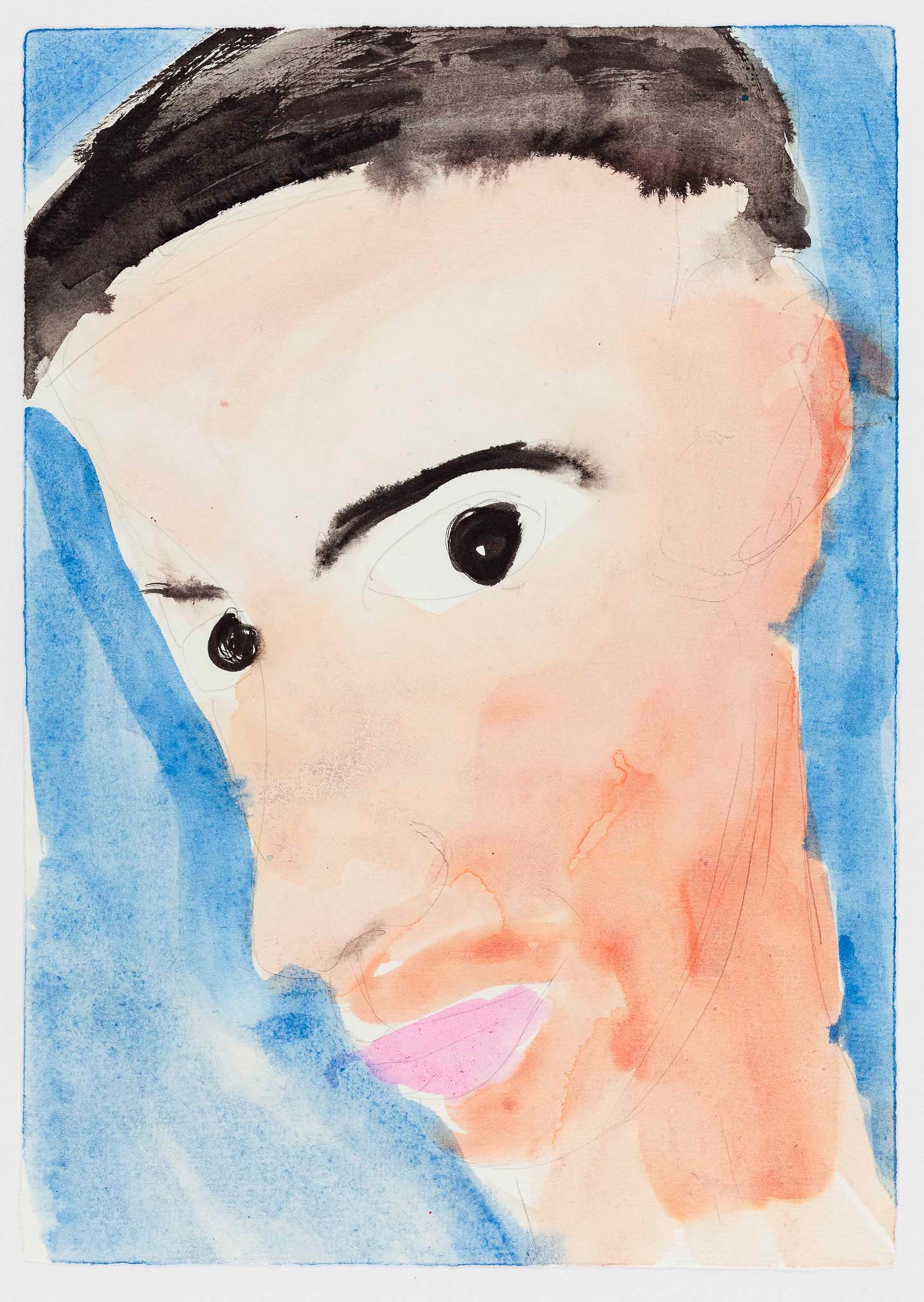 Peter Friedl
Untitled (Mohammed Abu Khdeir), 2014
Peter Friedl
Untitled (Mohammed Abu Khdeir), 2014
(12 Juli 2014)
Watercolor, ink, pencil
29,7 × 21,1 cm
 Peter Friedl
Untitled (2 Juli 2014), 2014
Peter Friedl
Untitled (2 Juli 2014), 2014
Ink, pencil
30,1 × 21,2 cm
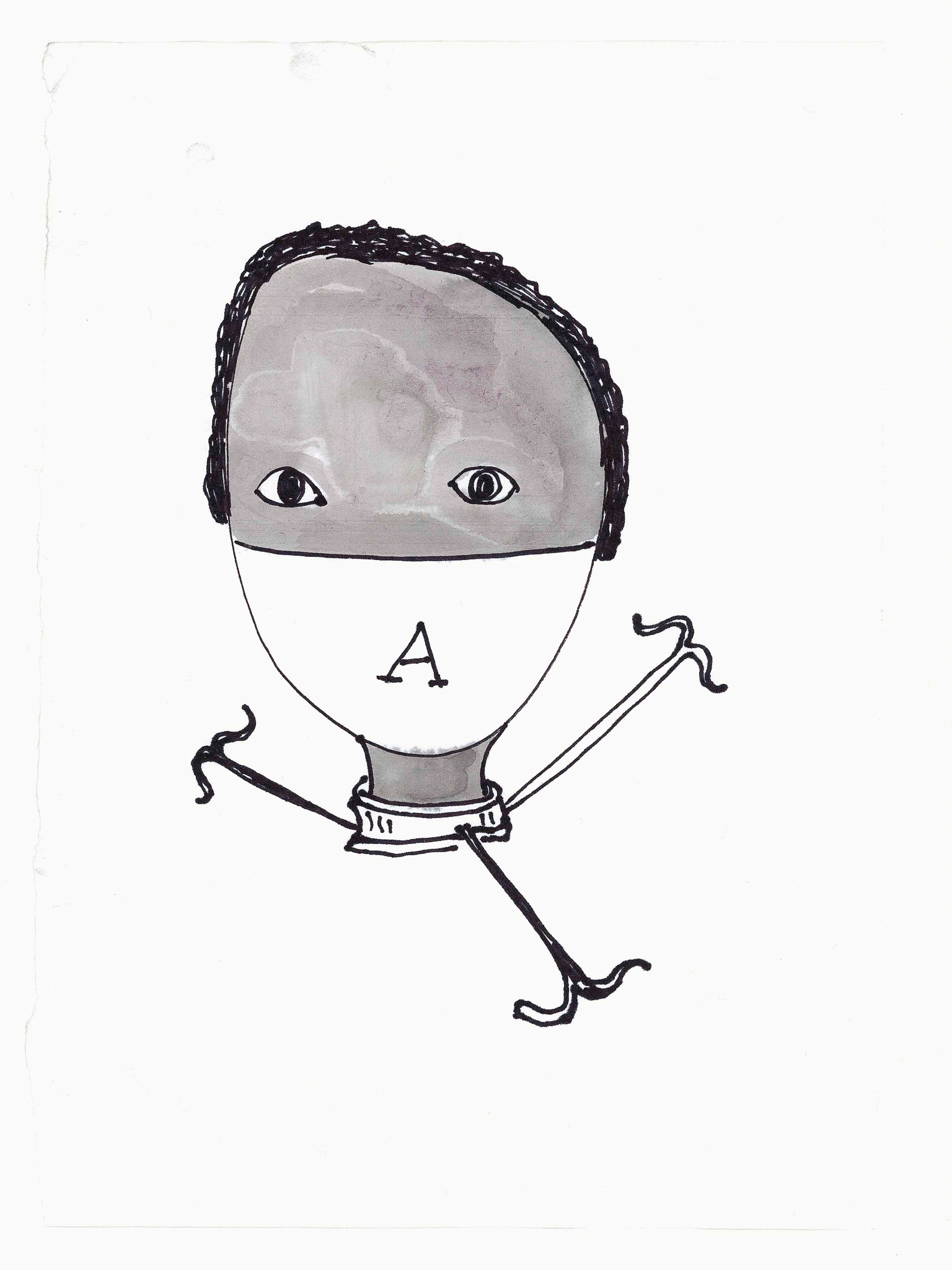 Peter Friedl
Untitled (10 Juni 2014), 2014
Peter Friedl
Untitled (10 Juni 2014), 2014
Ink, marker
21 × 15 cm
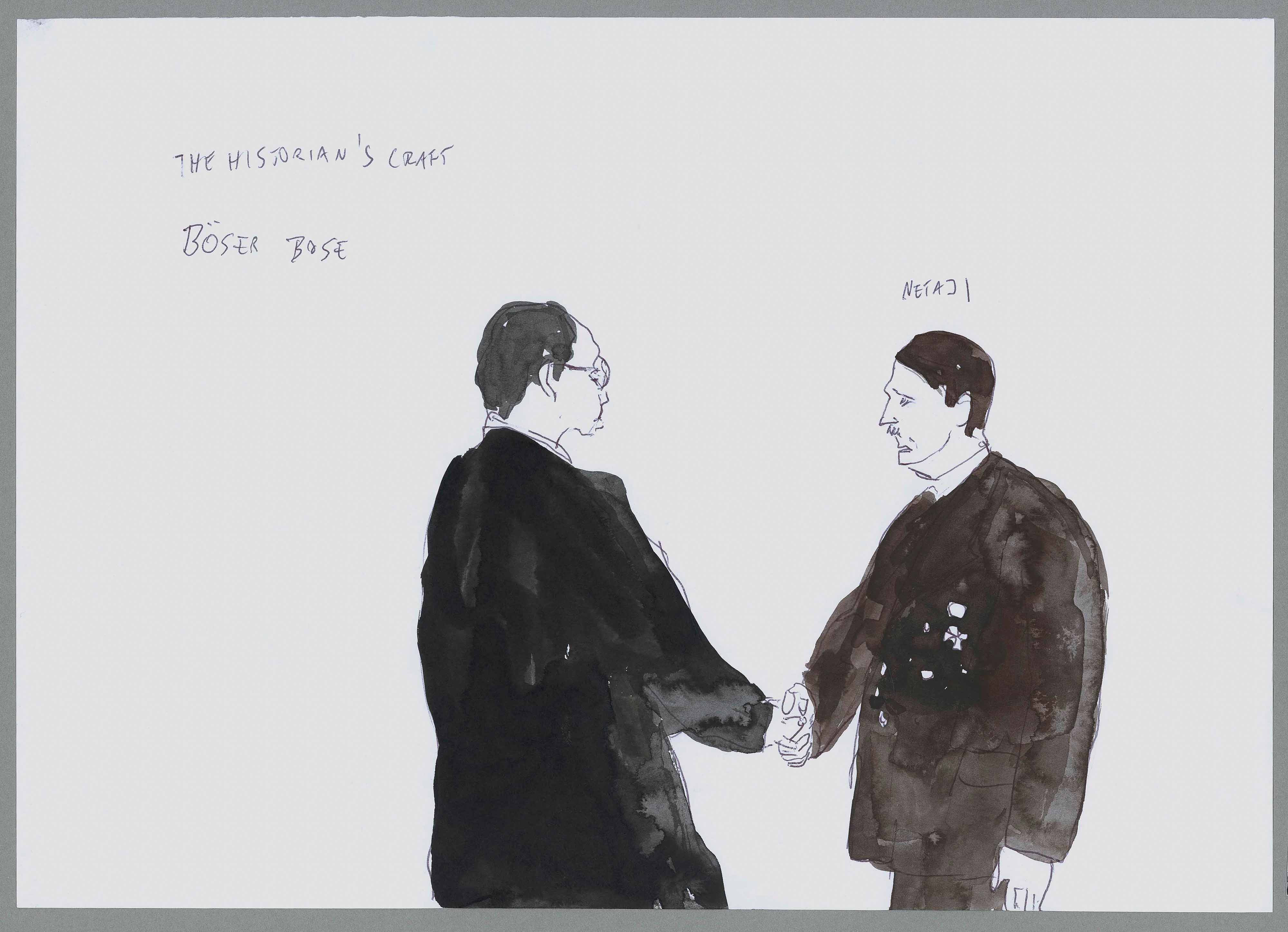 Peter Friedl
Untitled (1 Januar 2014), 2014
Peter Friedl
Untitled (1 Januar 2014), 2014
Ballpoint pen, ink
21 × 29,8 cm
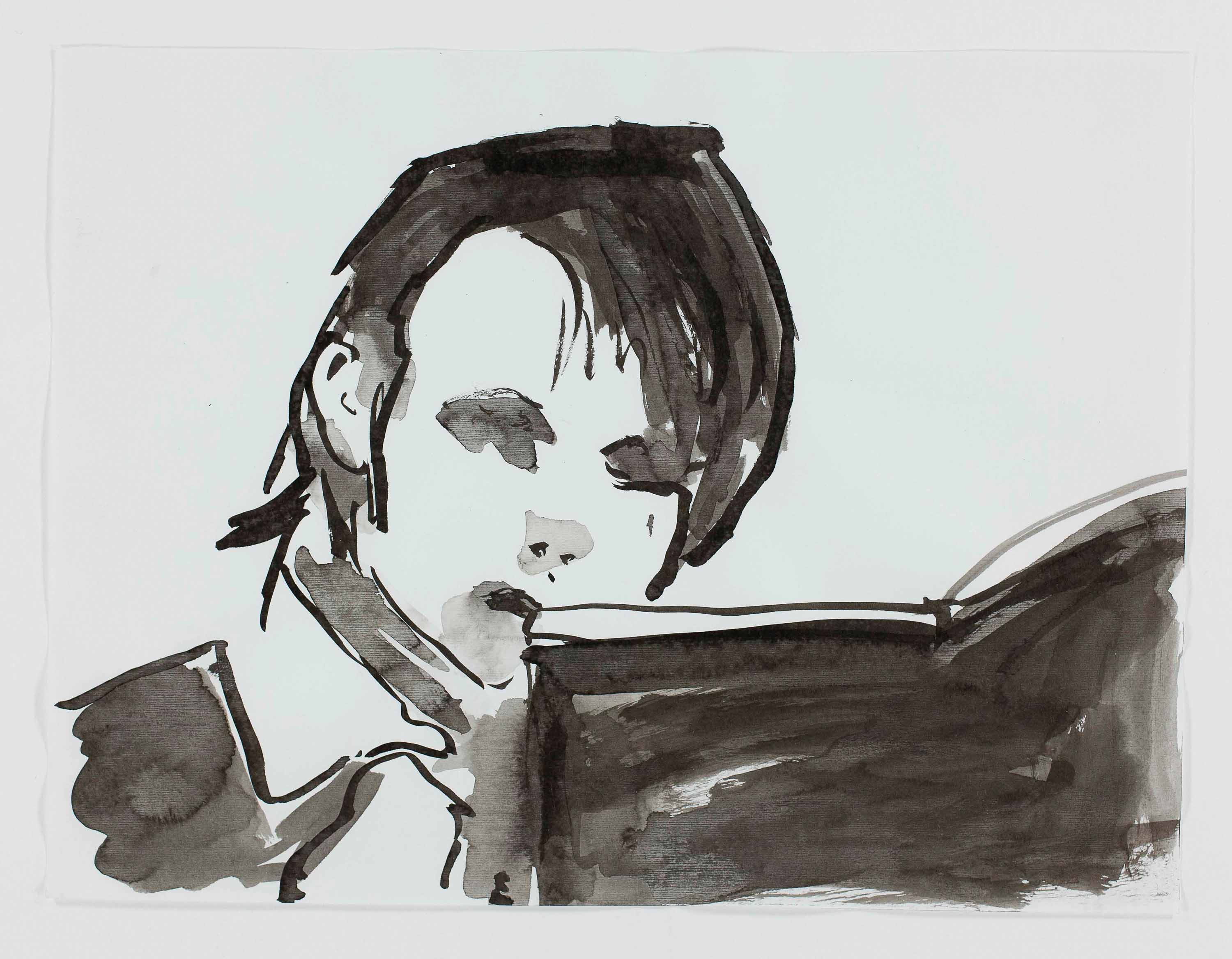 Peter Friedl
Untitled (21 Januar 2013), 2013
Peter Friedl
Untitled (21 Januar 2013), 2013
Ink on paper
21 × 27,9 cm
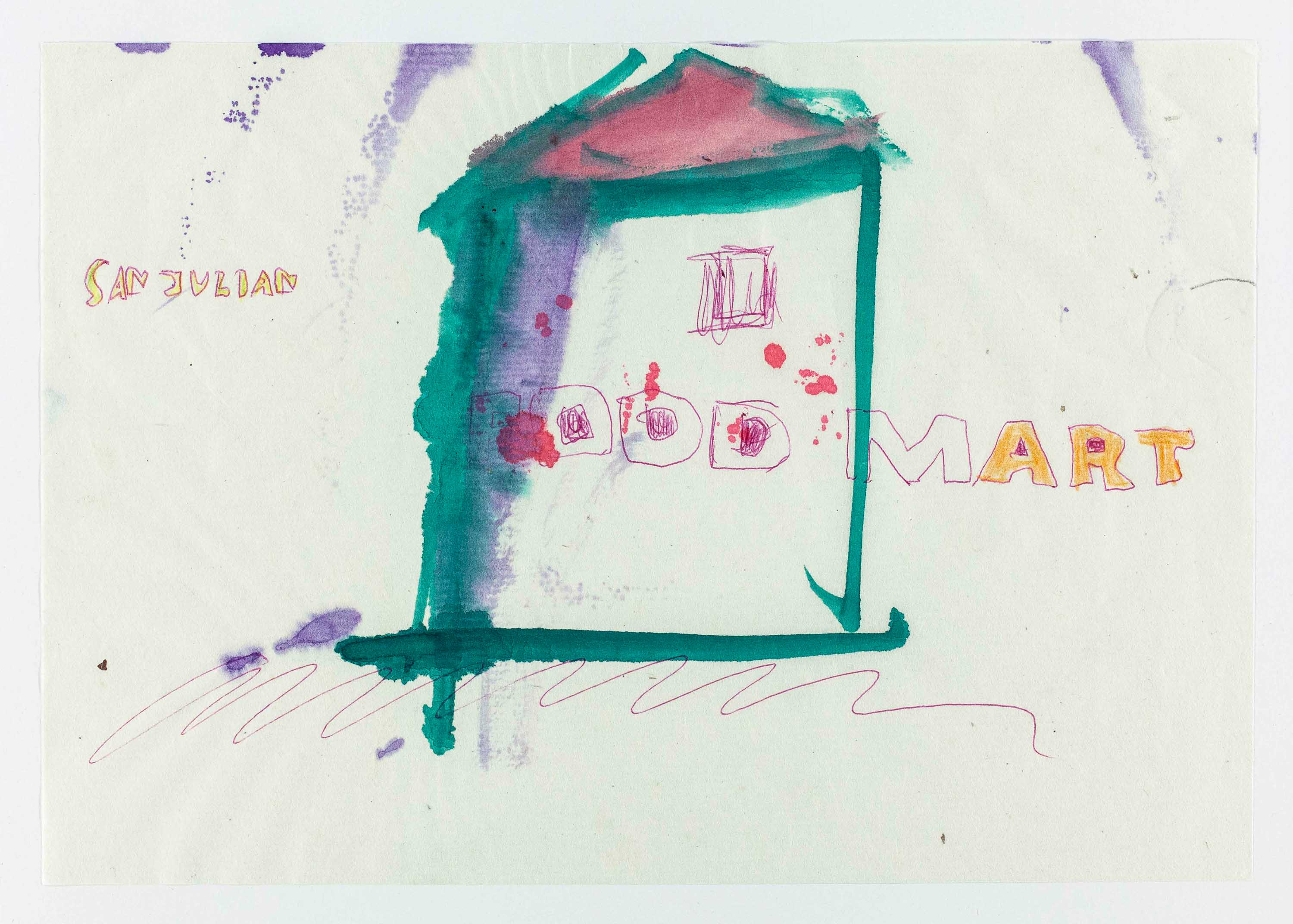 Peter Friedl
Untitled (7 April 2013), 2013
Peter Friedl
Untitled (7 April 2013), 2013
Ballpoint pen, colored pencil, watercolor
20,1 × 29 cm
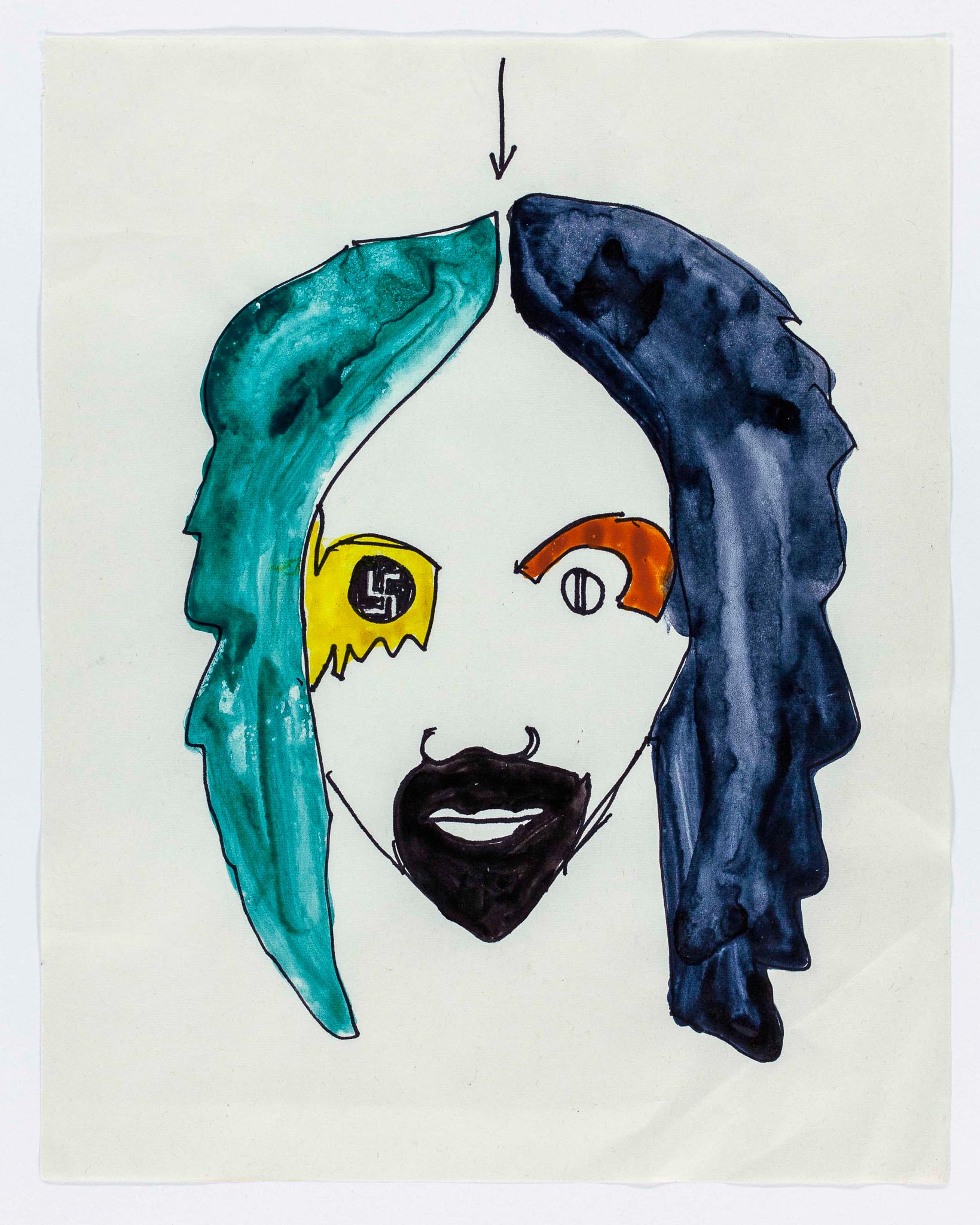 Peter Friedl
Untitled (24 August 2013), 2013
Peter Friedl
Untitled (24 August 2013), 2013
Marker, vegetable color prints
25 × 19,8 cm
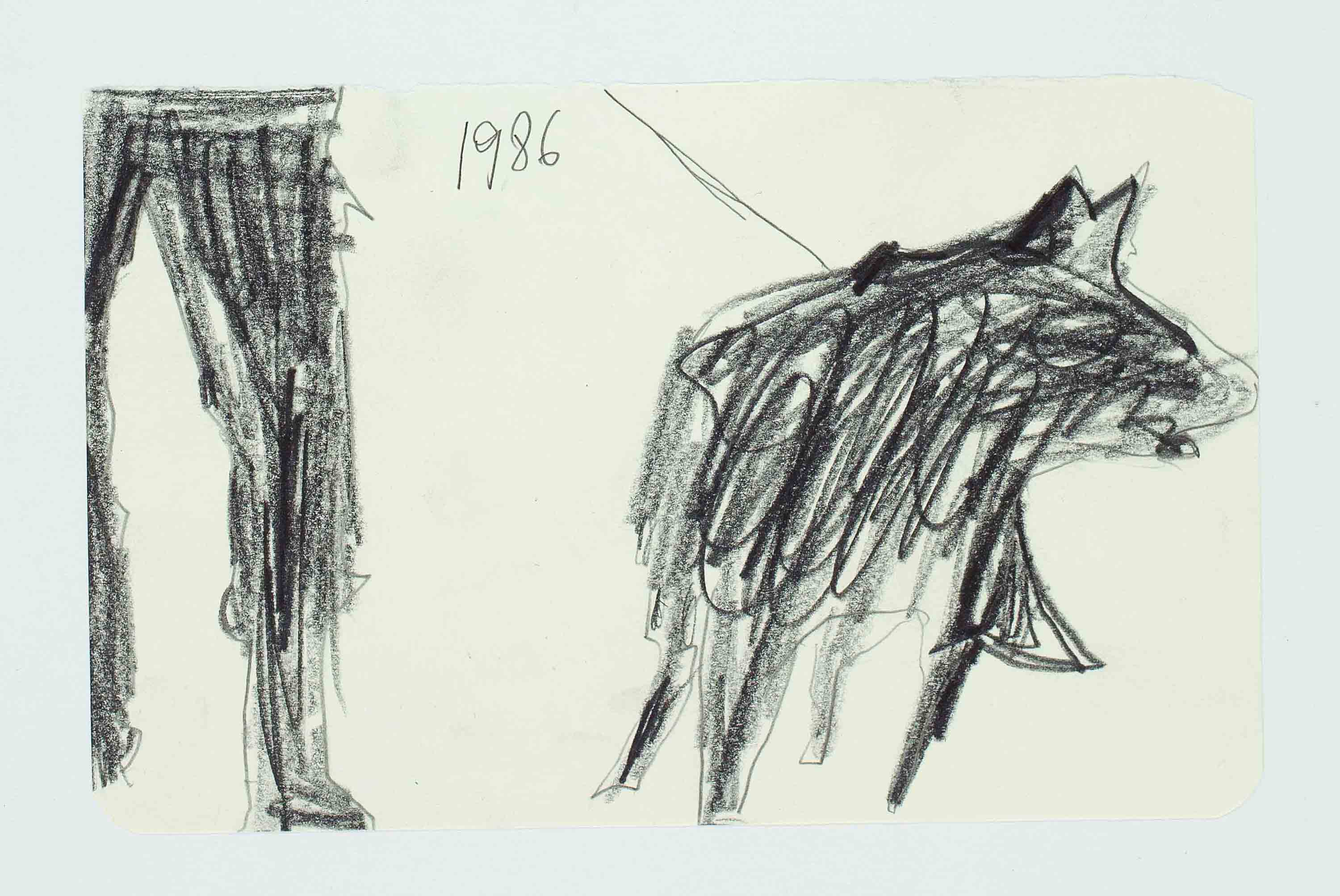 Peter Friedl
Untitled (31 Dezember 2013), 2013
Peter Friedl
Untitled (31 Dezember 2013), 2013
Pencil
8,9 × 14 cm
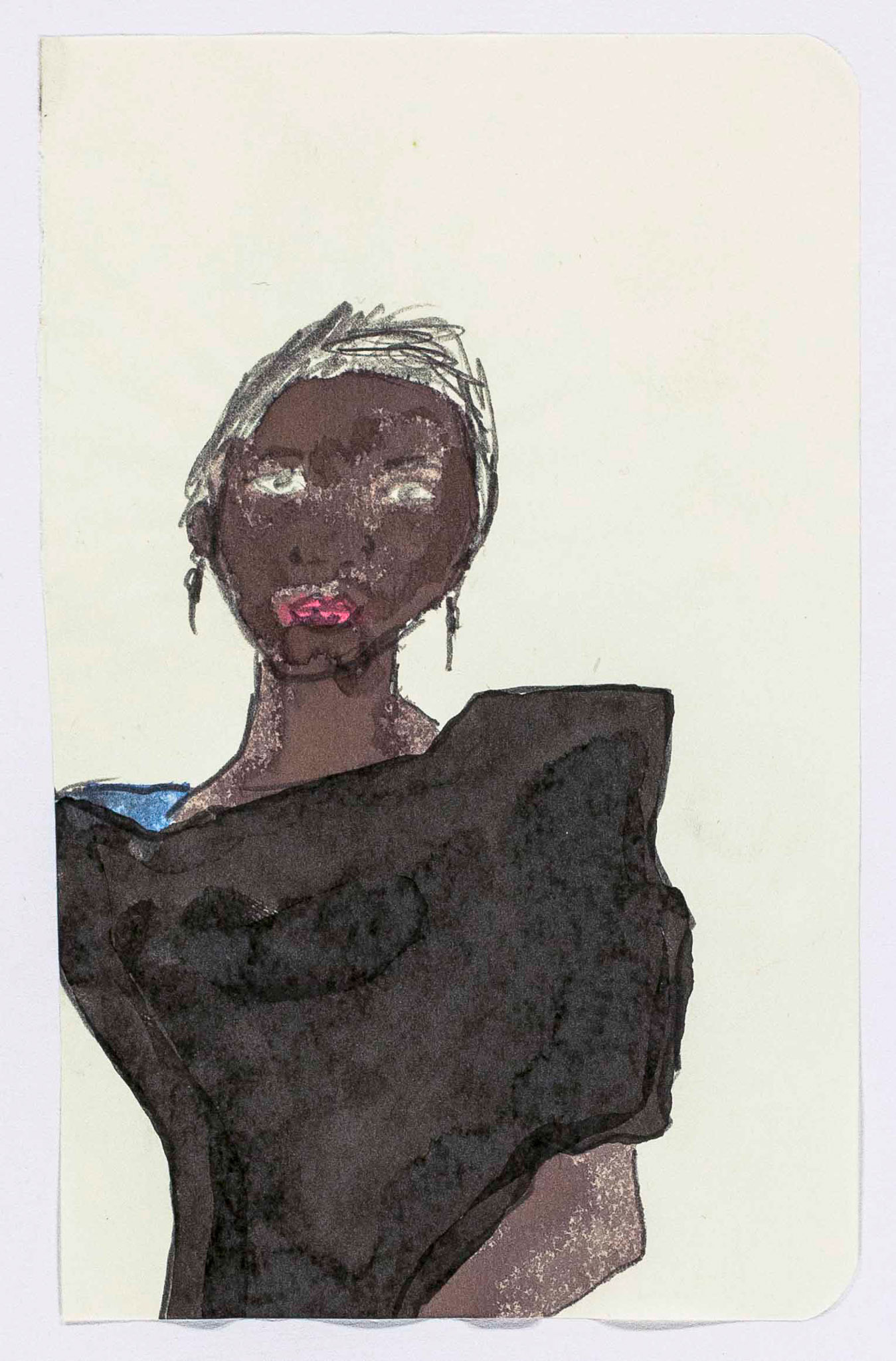 Peter Friedl
Untitled (29 August 2013), 2013
Peter Friedl
Untitled (29 August 2013), 2013
Pencil, ink
13,9 × 8,8 cm
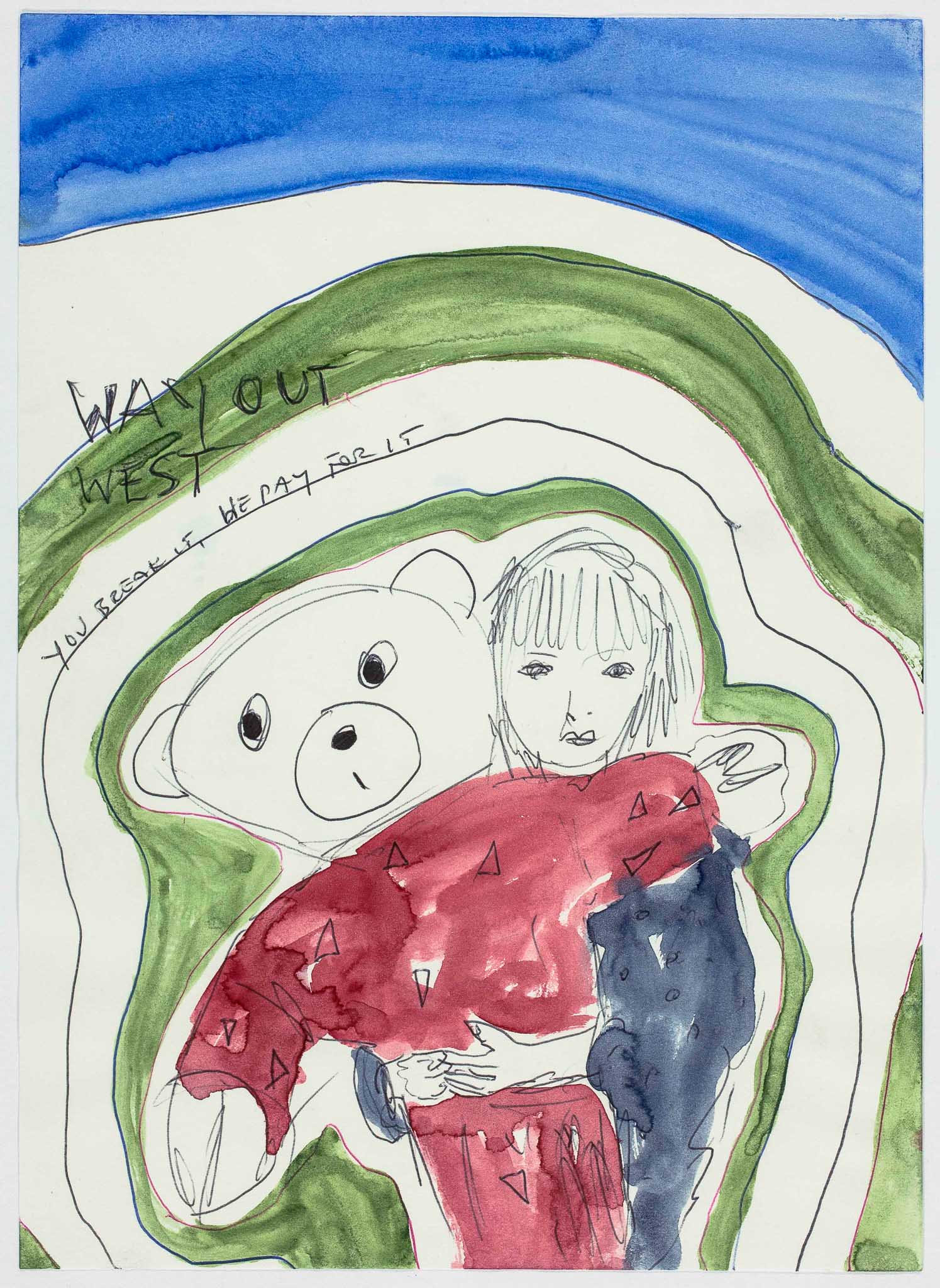 Peter Friedl
Untitled (8 Januar 2013), 2013
Peter Friedl
Untitled (8 Januar 2013), 2013
Watercolor, ballpoint pen, pencil
29,1 × 20,9 cm
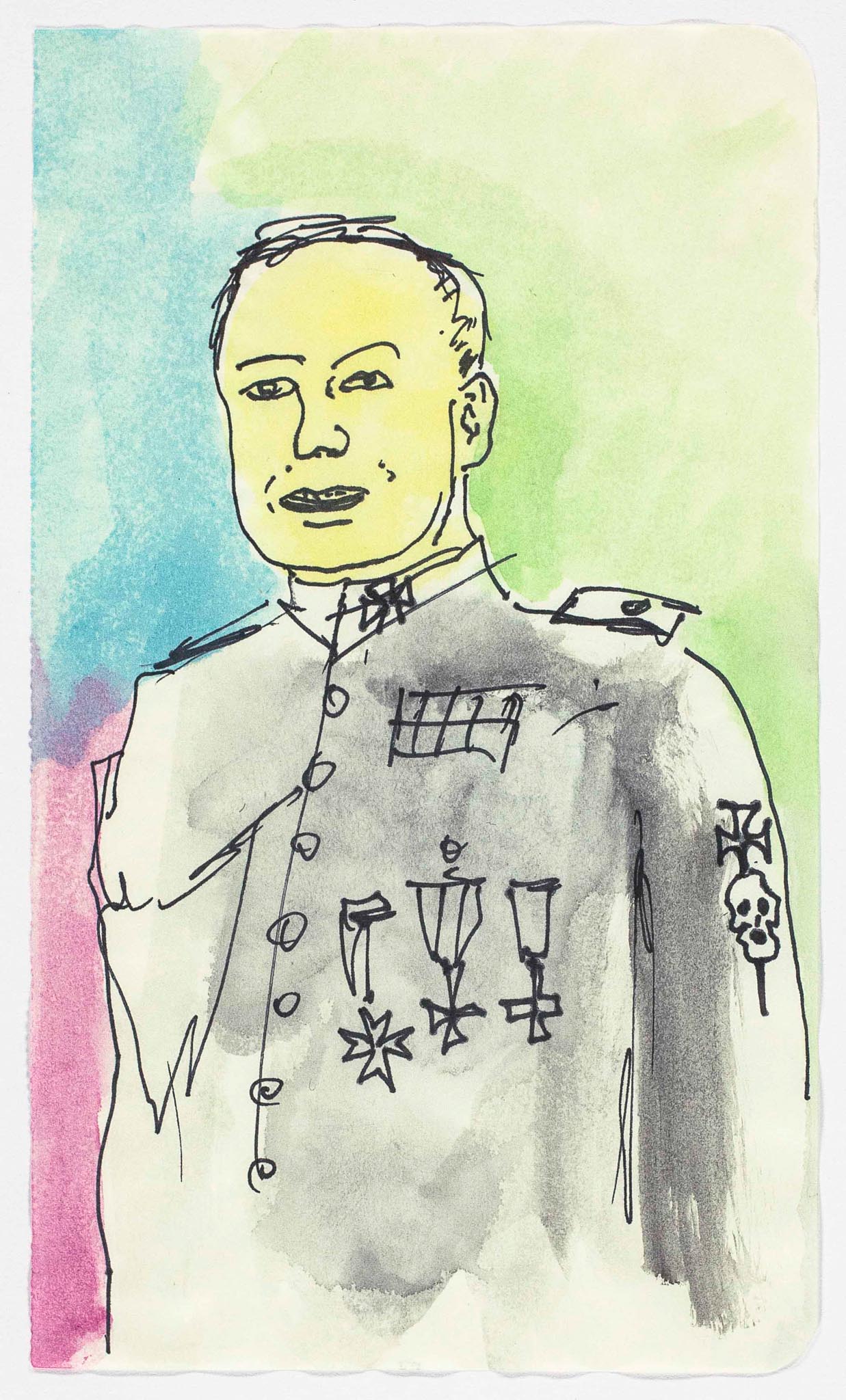 Peter Friedl
Untitled (11 Oktober 2012), 2012
Peter Friedl
Untitled (11 Oktober 2012), 2012
Watercolor, felt tip pen
20,8 × 12,2 cm
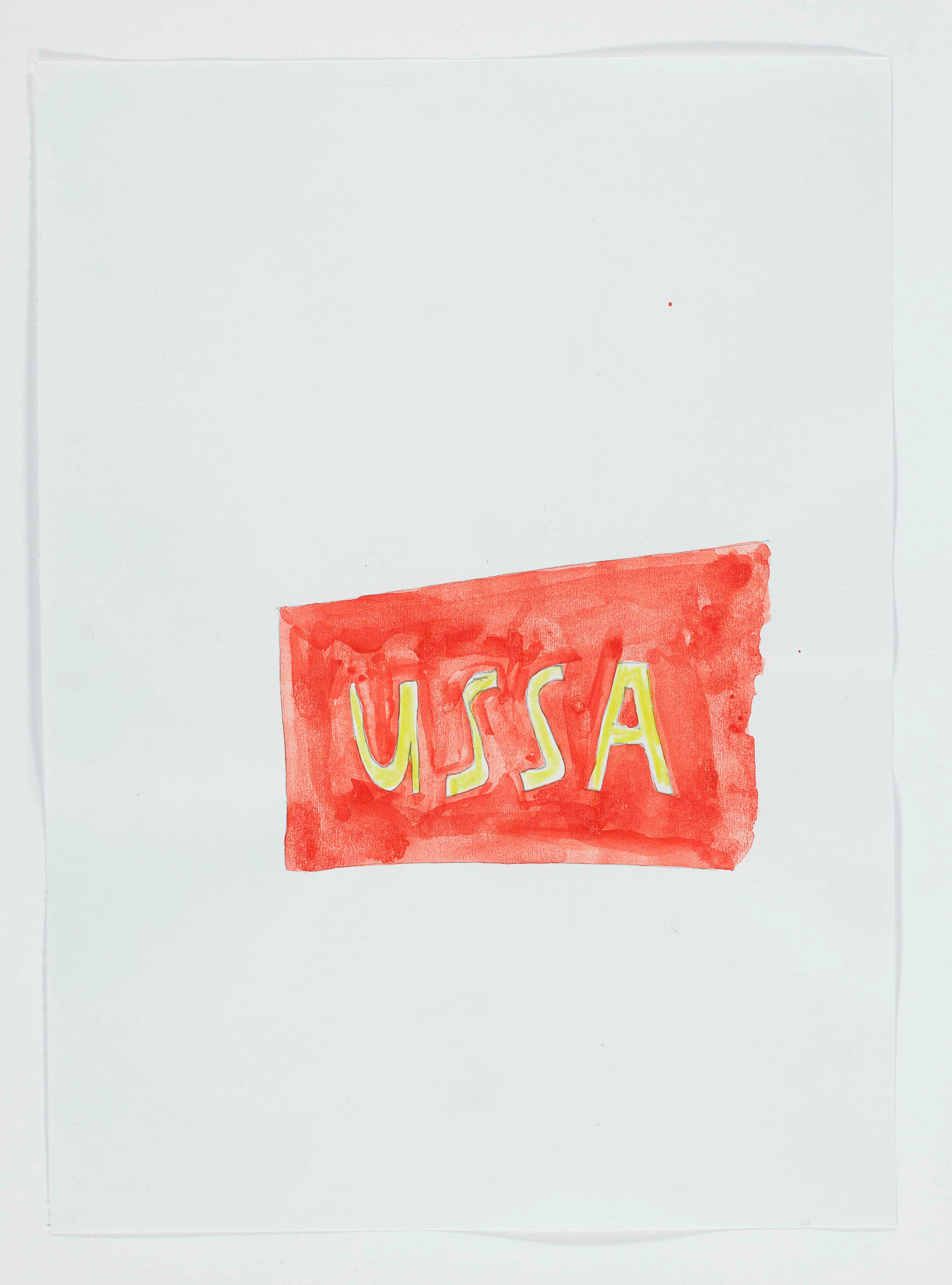 Peter Friedl
Untitled (4 November 2012), 2012
Peter Friedl
Untitled (4 November 2012), 2012
Pencil, watercolor
27,9 x 20,3 cm
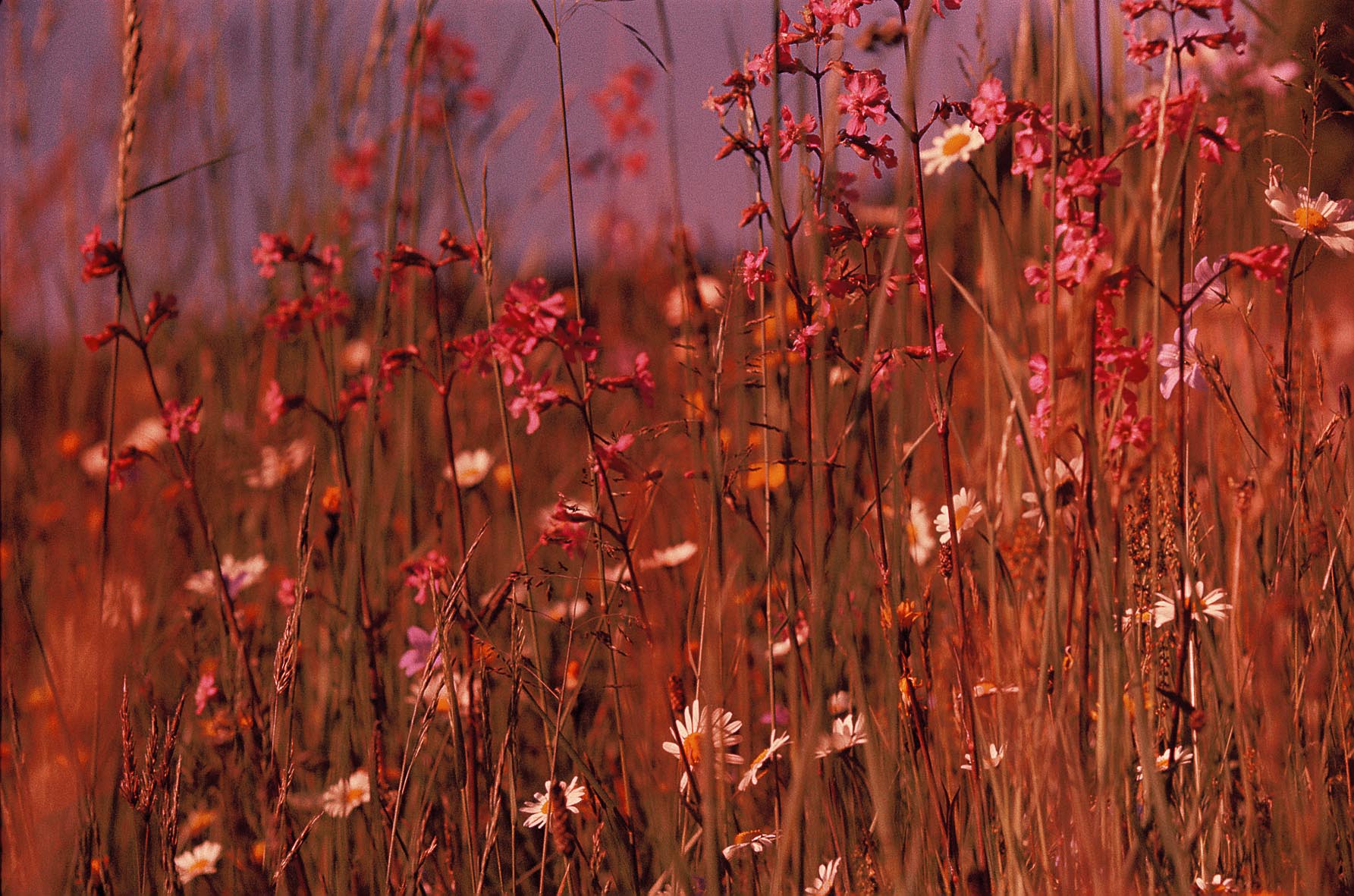 Peter Friedl
Untitled (1962), 2007
Peter Friedl
Untitled (1962), 2007
Color photograph
30 x 45 cm
Edition of 3
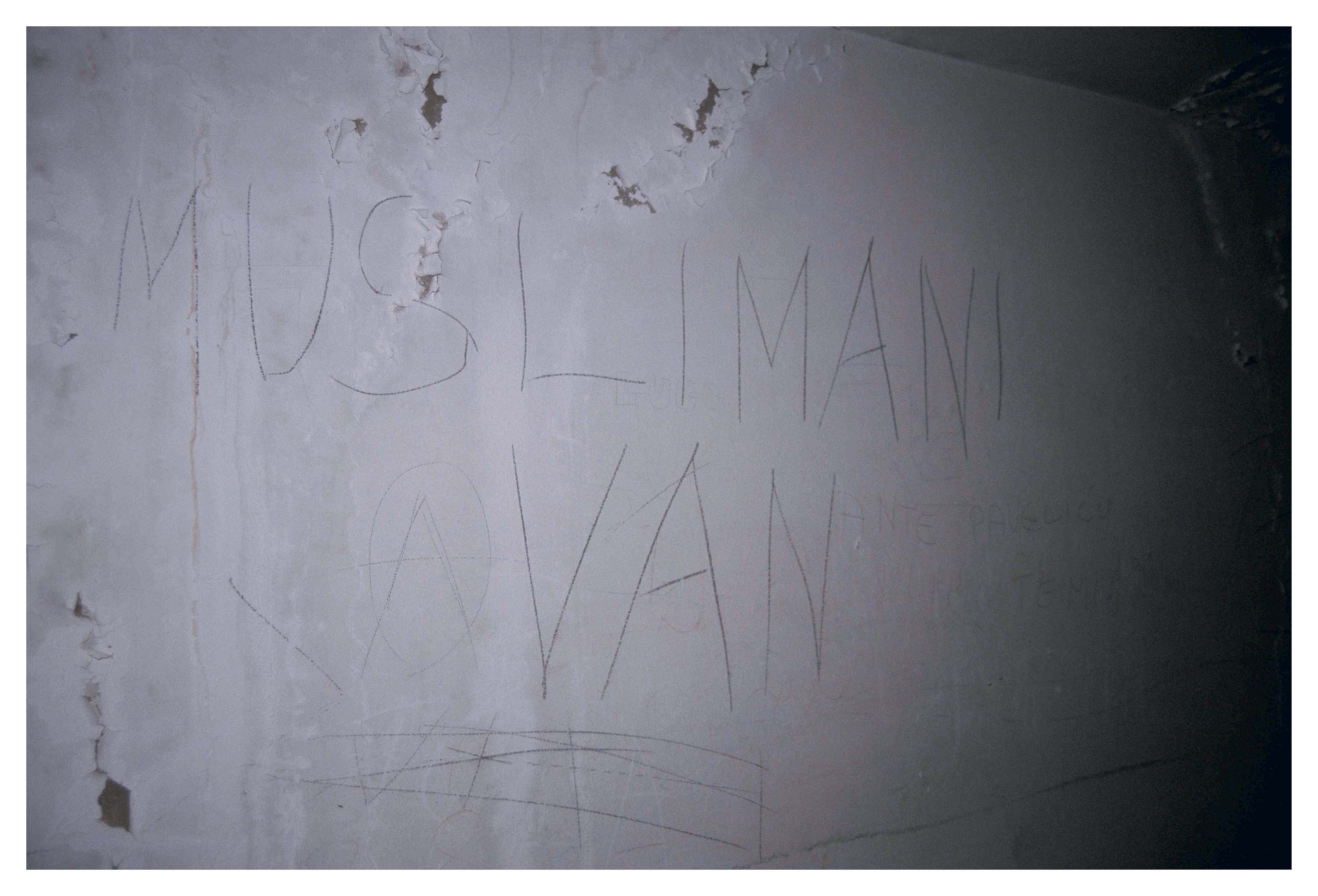 Peter Friedl
Untitled (Hotel Libertas), 2003
Peter Friedl
Untitled (Hotel Libertas), 2003
Color photograph
80 x 120 cm
Edition of 3
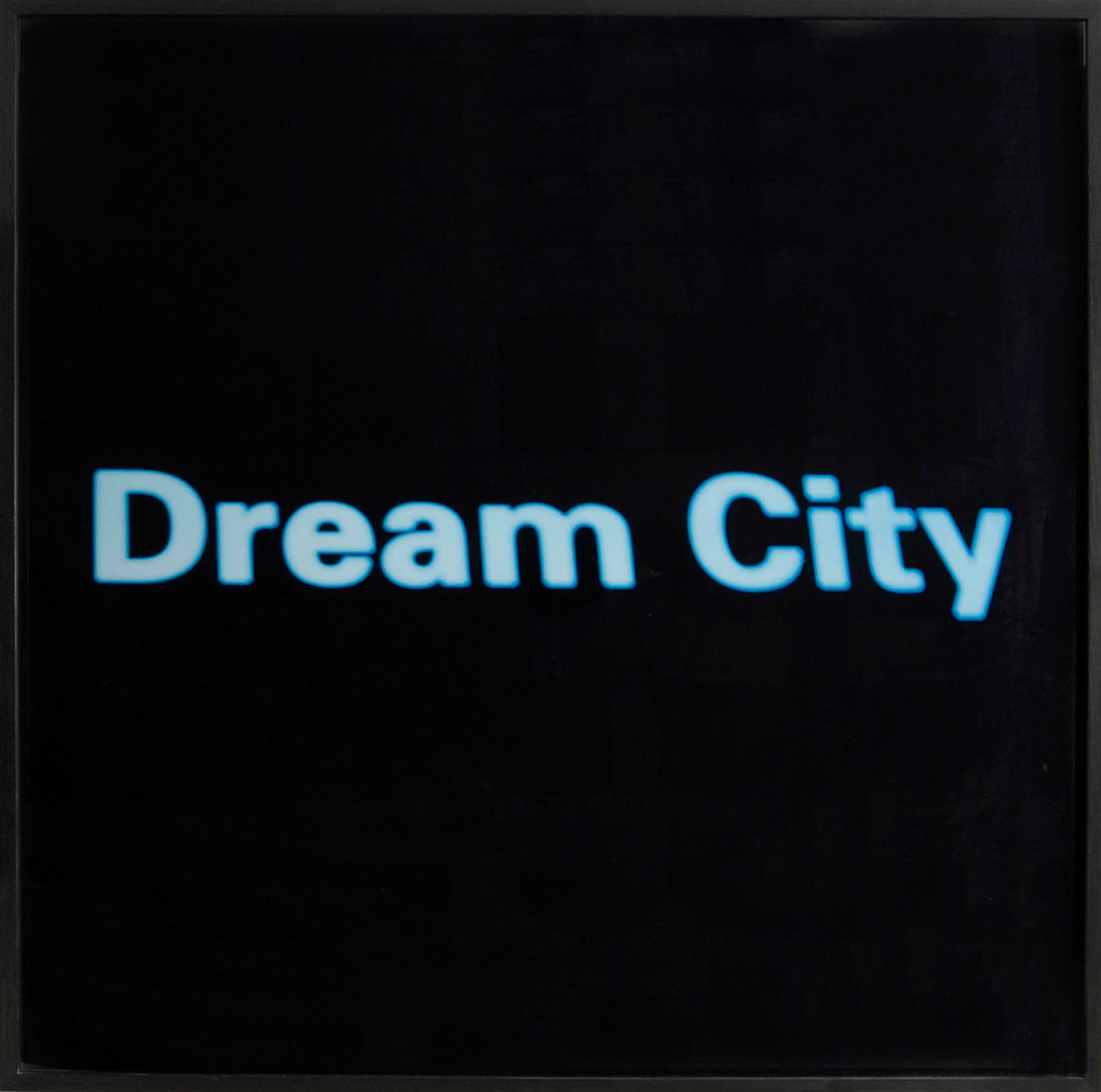 Peter Friedl
Dream City, 1999
Peter Friedl
Dream City, 1999
Color photograph
80 × 80 cm
Edition of 6
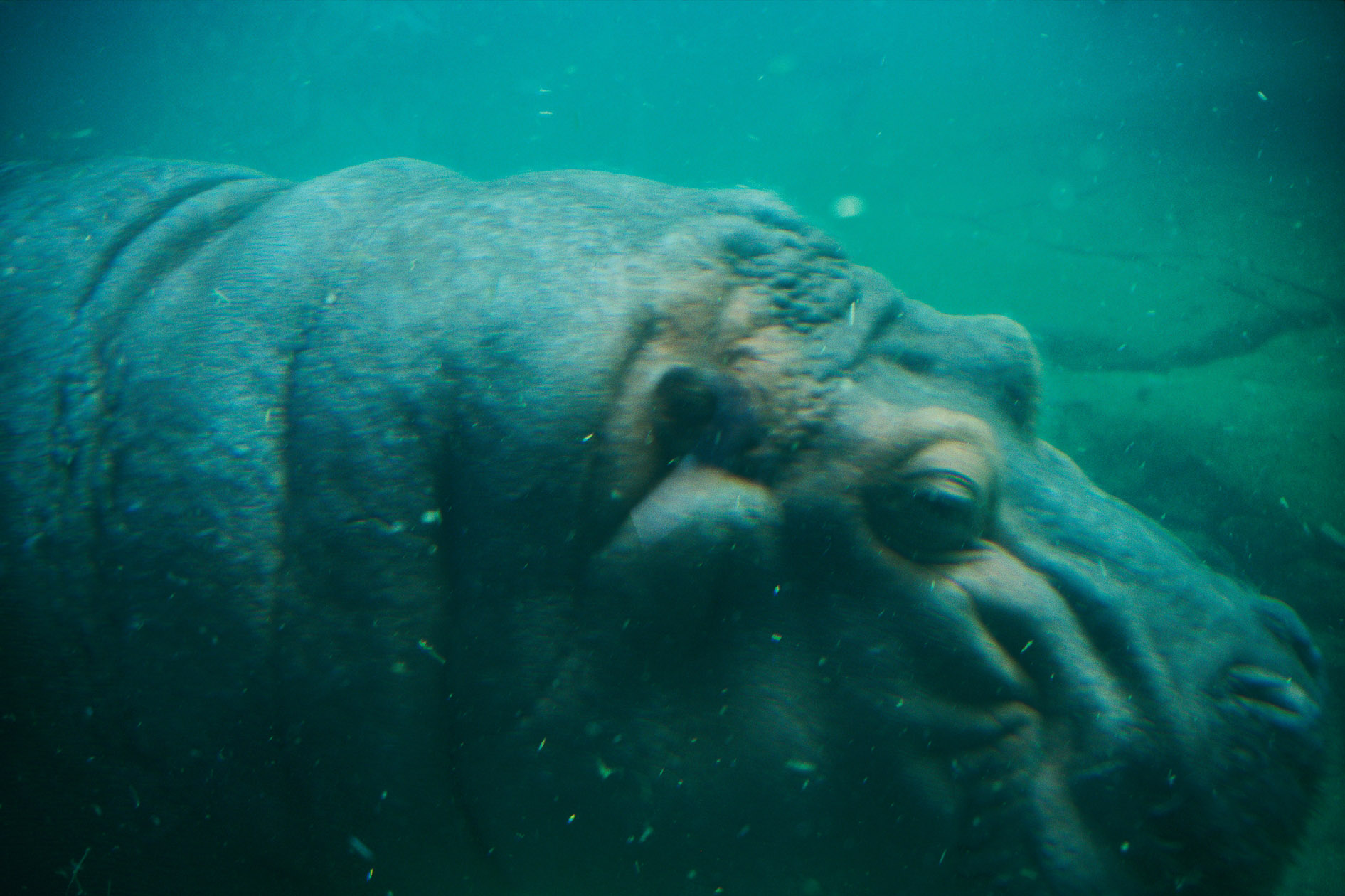 Peter Friedl
Untitled (San Diego), 1999
Peter Friedl
Untitled (San Diego), 1999
Color photograph
80 x 120 cm
Edition of 3
 Peter Friedl
Untitled (Berlin), 1996
Peter Friedl
Untitled (Berlin), 1996
Offset print on paper
8 parts, 237 × 336 cm
Edition of 12
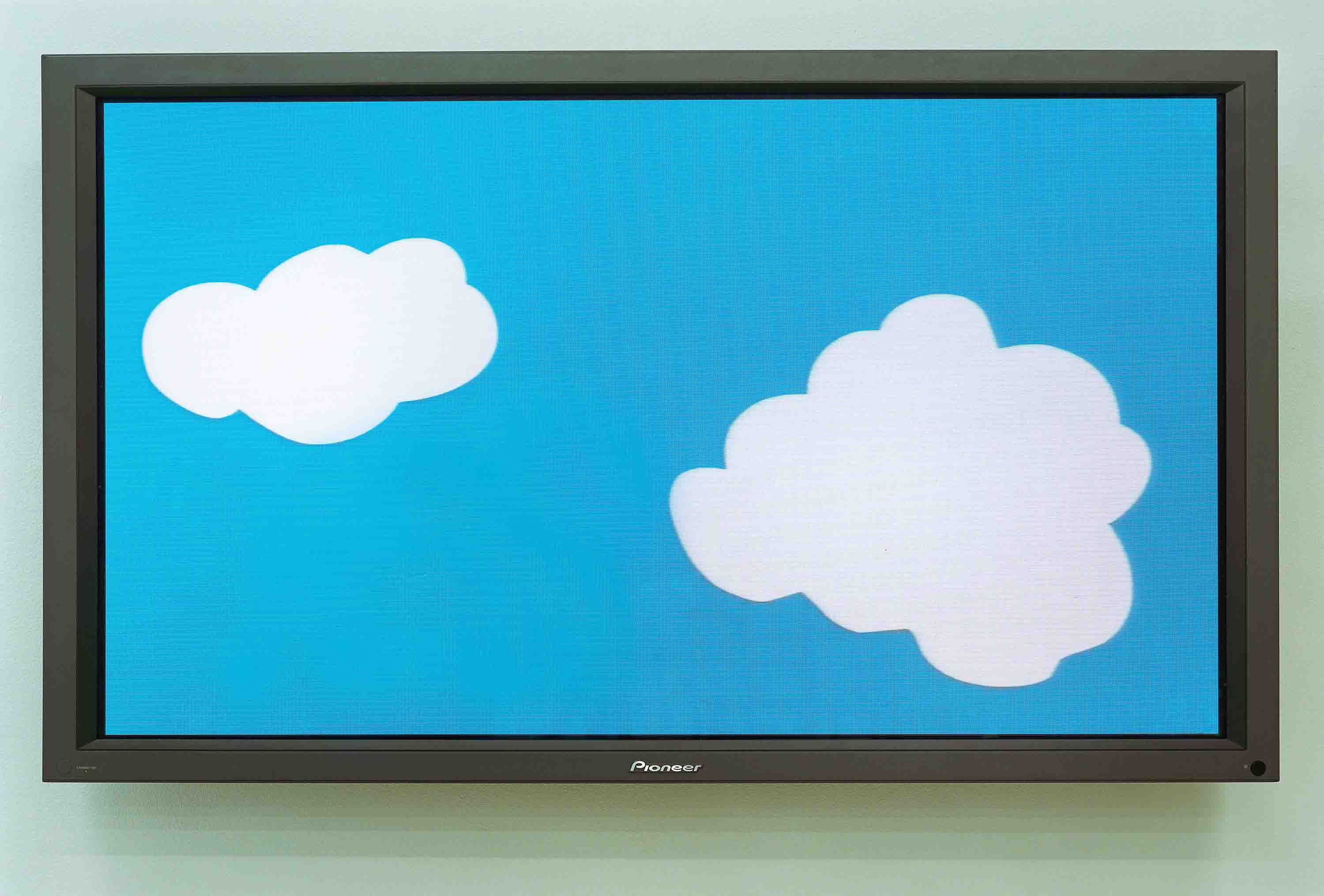 Peter Friedl
No Photography, 2004
Peter Friedl
No Photography, 2004
Computer animation, 4:15 min., loop
Edition of 3
No Photography (2004) refers to the political division of Cyprus, but in a broader sense to the question “What is a border?” and thereby also to the history of other divisions. The frame around the context-less plasma screen places a border around a quiet, innocuous scene, in which white clouds slowly drift from left to right across a blue sky, a border which recalls the classic picture, while at the same time going far beyond. Friedl in fact photographed real clouds in the sky over the no-photography zone of the “Green Line” that has divided Cyprus for decades. The cloud images were then animated in the studio. The computer animation was originally part of the larger exhibition project OUT OF THE SHADOWS, realized by the artist at the Witte de With, center for contemporary art, in Rotterdam. The less realistic the moving clouds appear, the clearer their function as a means of aesthetic reflection, for example, on art’s ability to be political. Cultural historian Mieke Bal writes, “No Photography appears to ask the question how far you can, must go, beyond contextualism.”
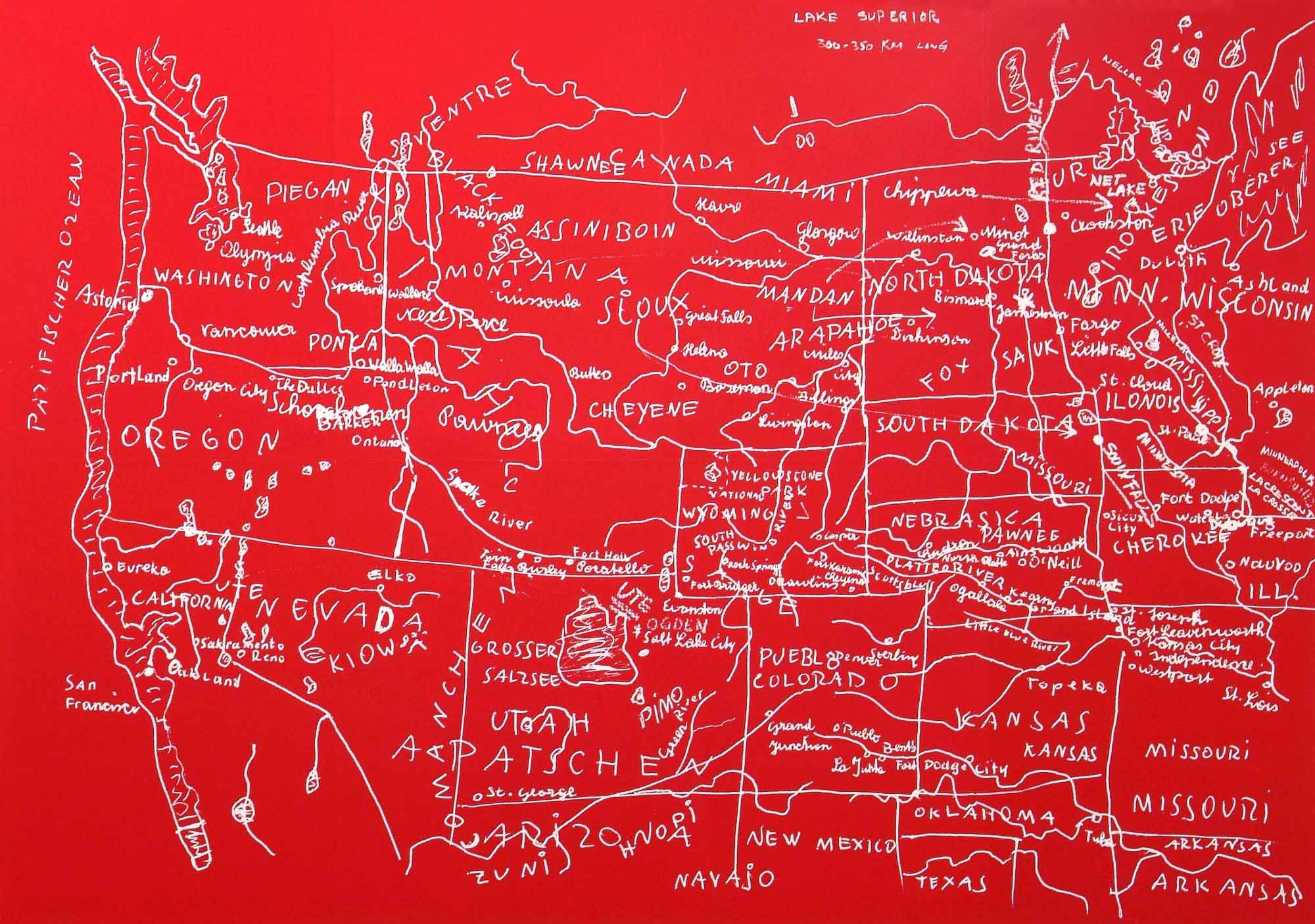 Peter Friedl
Map, 2005
Peter Friedl
Map, 2005
Silkscreen on paper, 8 parts
233 x 334 cm
Edition of 12
Peter Friedl greift mit Map, 1969 - 2005 eine eigene Kinderzeichnung auf: Seine Karte der Vereinigten Staaten benennt Territorien nordamerikanischer Indianerstämme. Biografische, historische und fiktionale Referenzen verbinden sich zu einer Art von mentaler Geografie. Über Vergrößerung, Umkehrung und Farbgebung wird aus dem autobiografischen Dokument ein Posterbild, das sich als Kommentar zur Ikonografie des Mapping und zur Inszenierung von Historie lesen lässt.
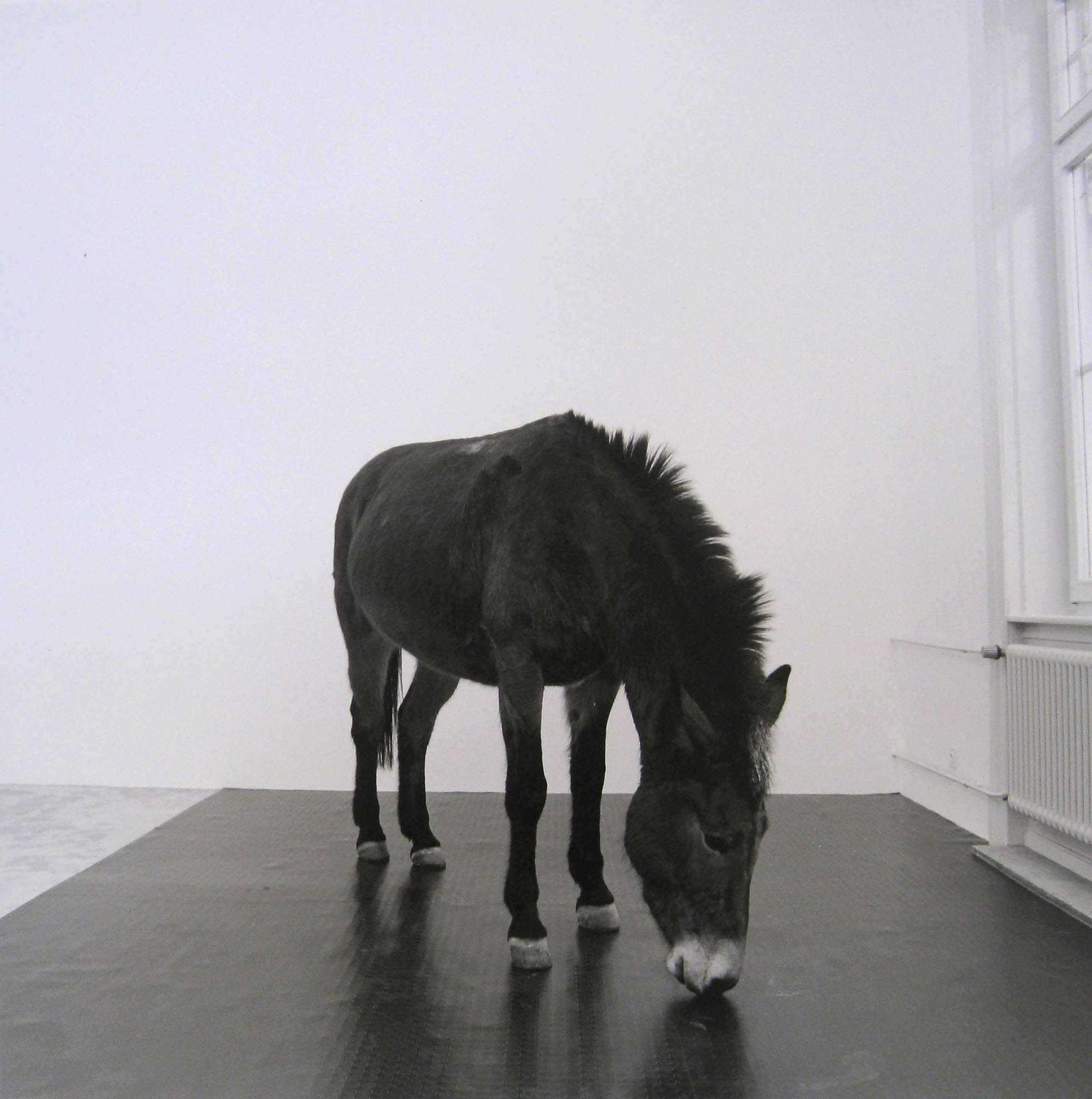 Peter Friedl
Forty acres and a mule, 2001
Peter Friedl
Forty acres and a mule, 2001
Black & white photograph
40 × 40 cm
Frame: 50 × 50 cm
Edition of 12